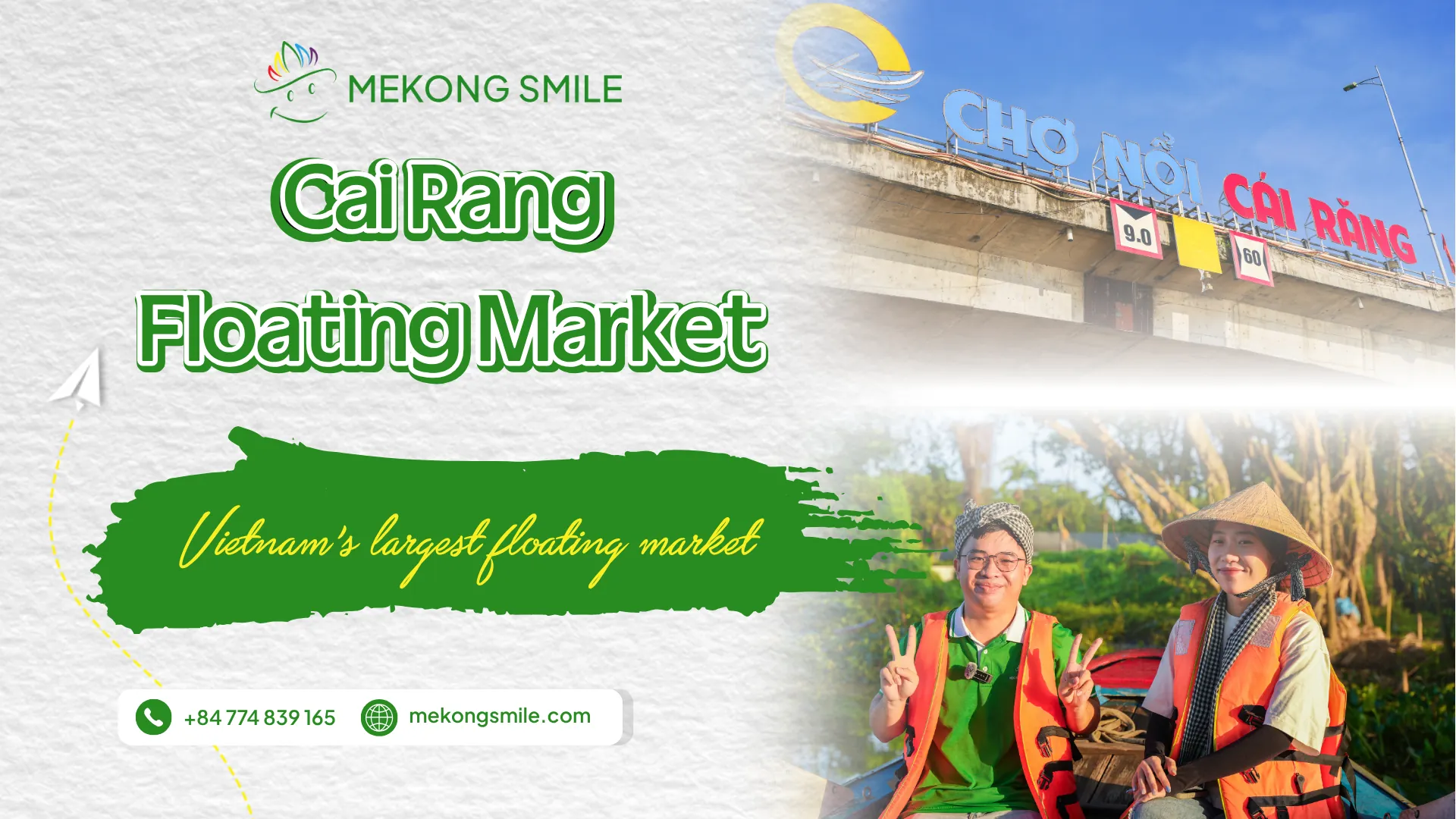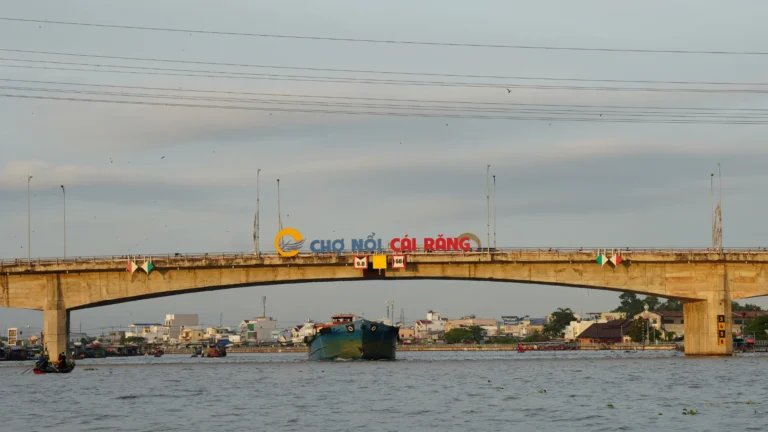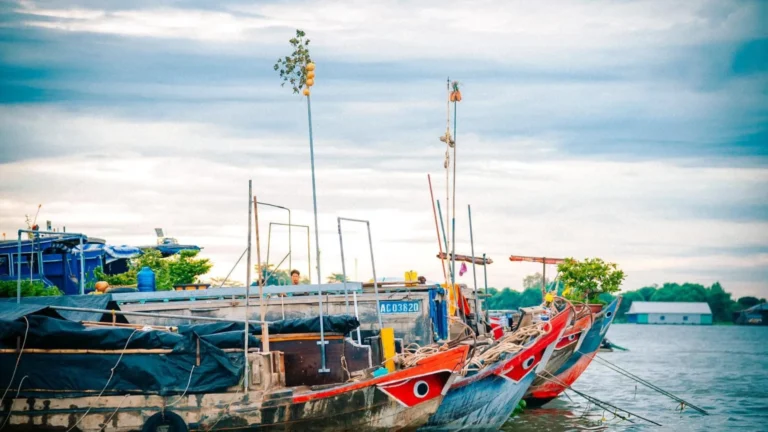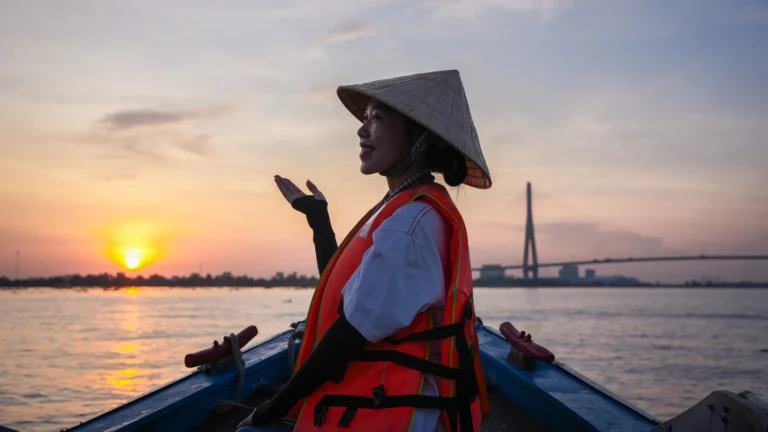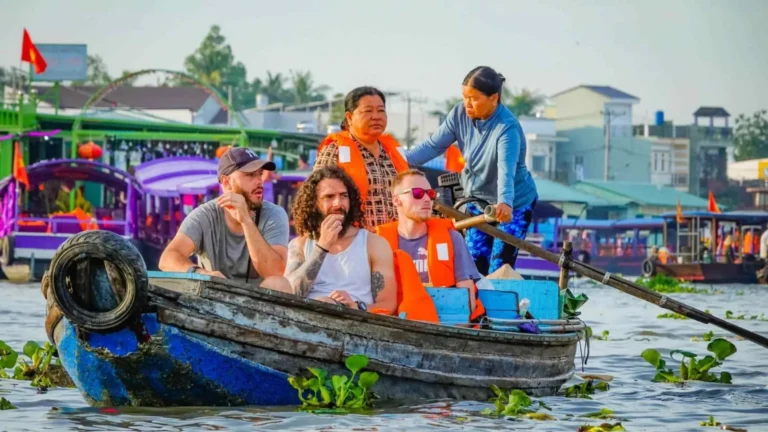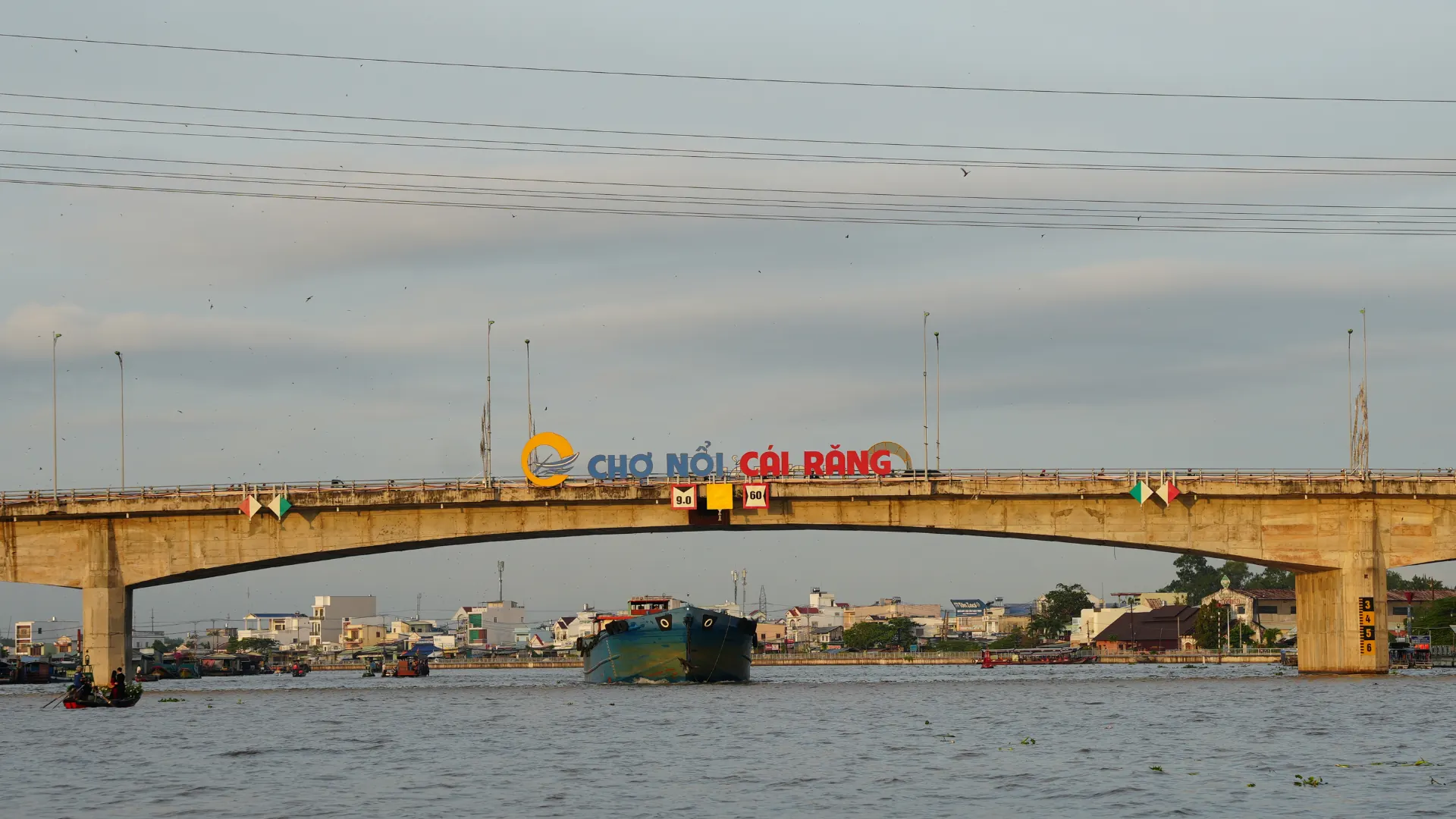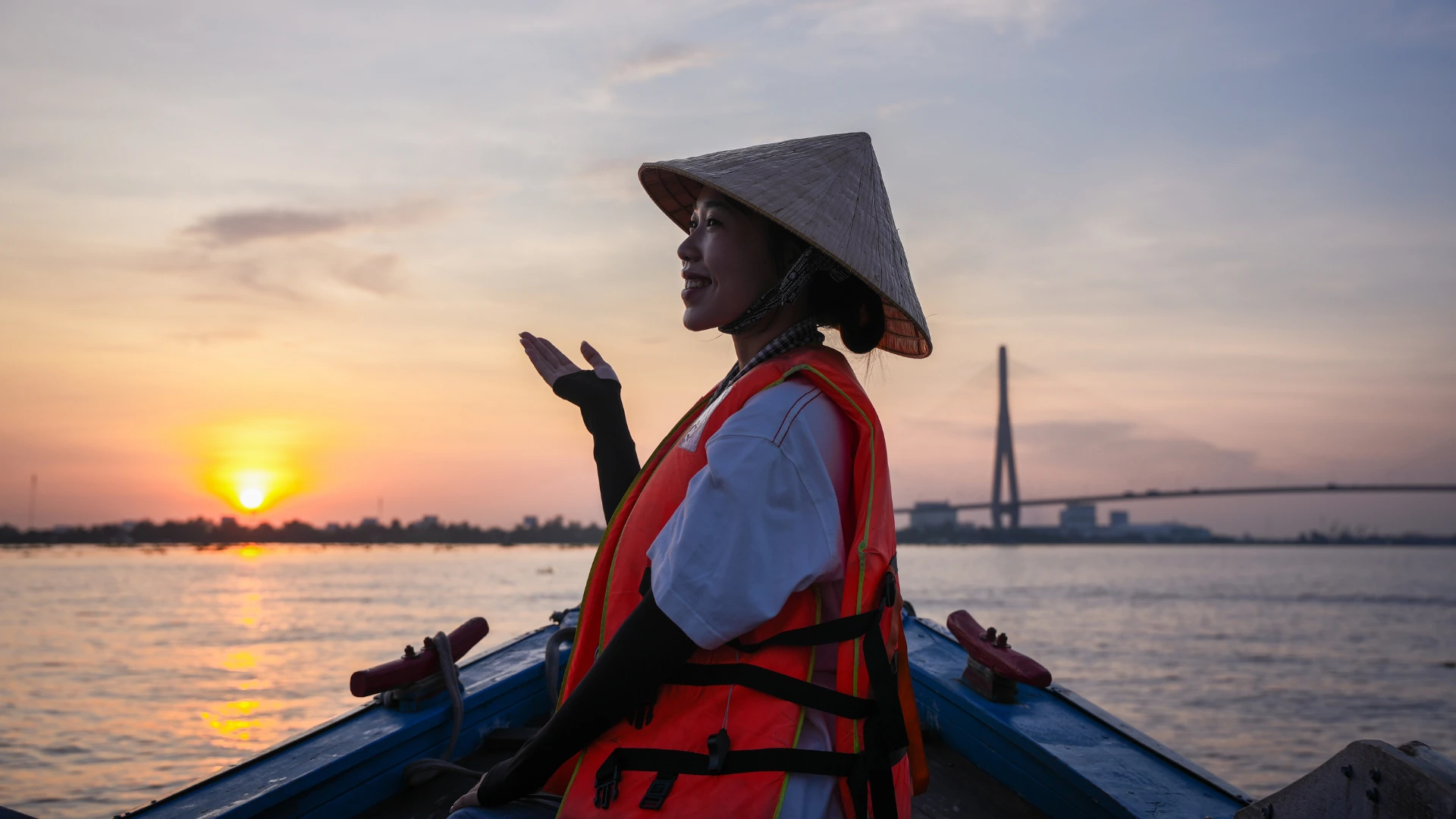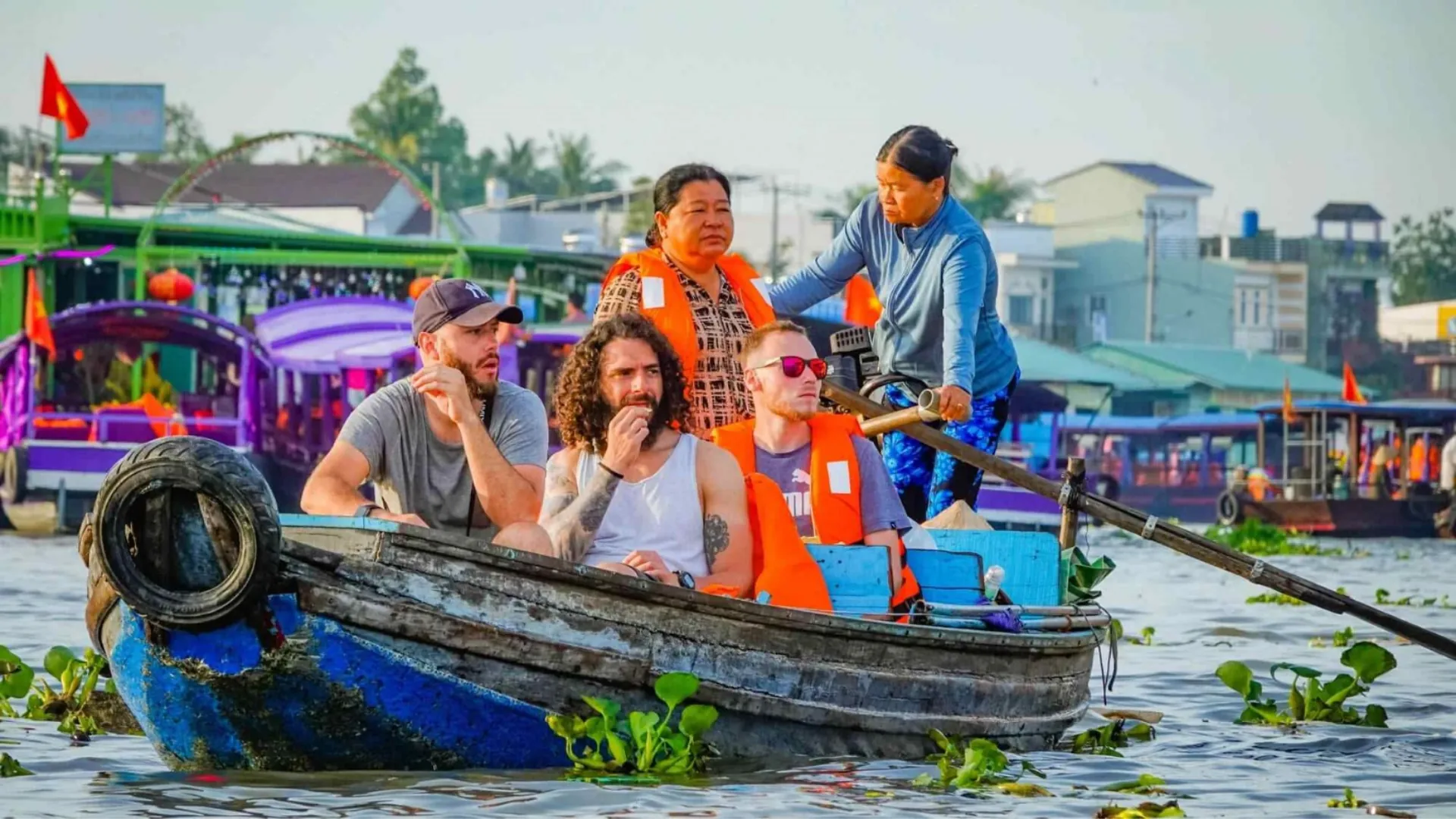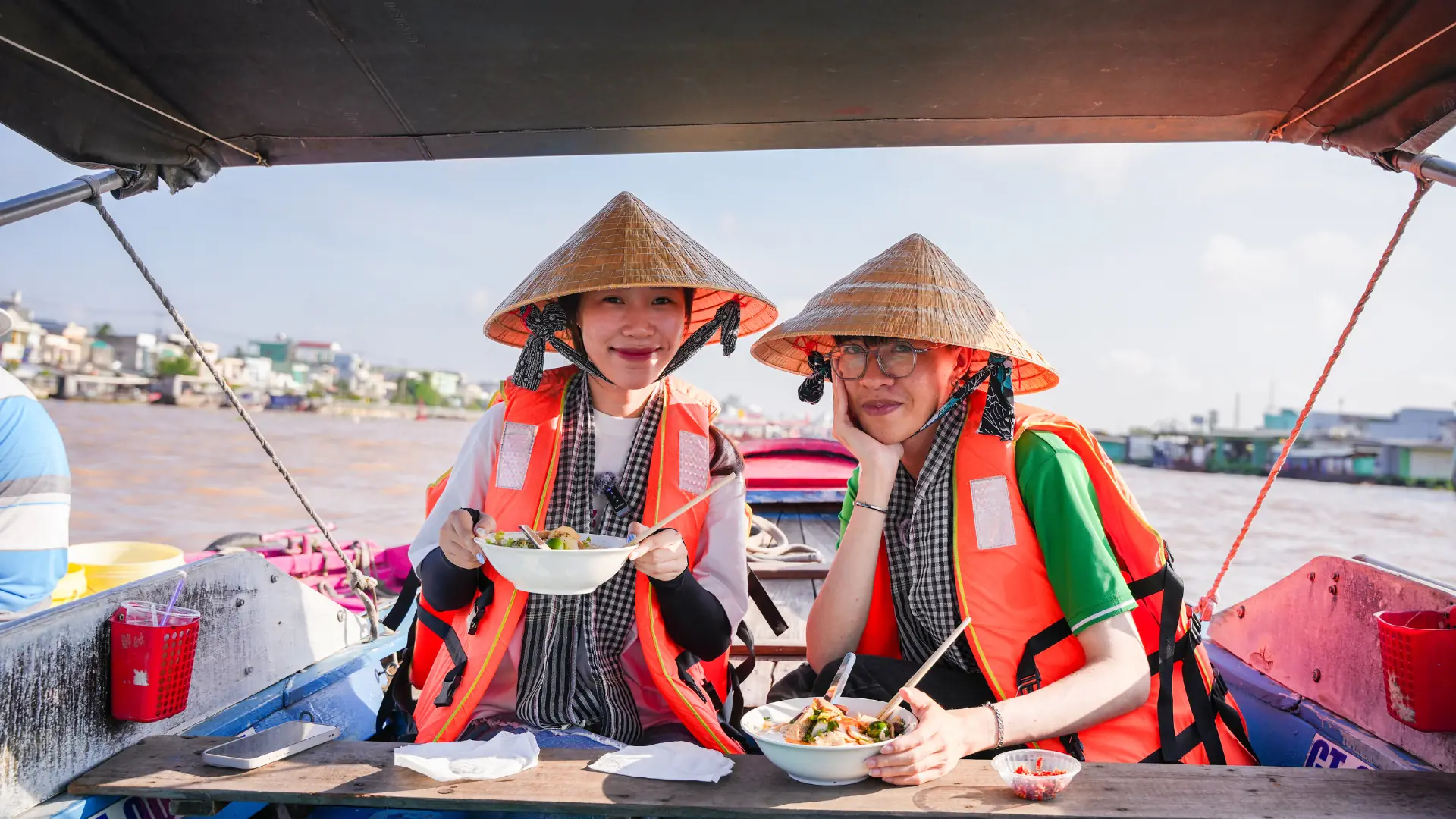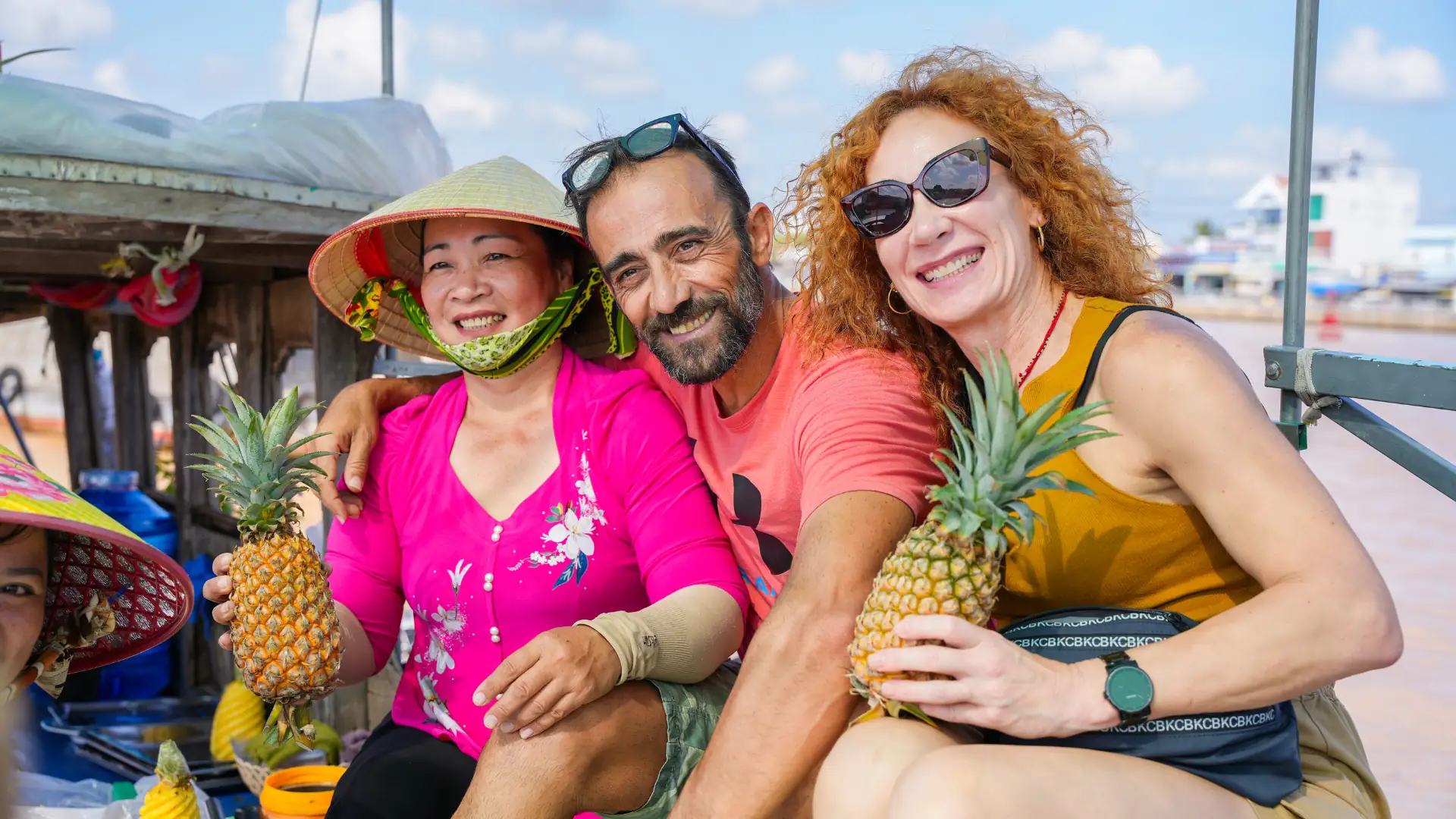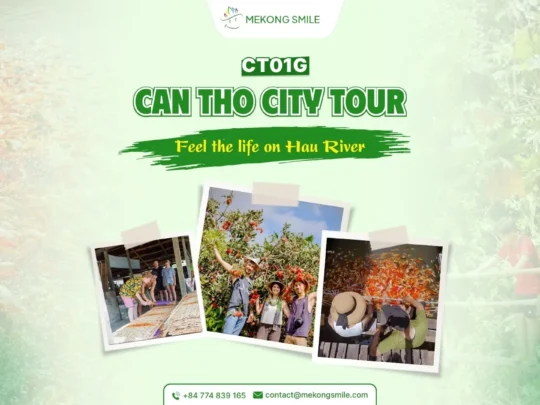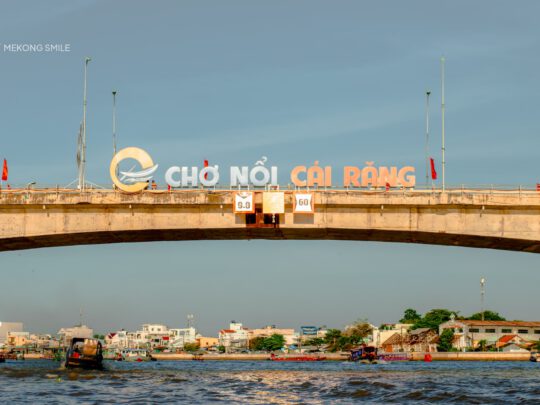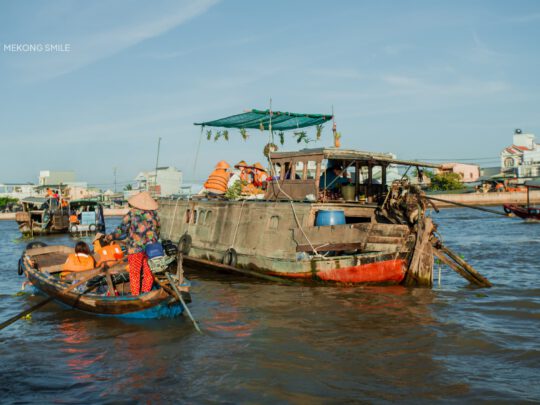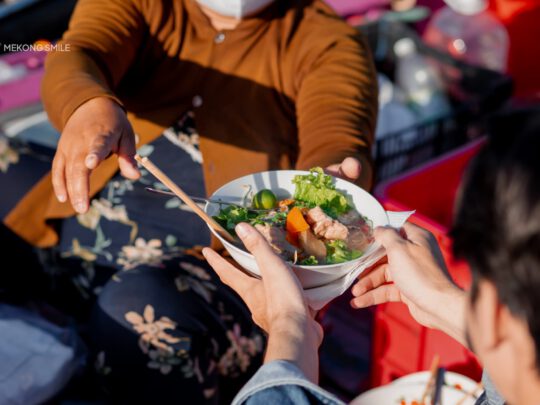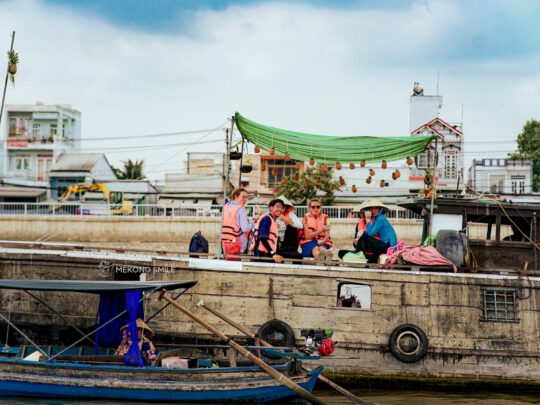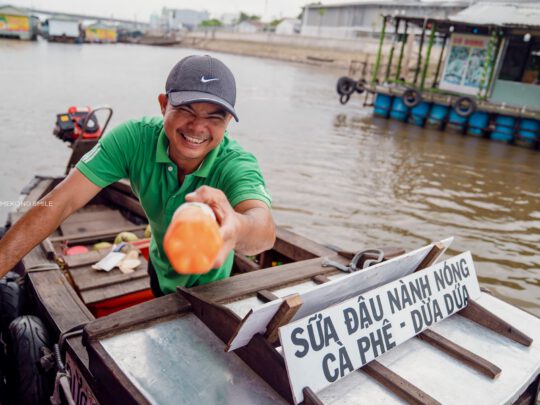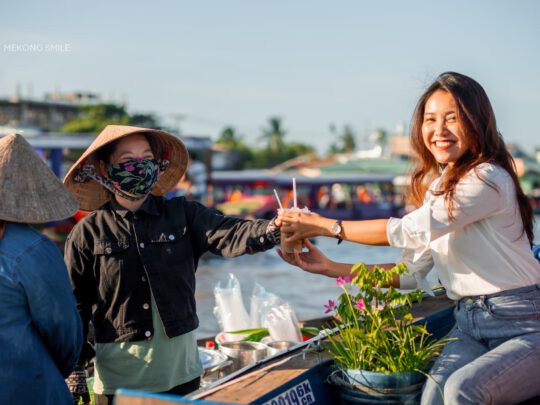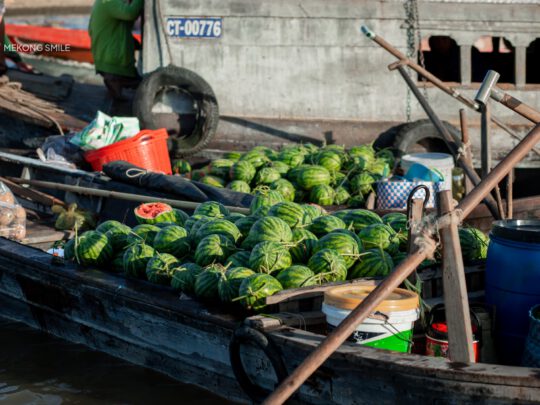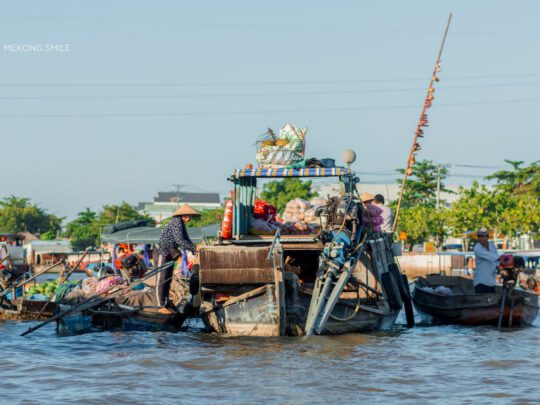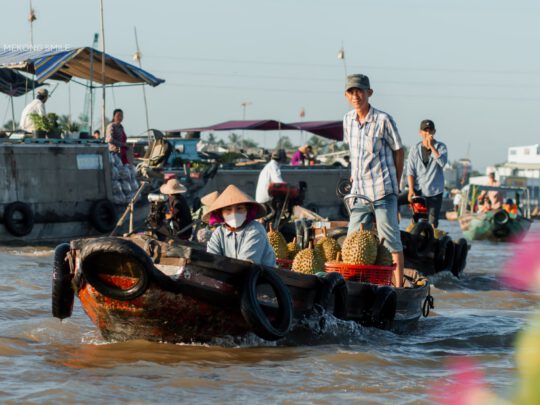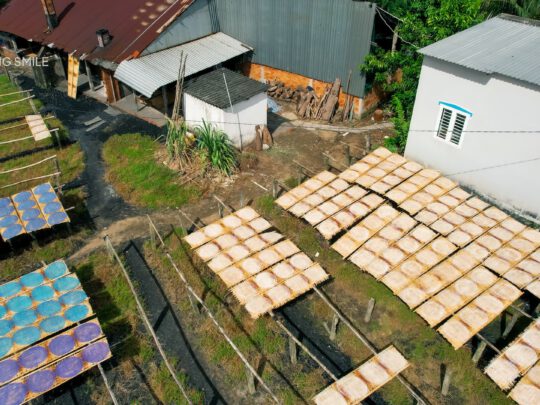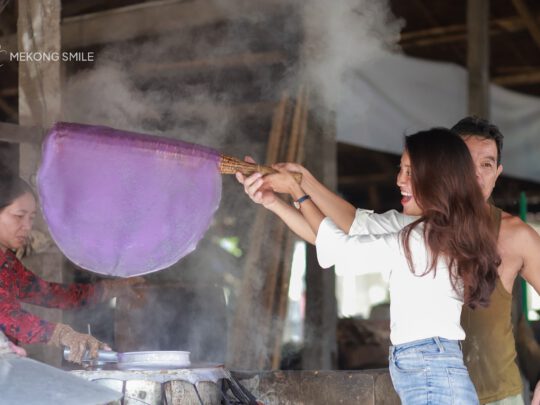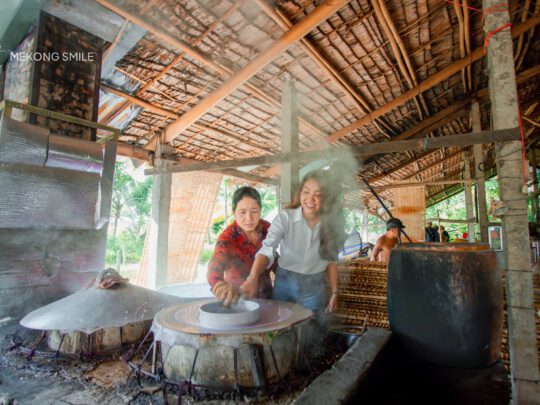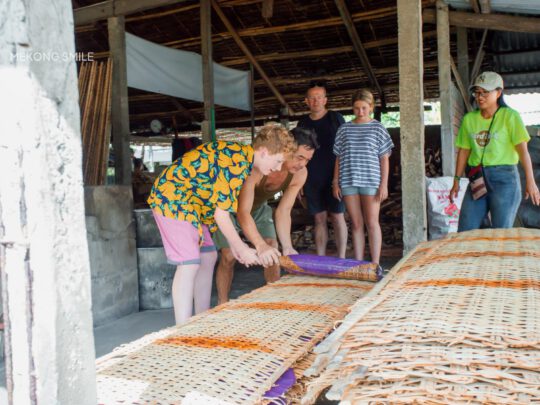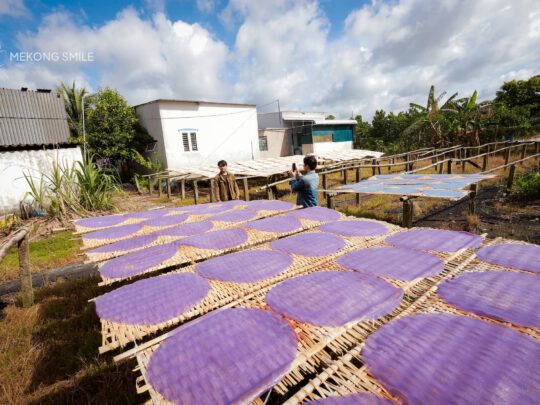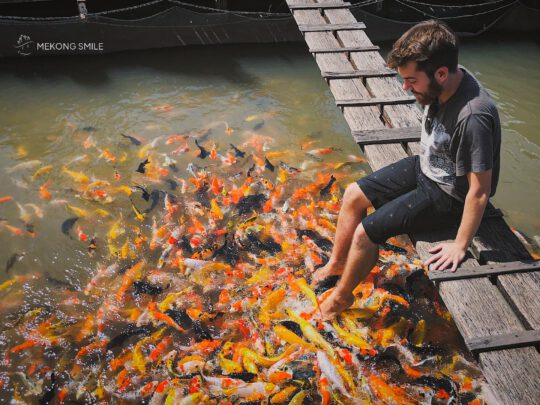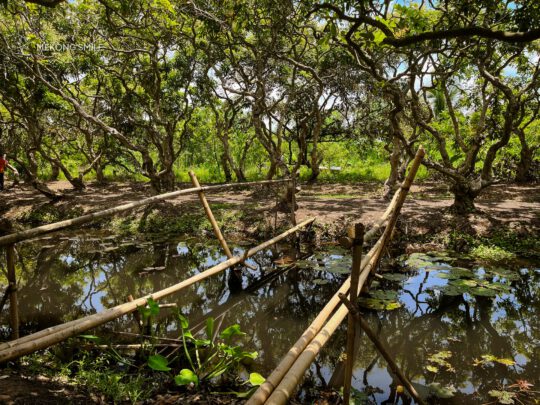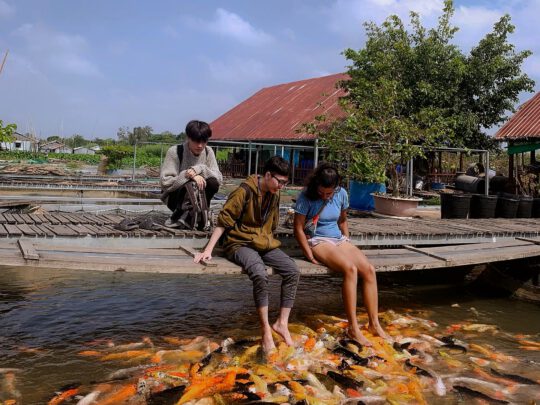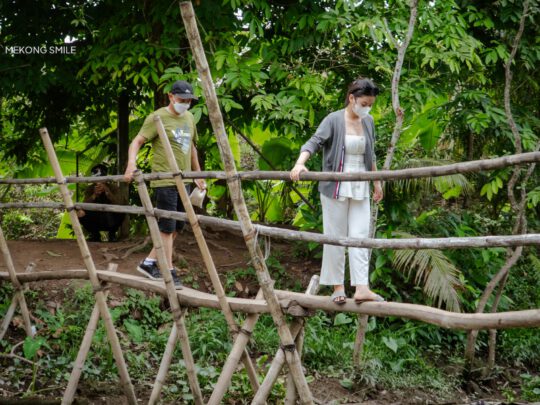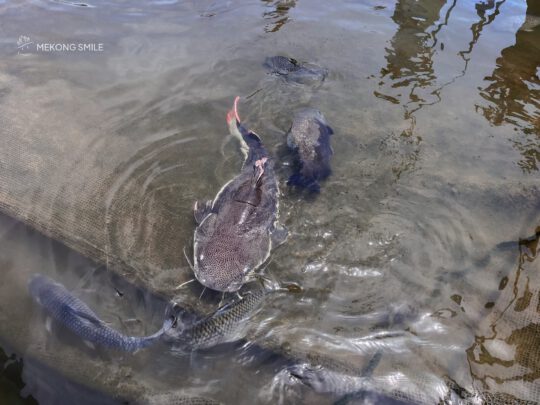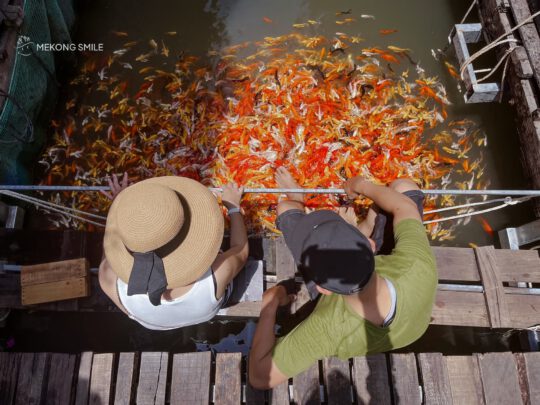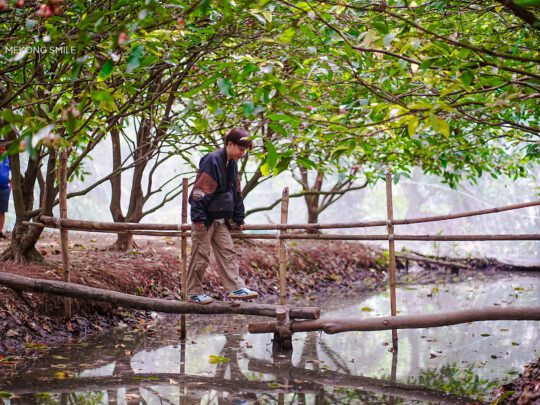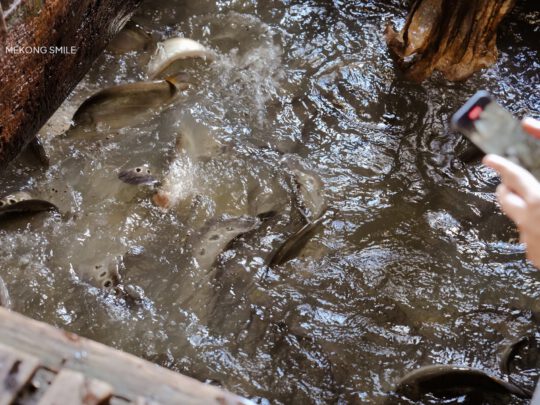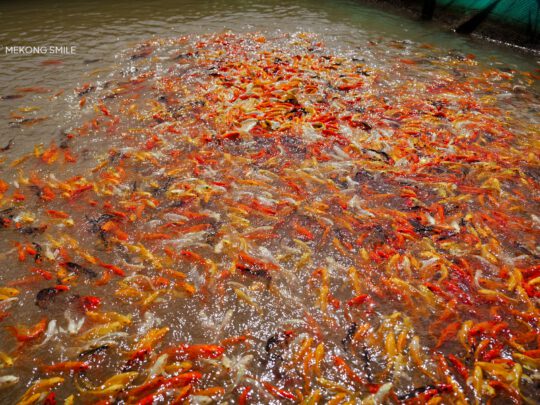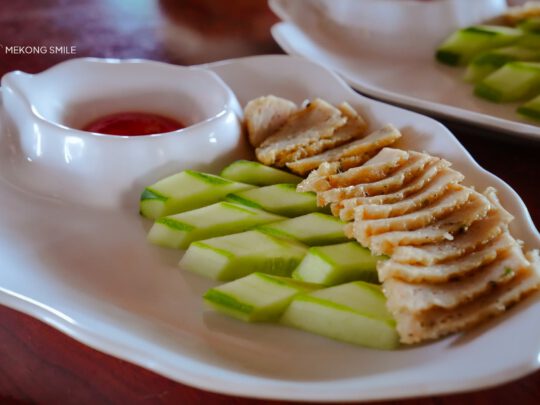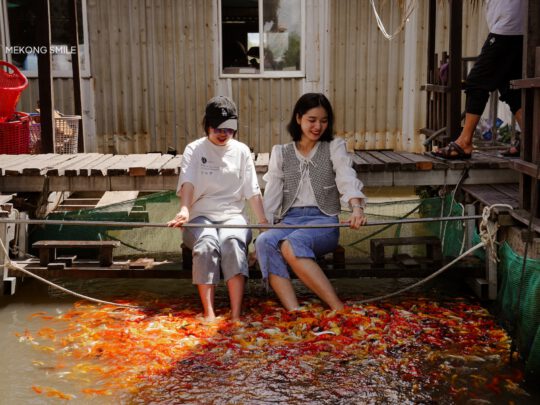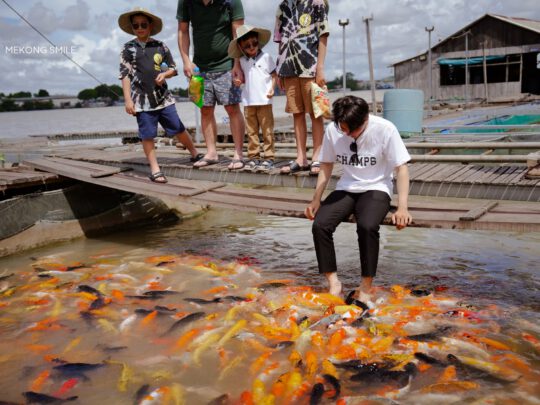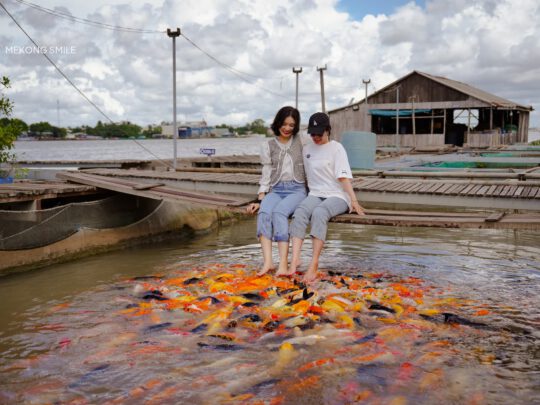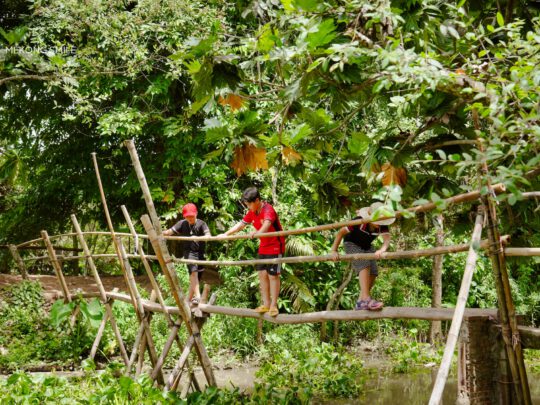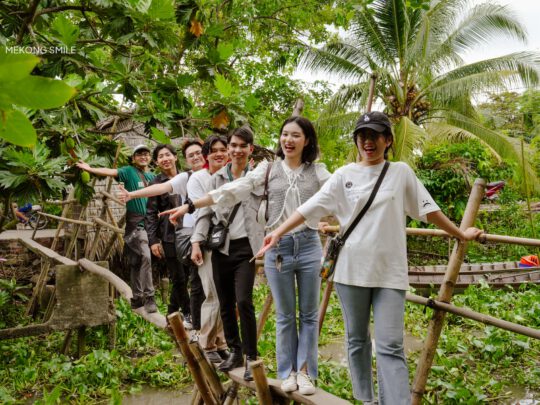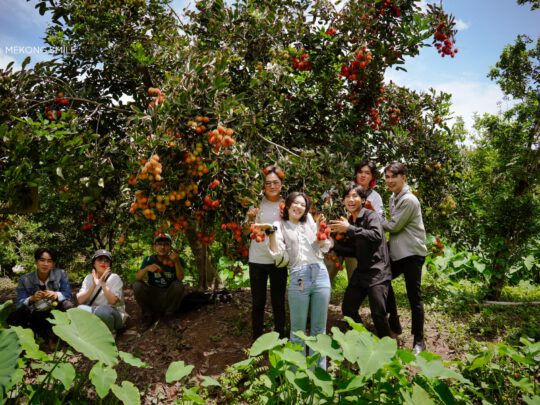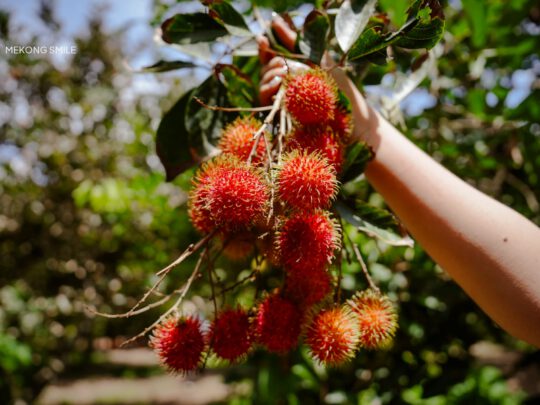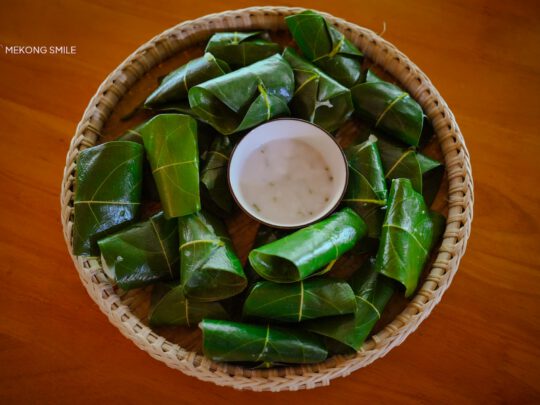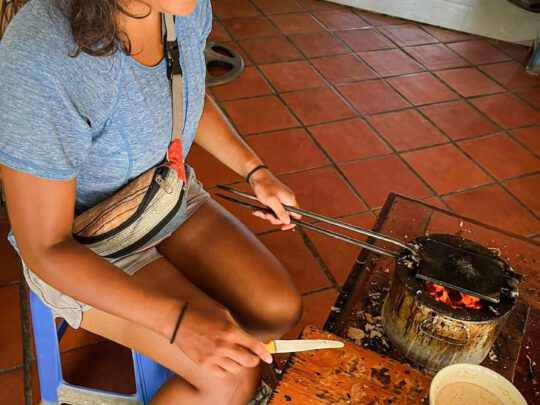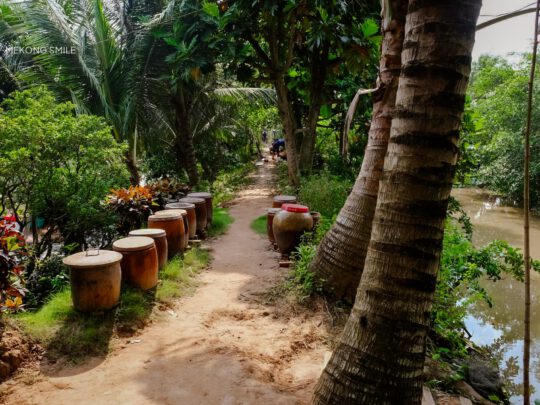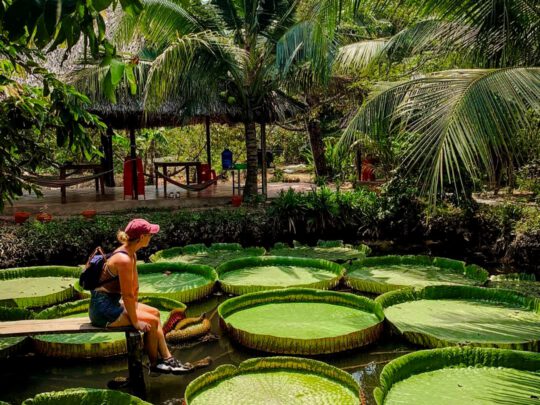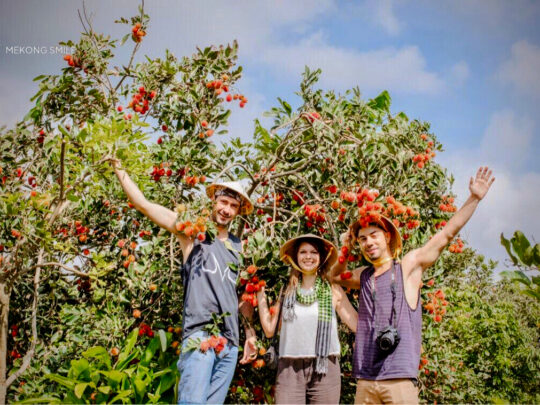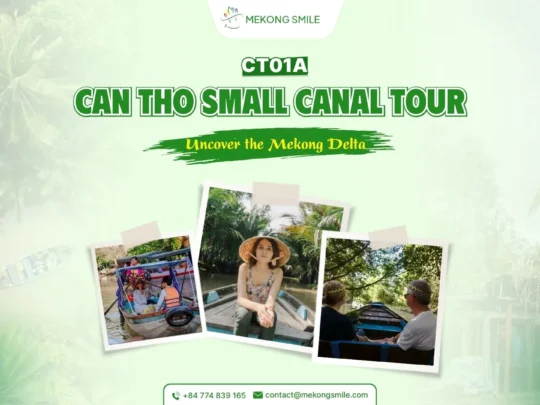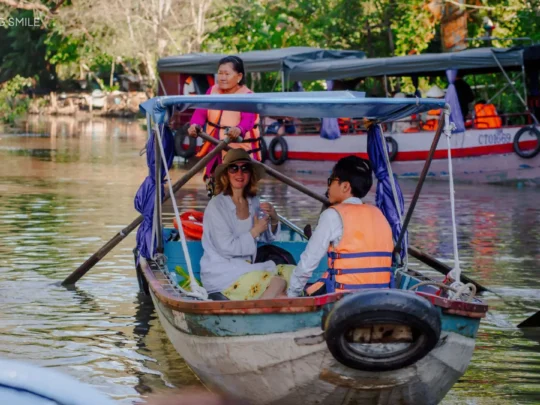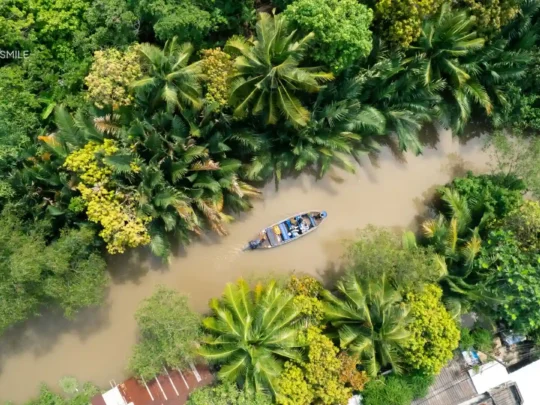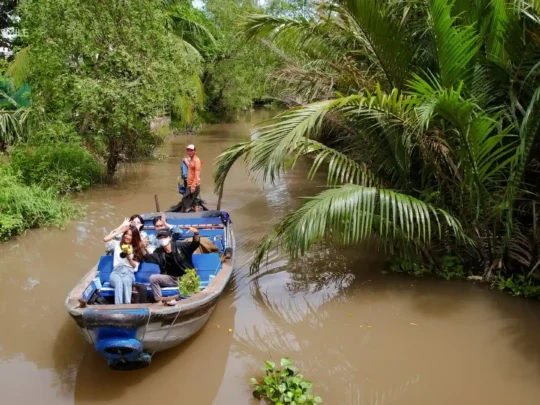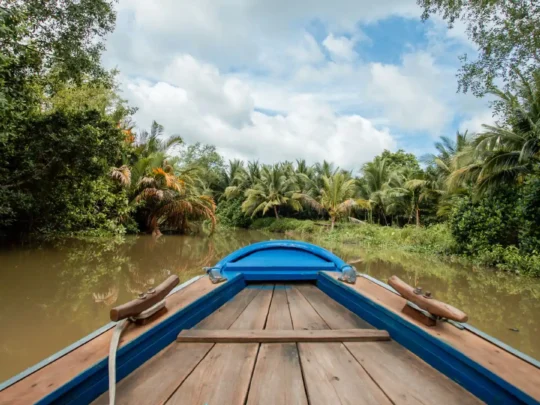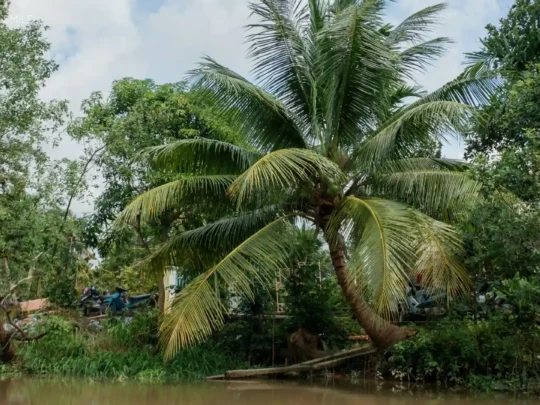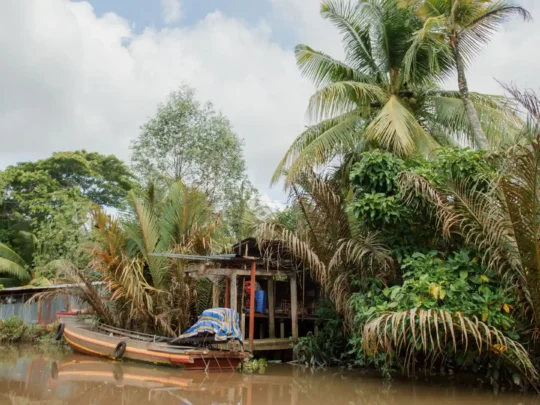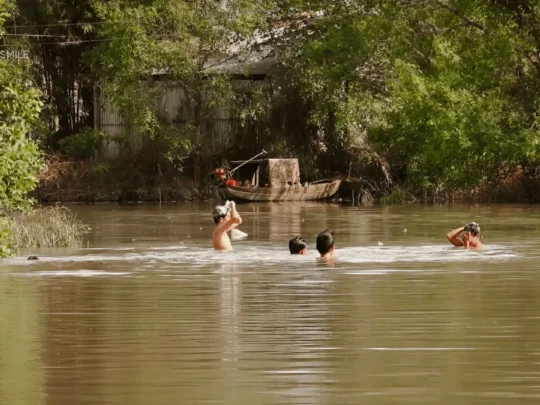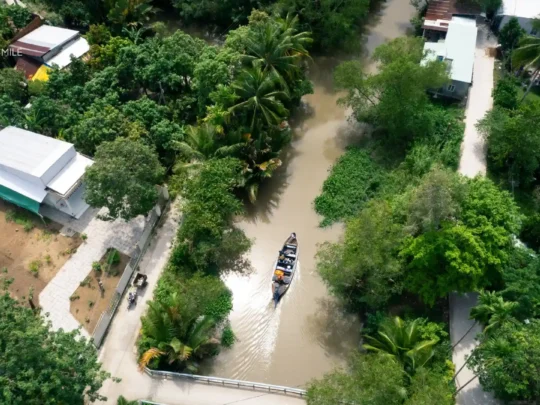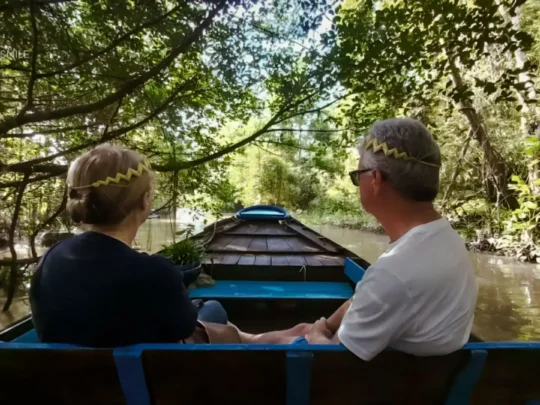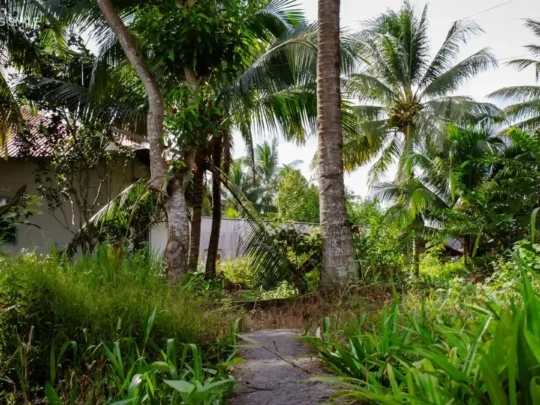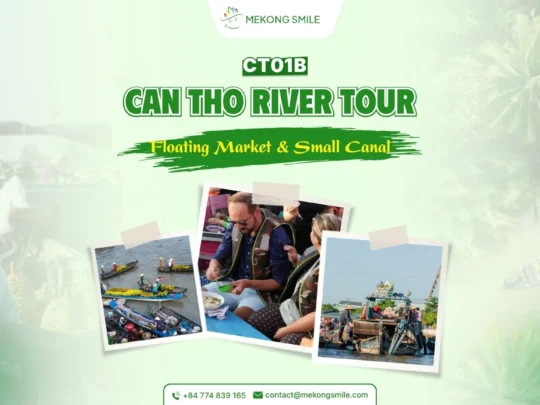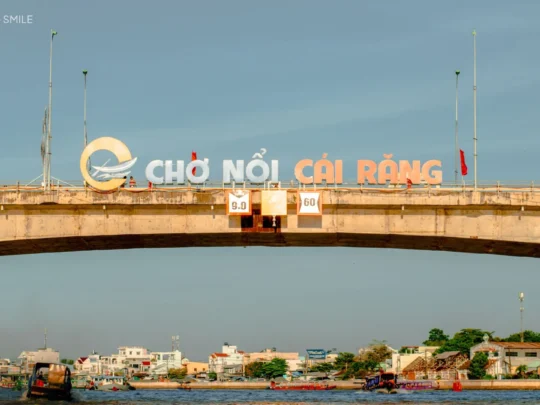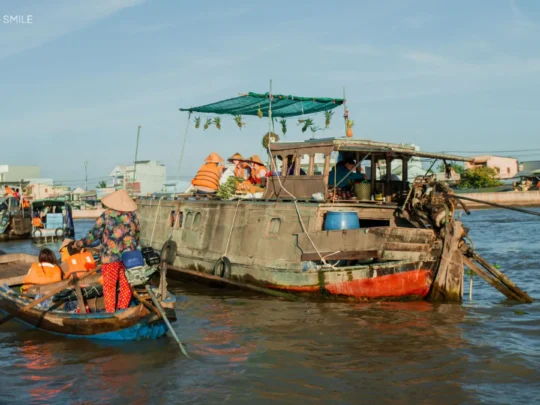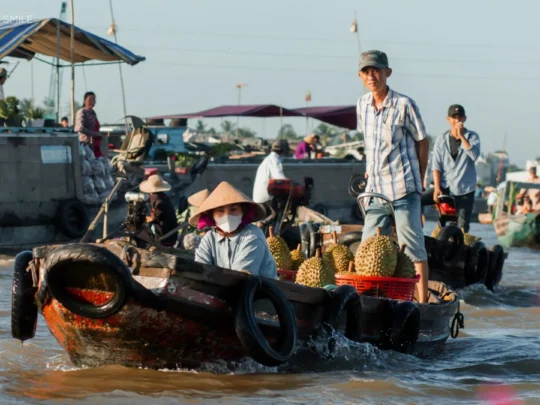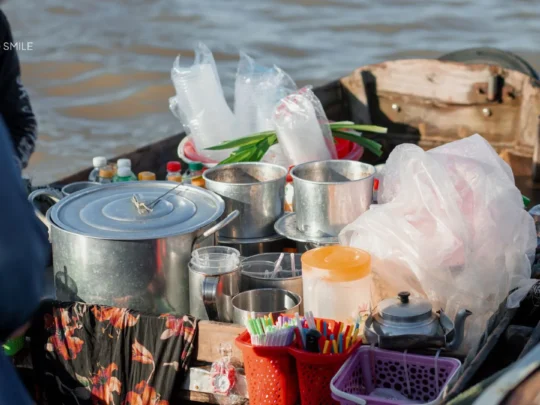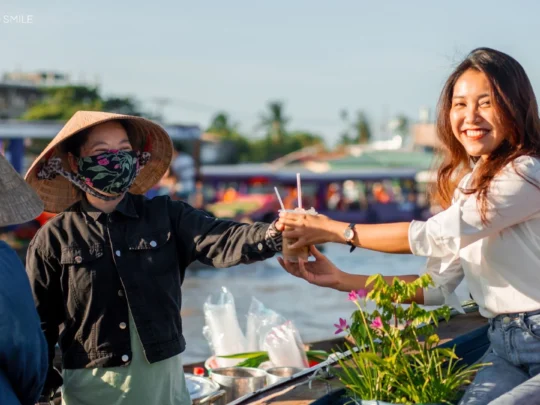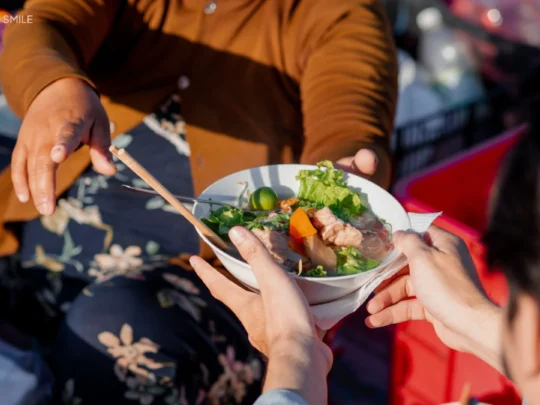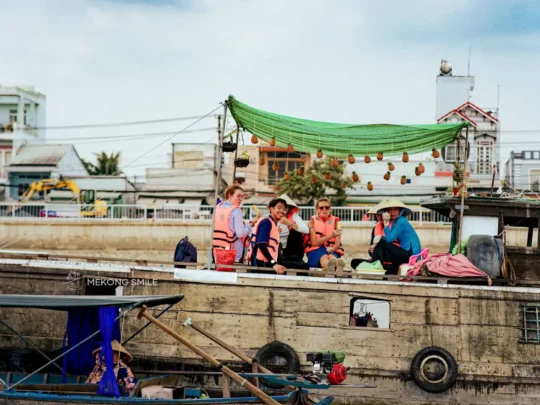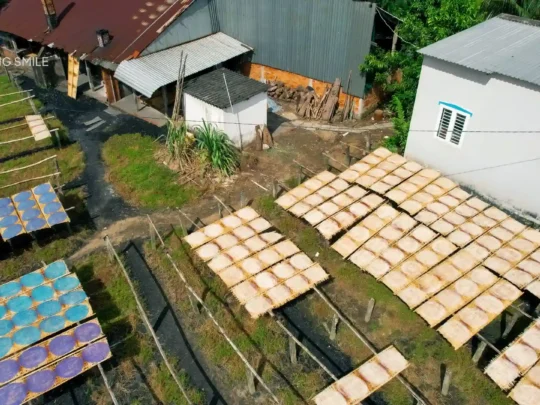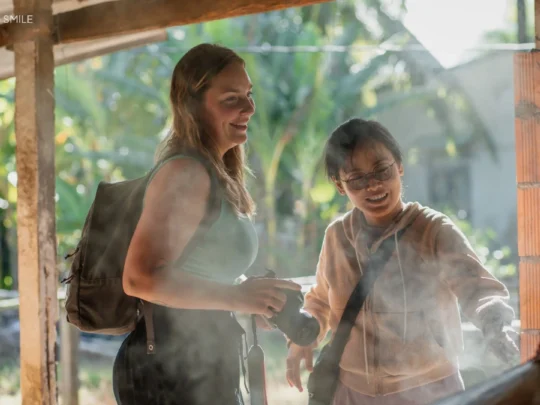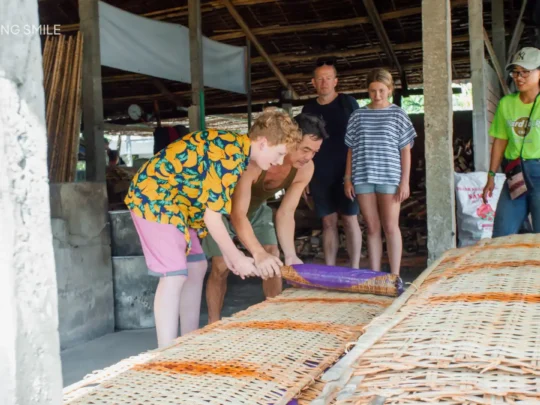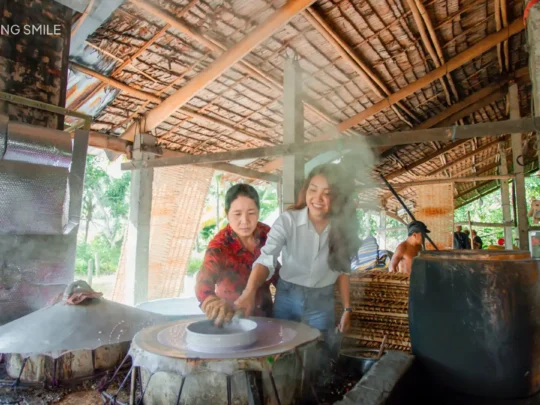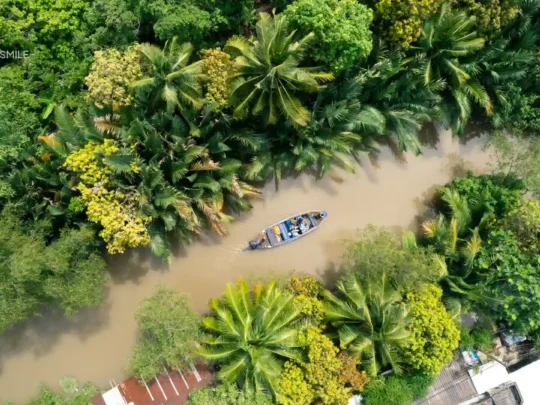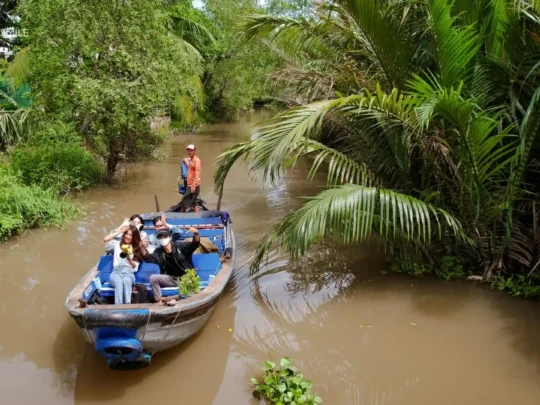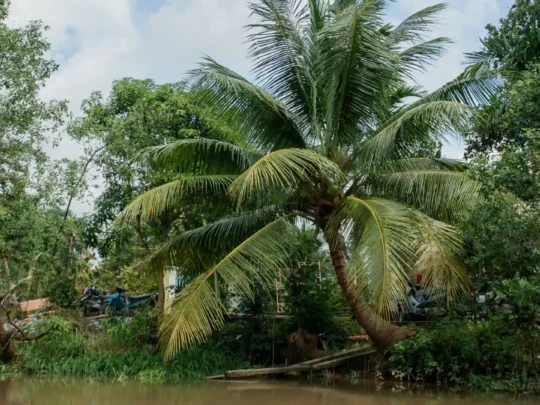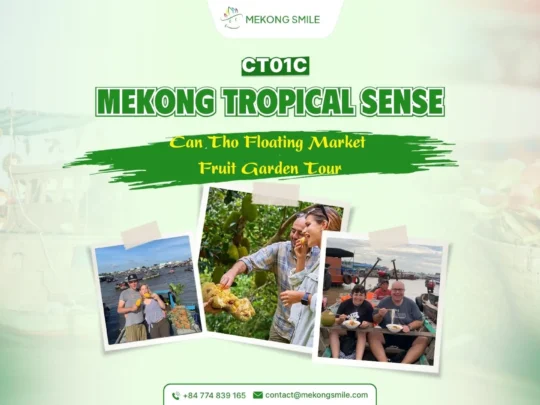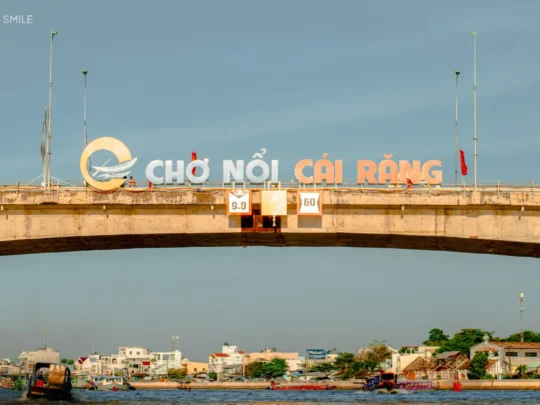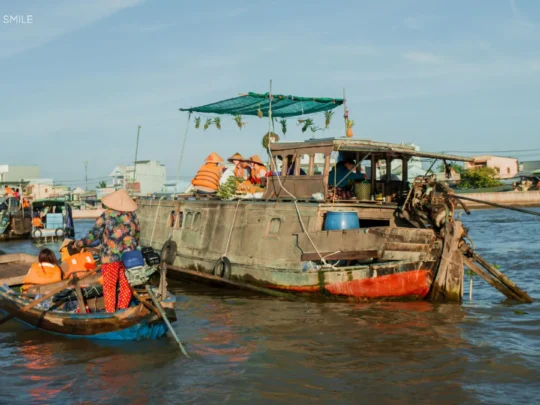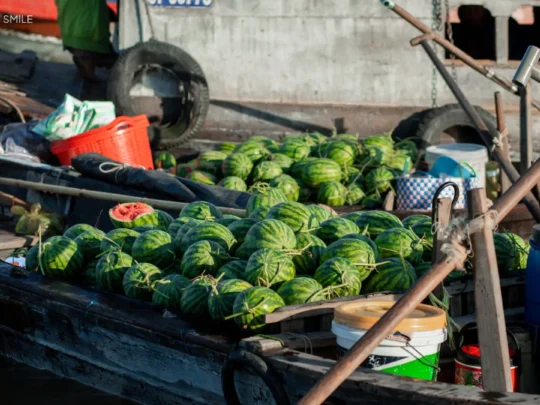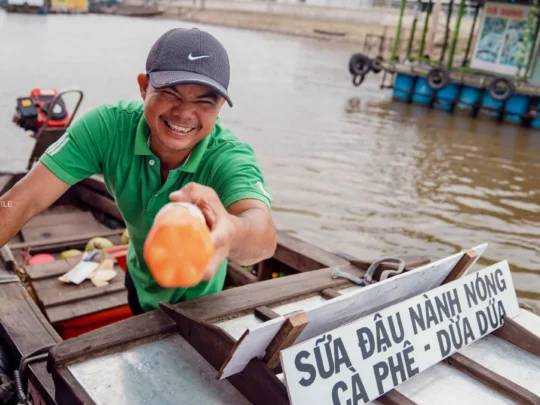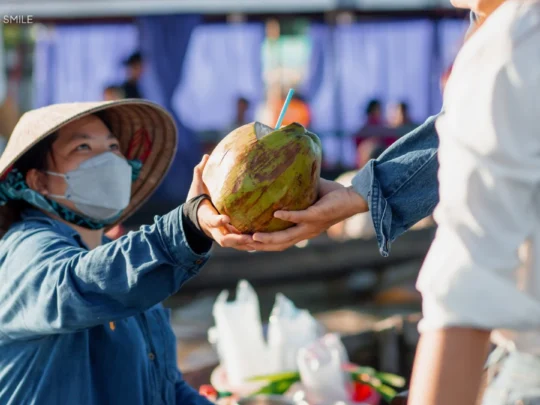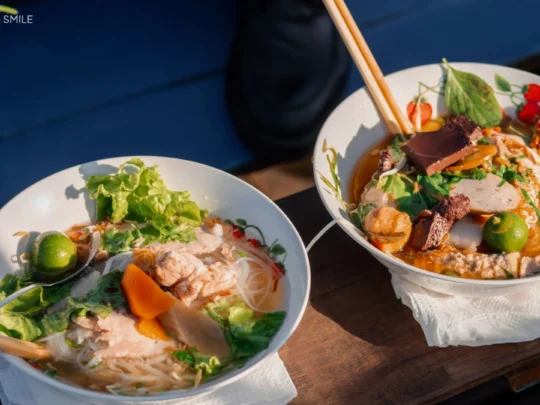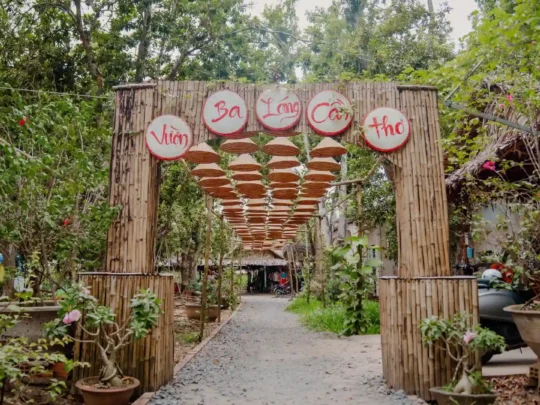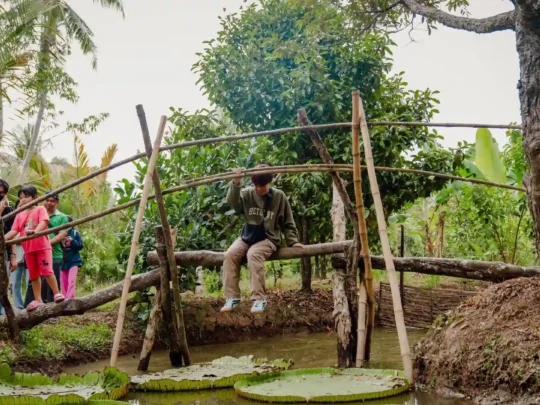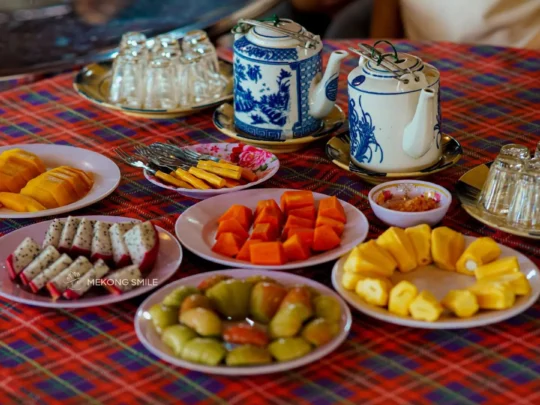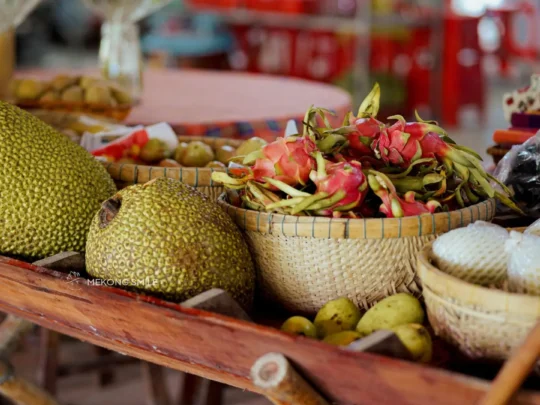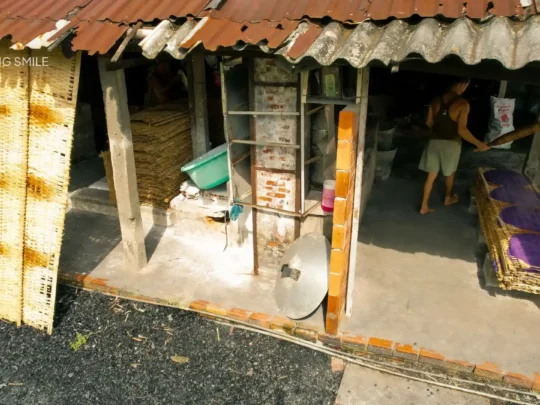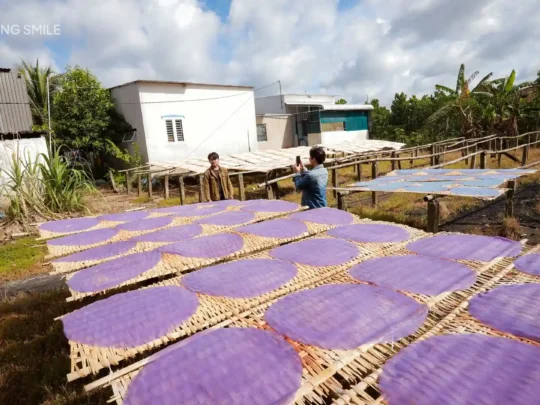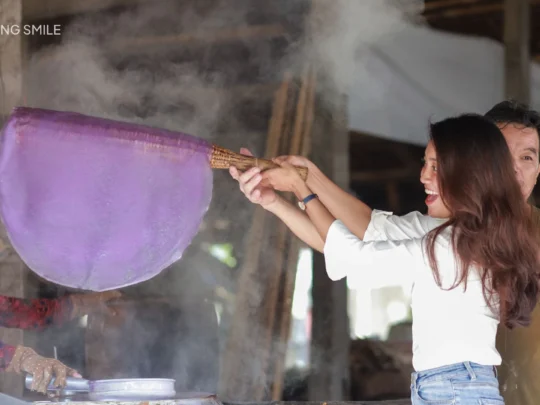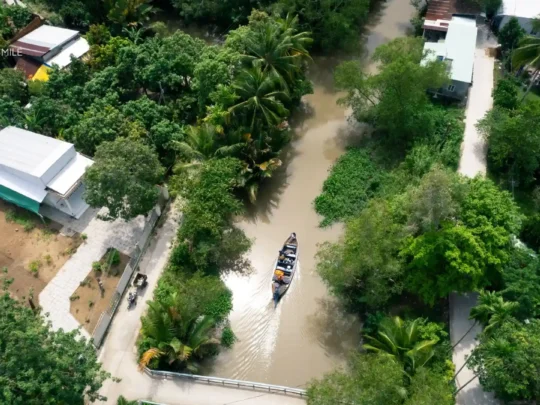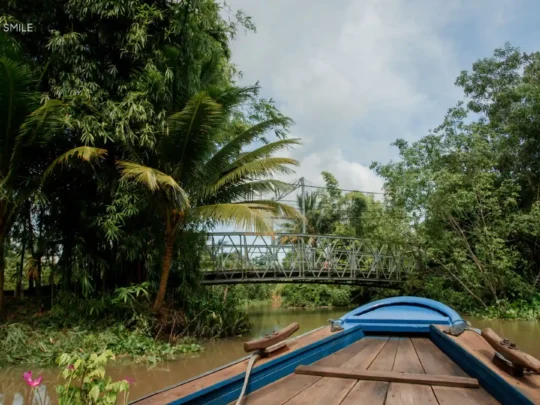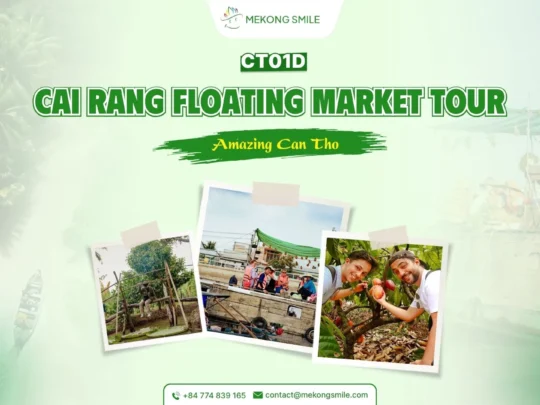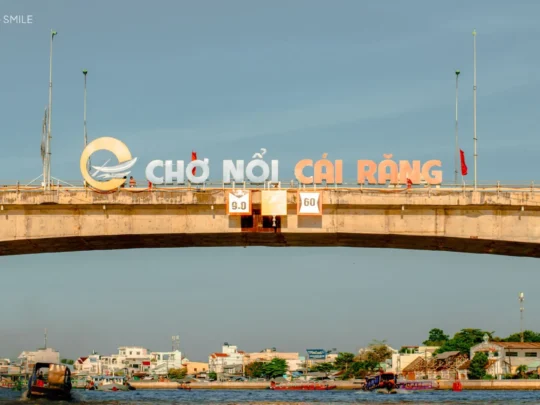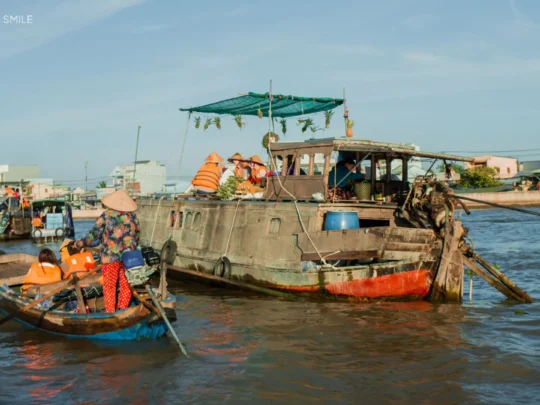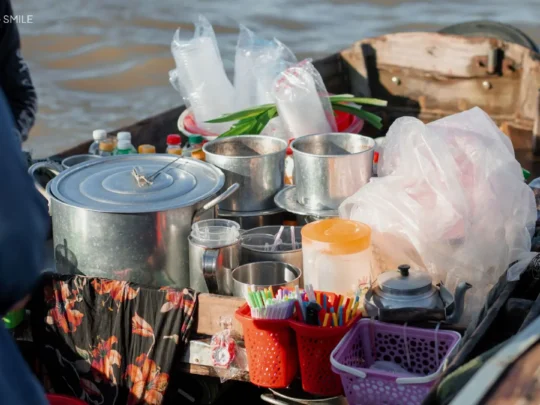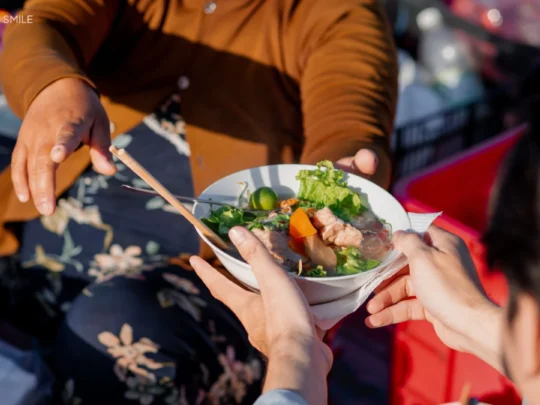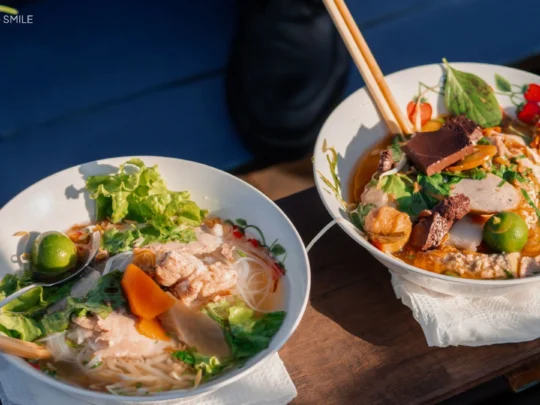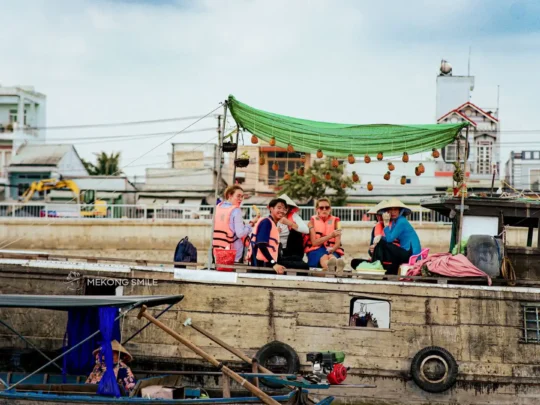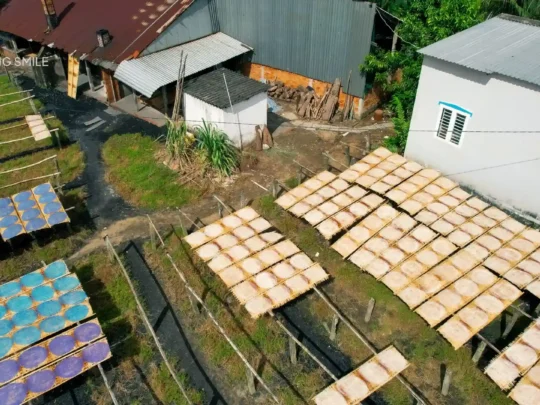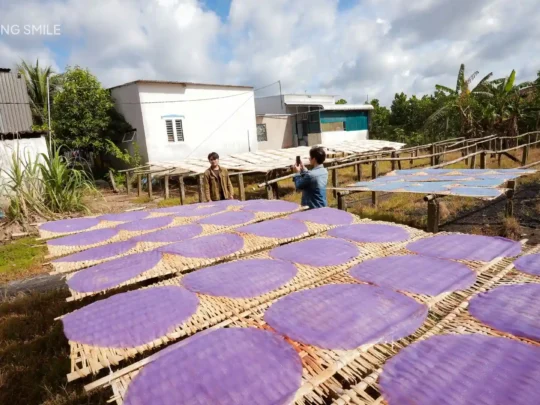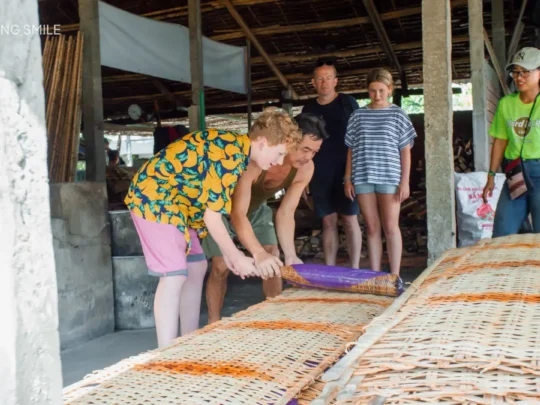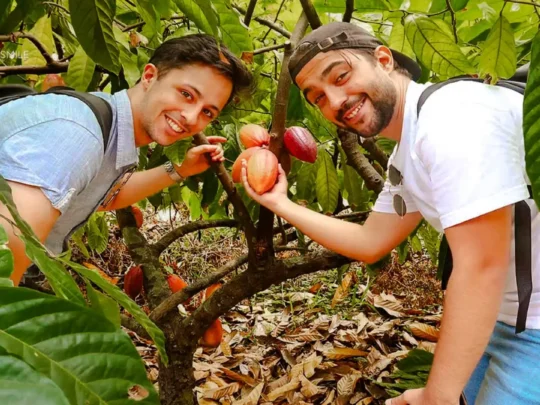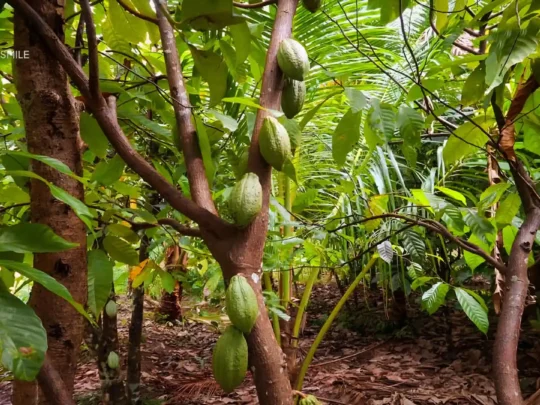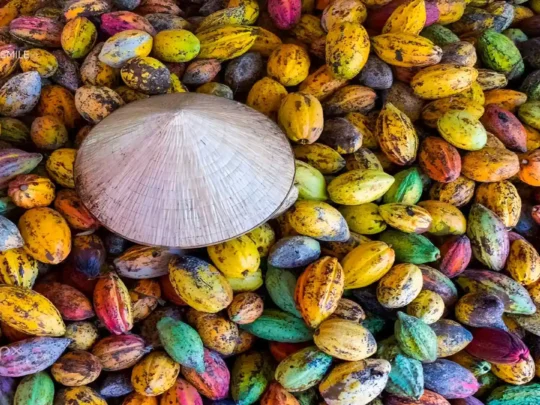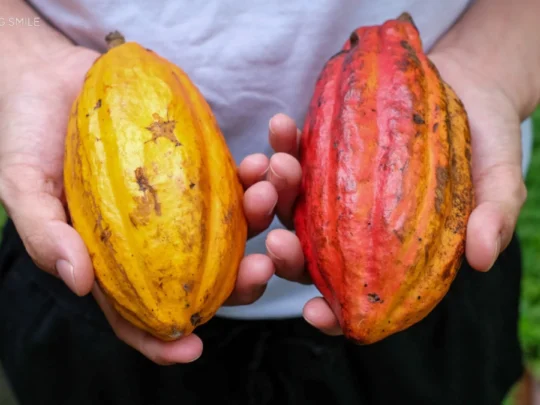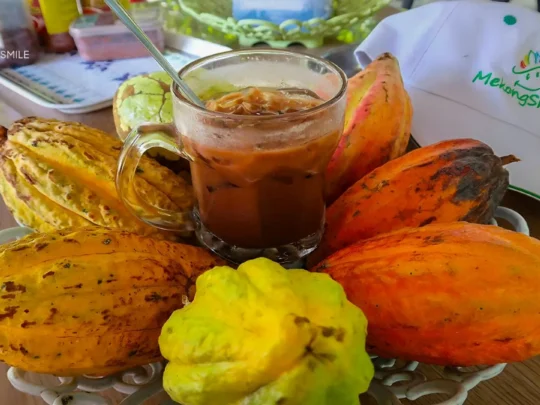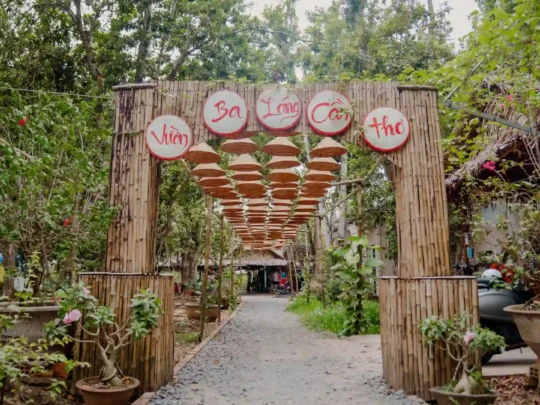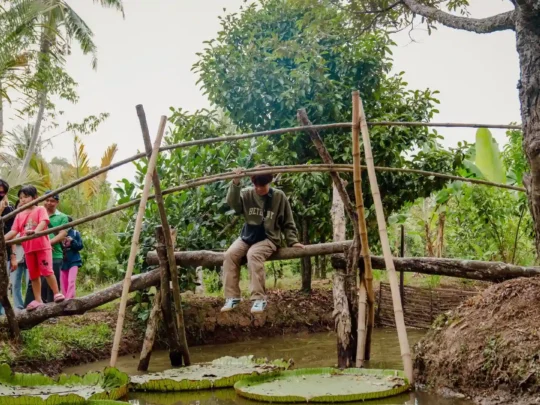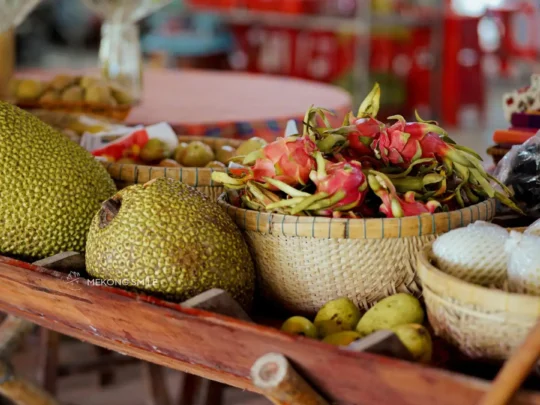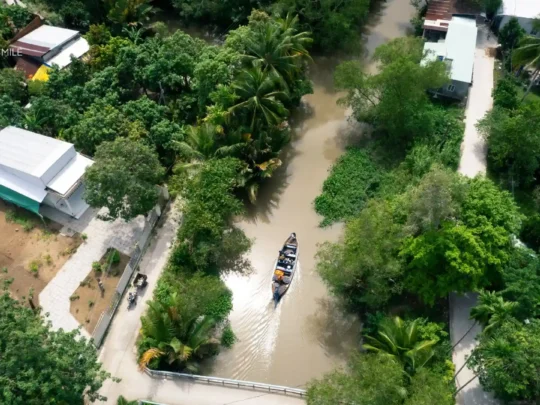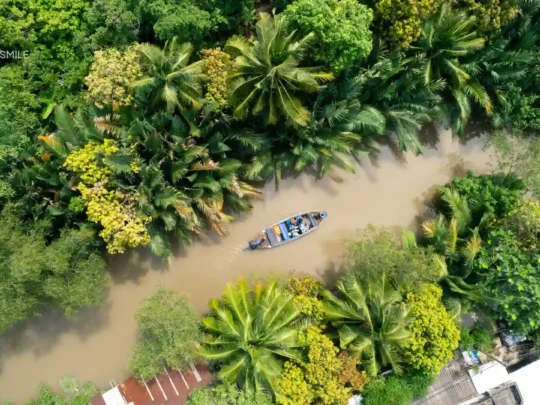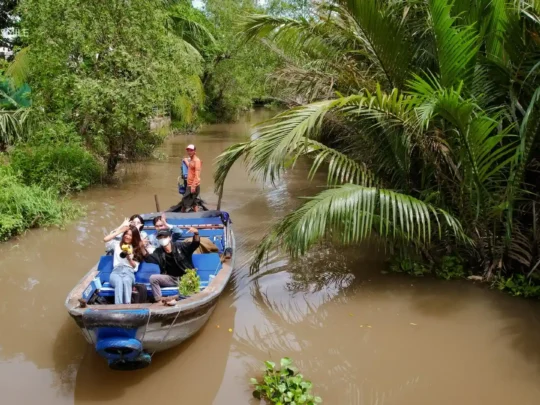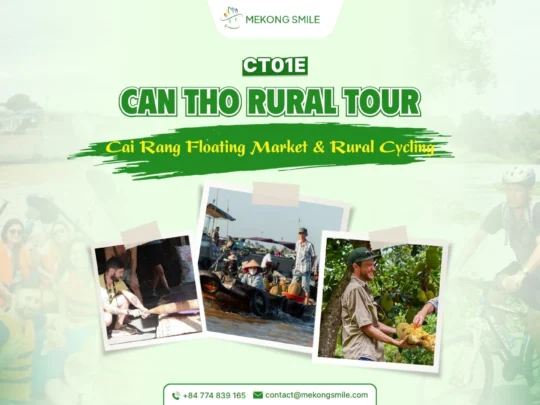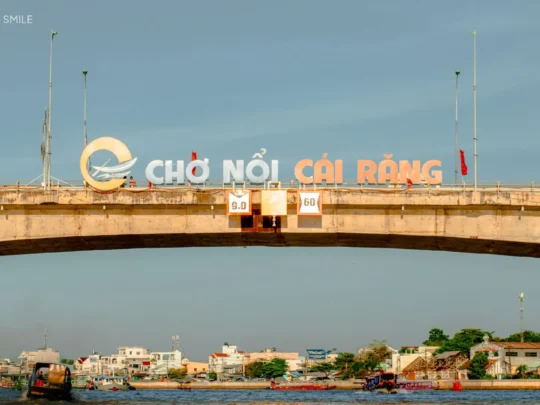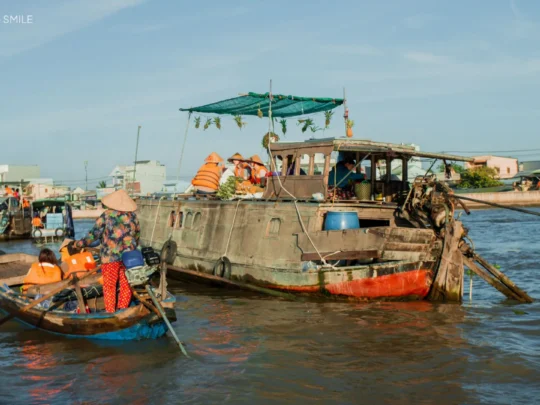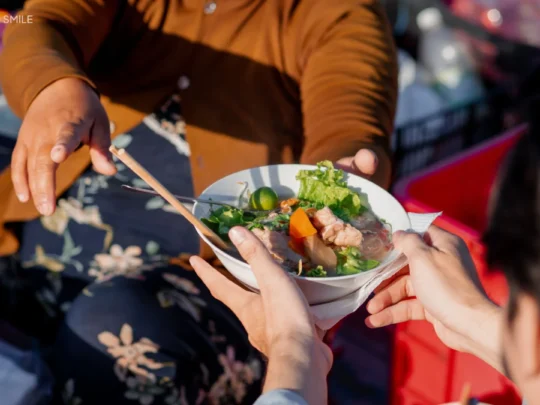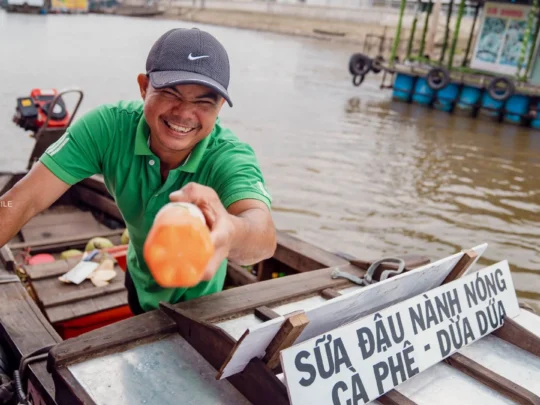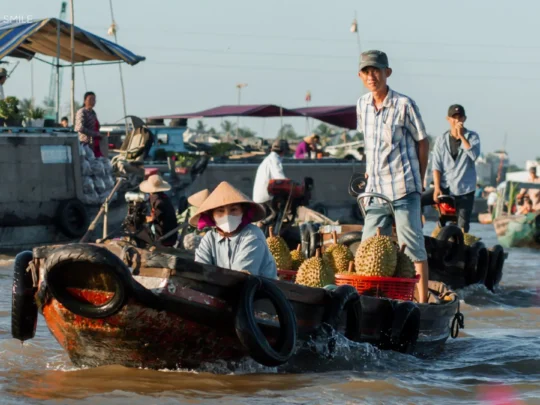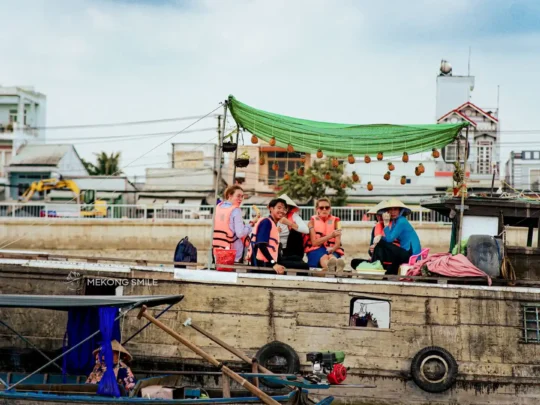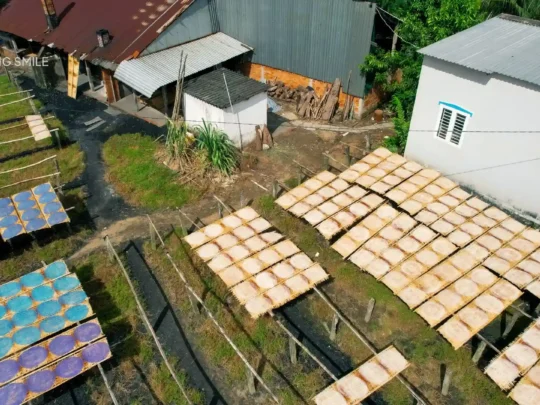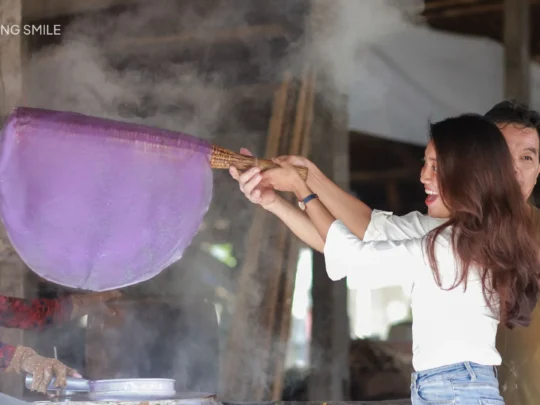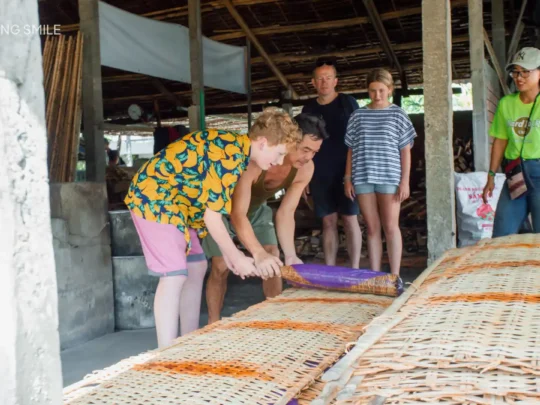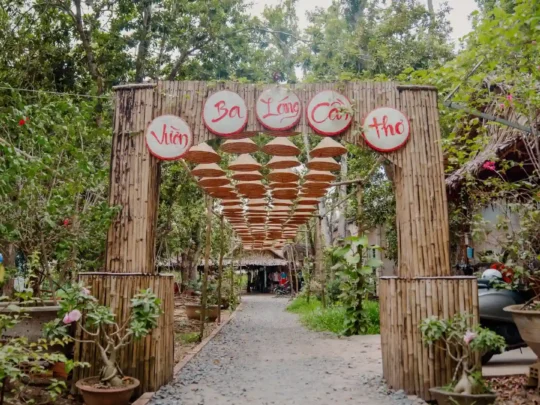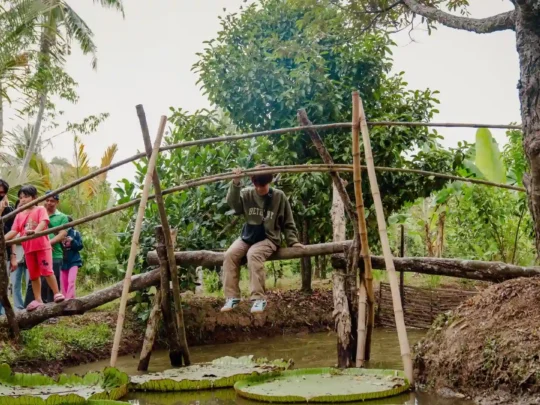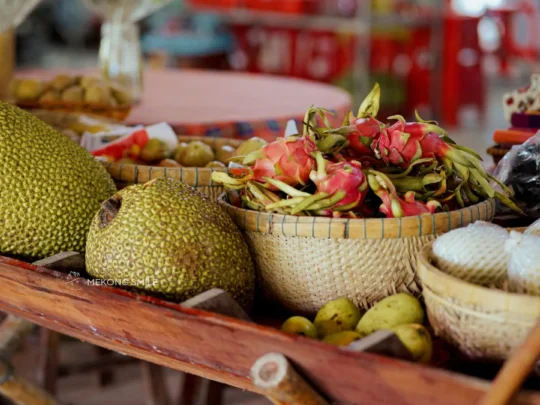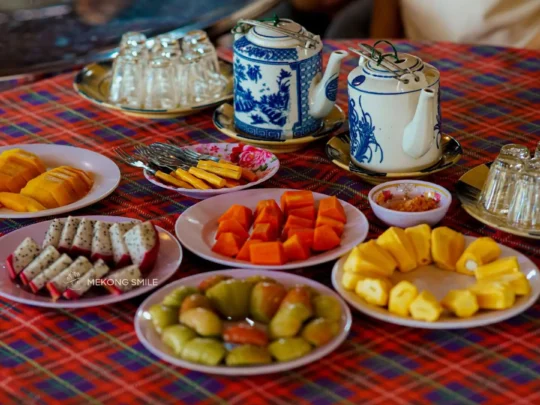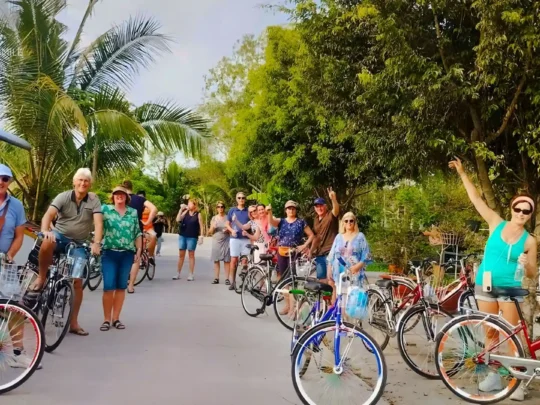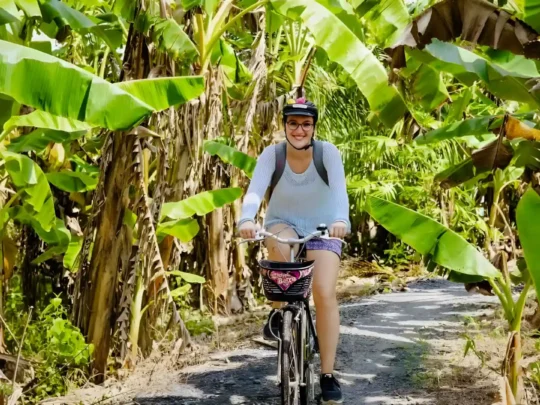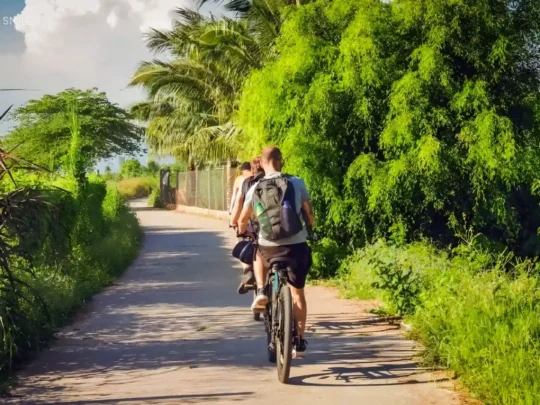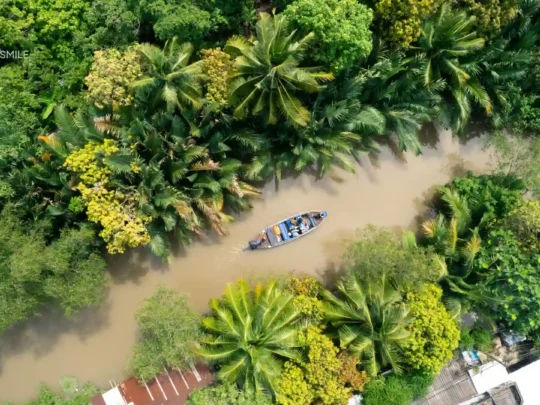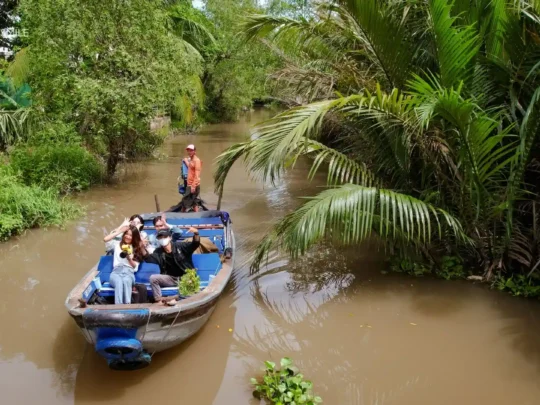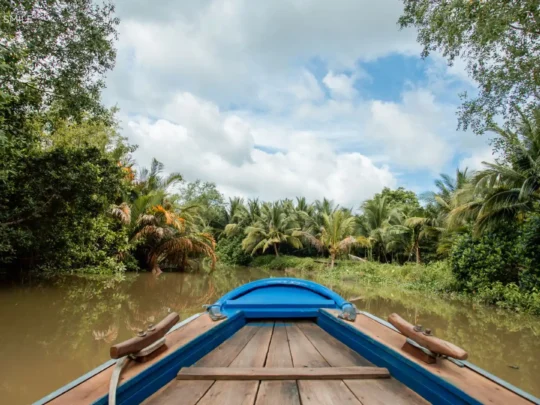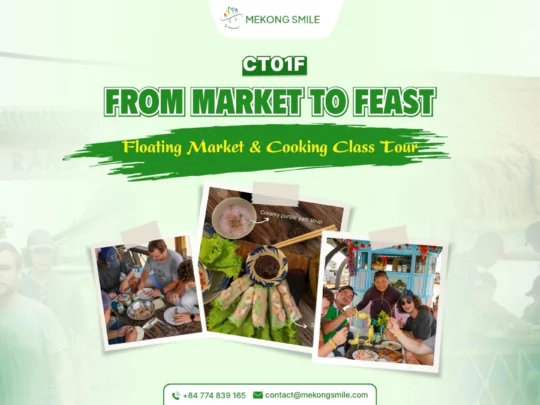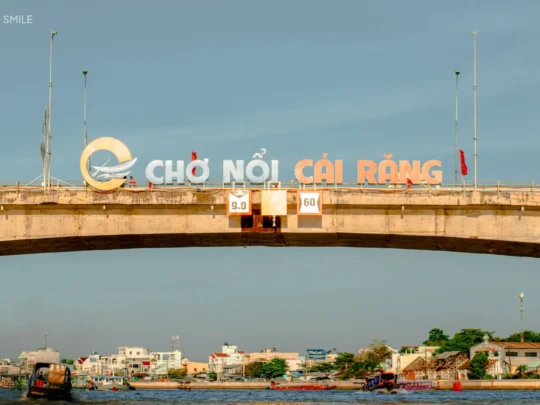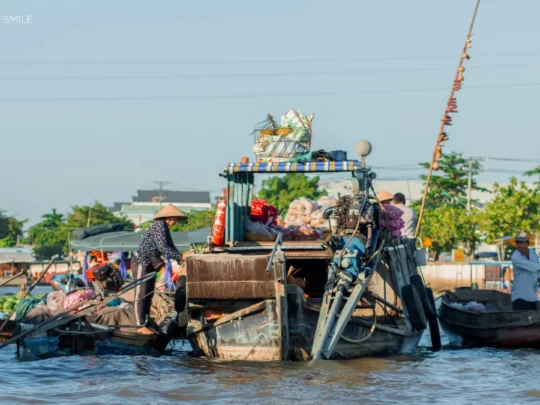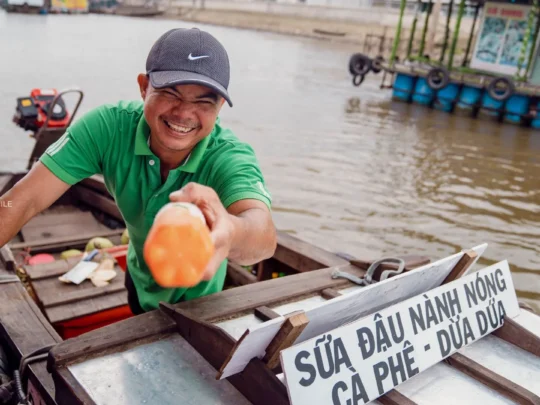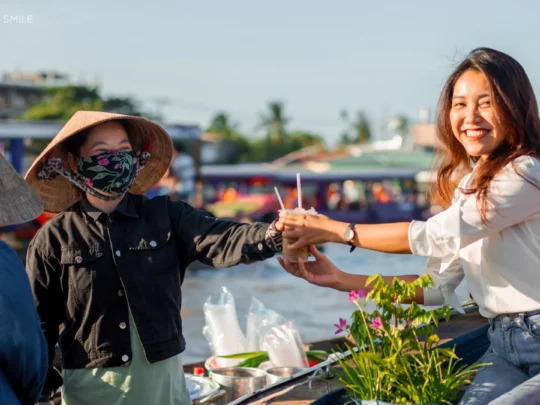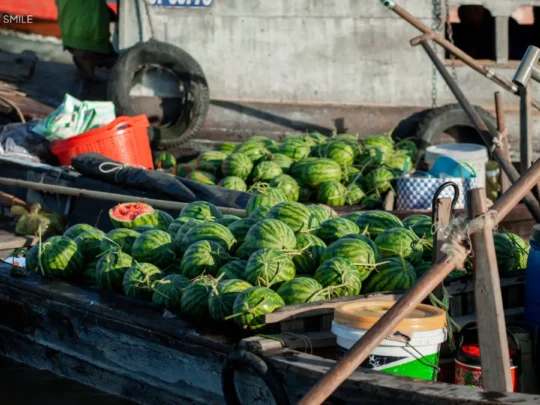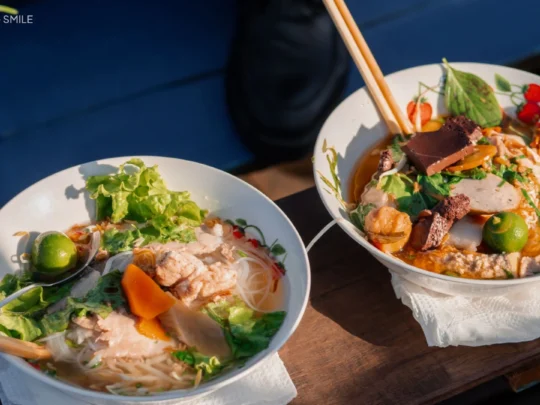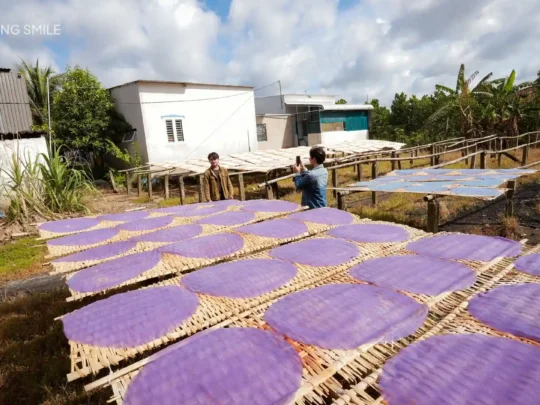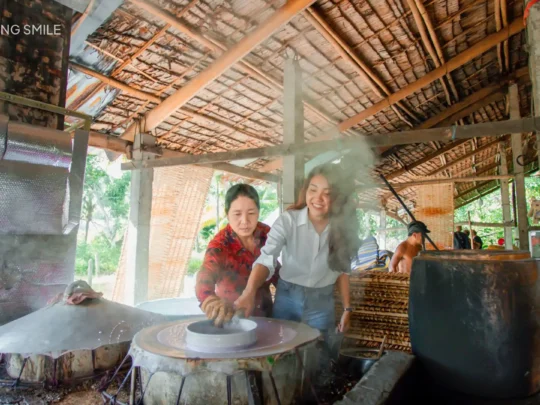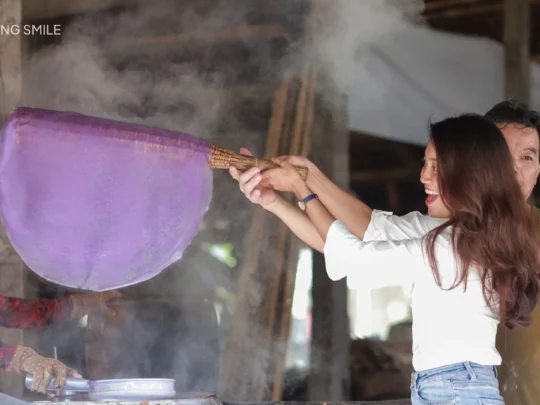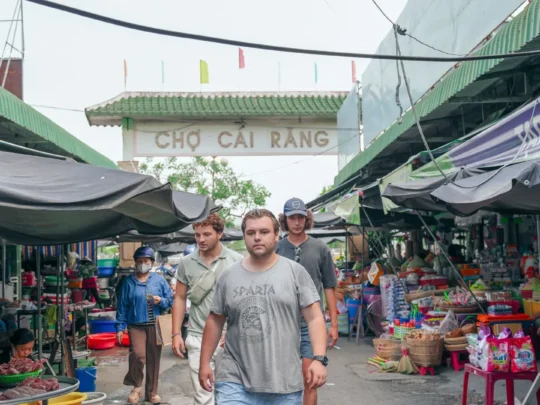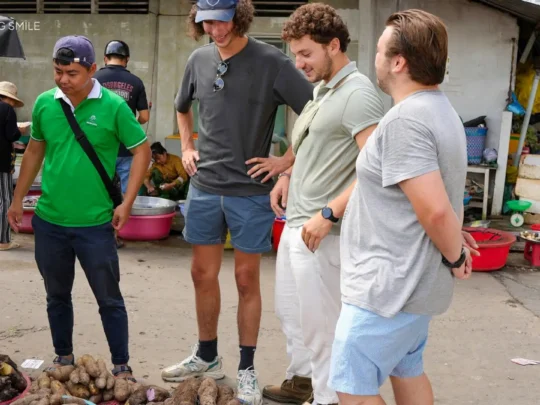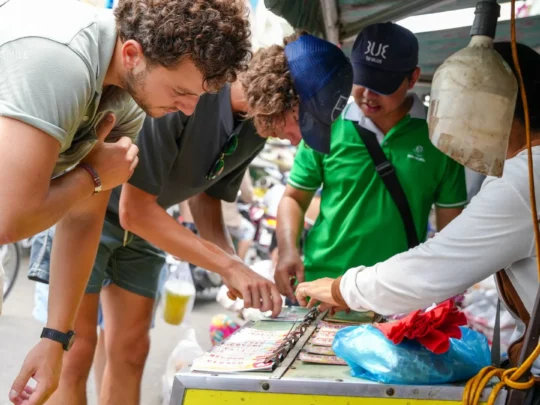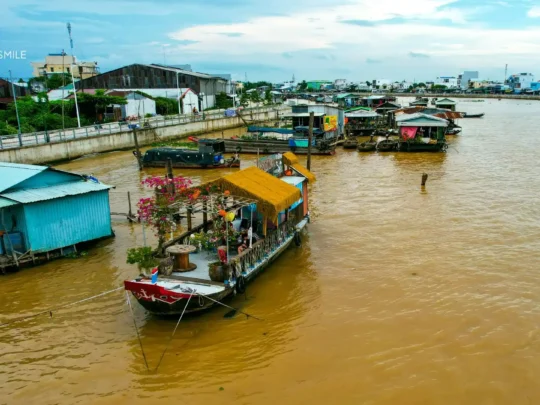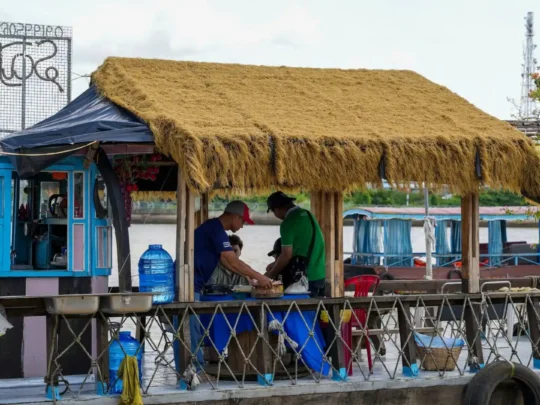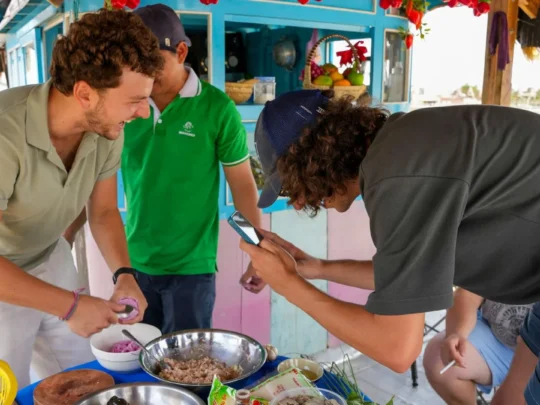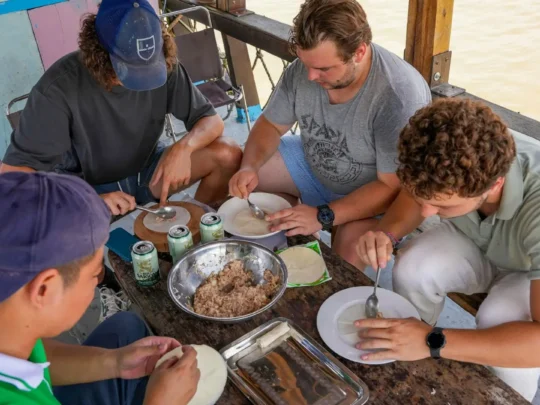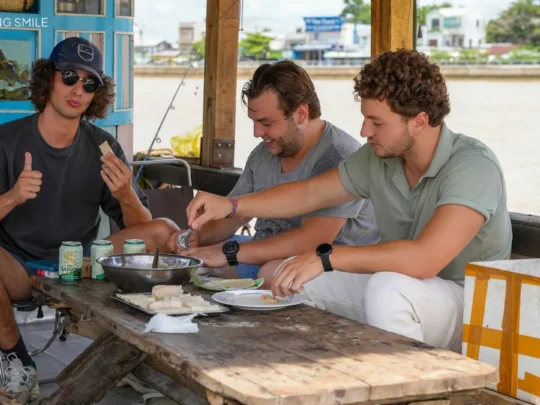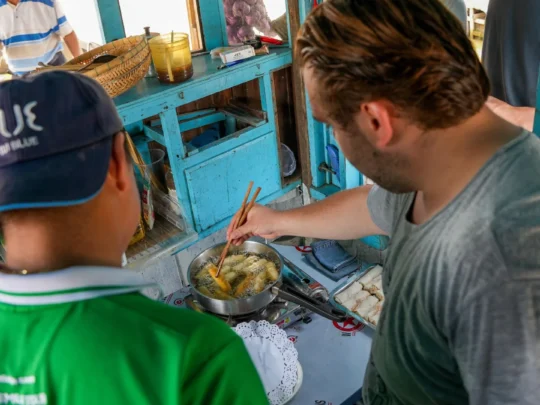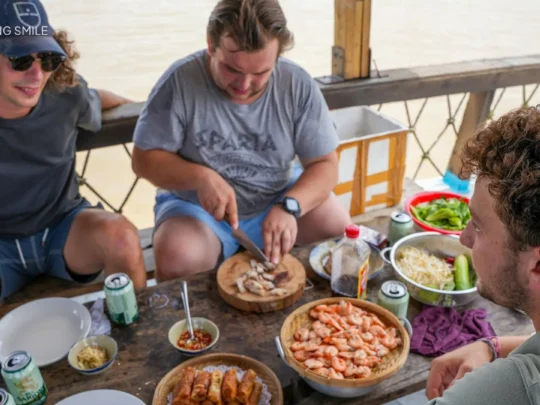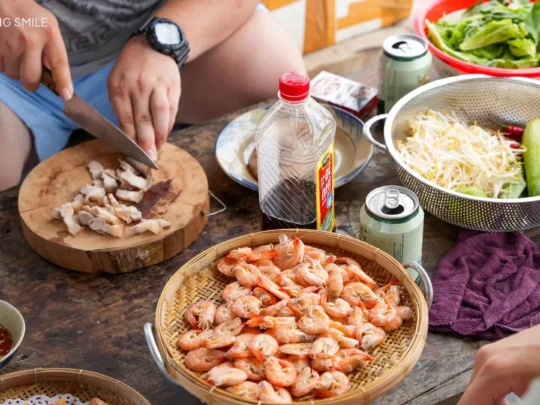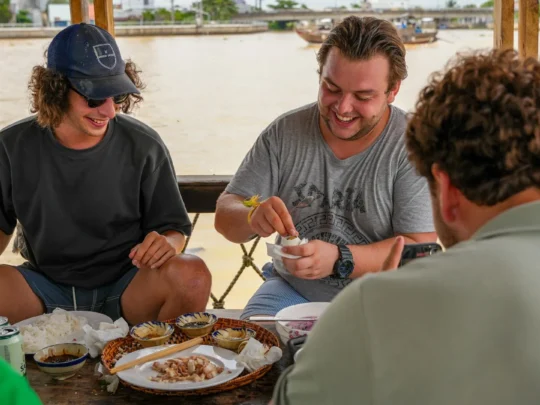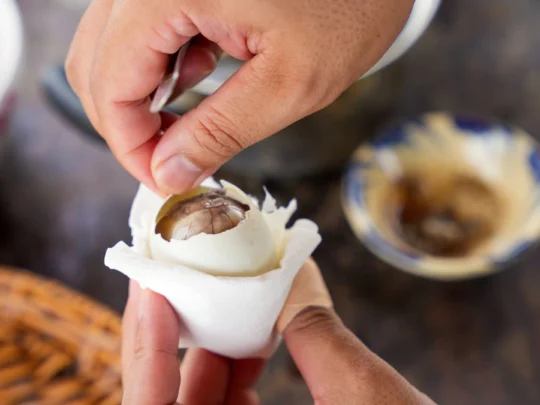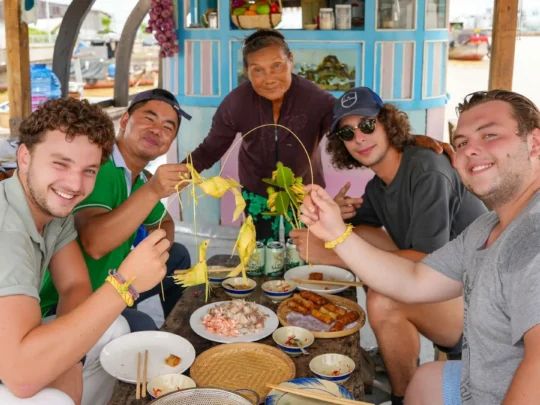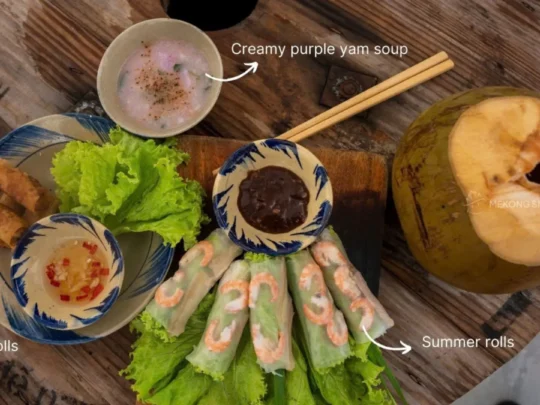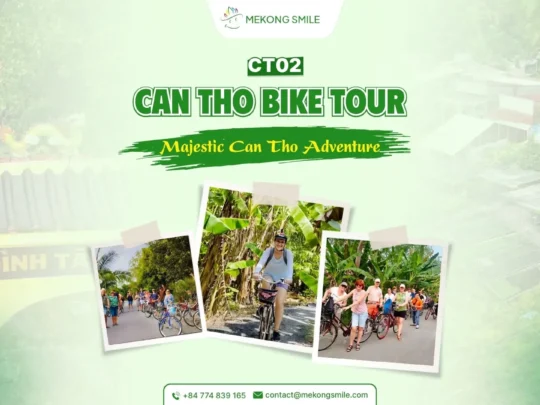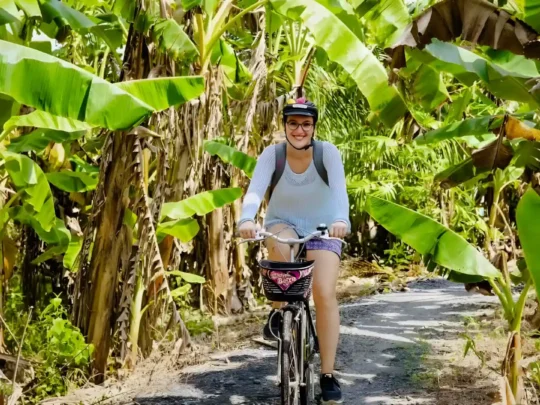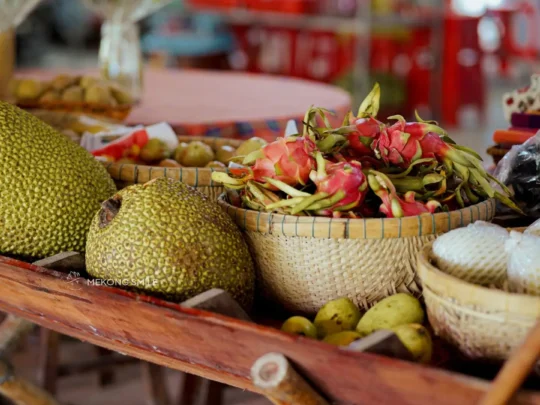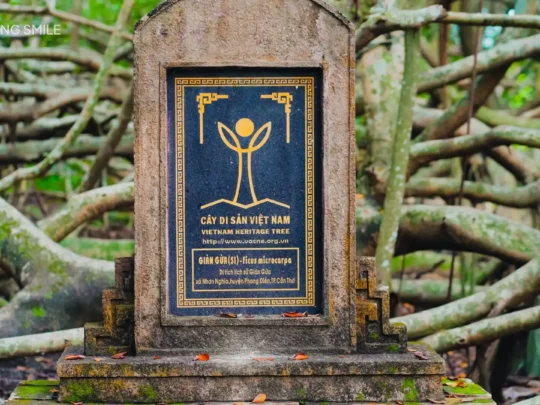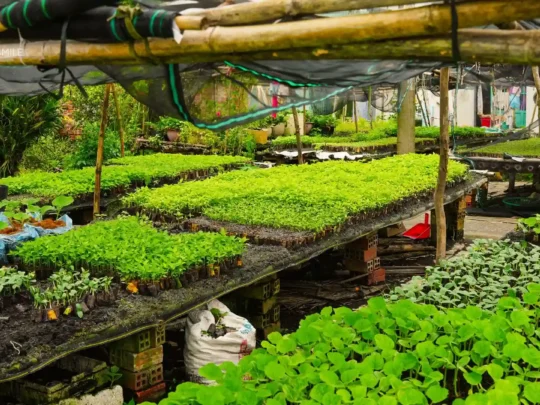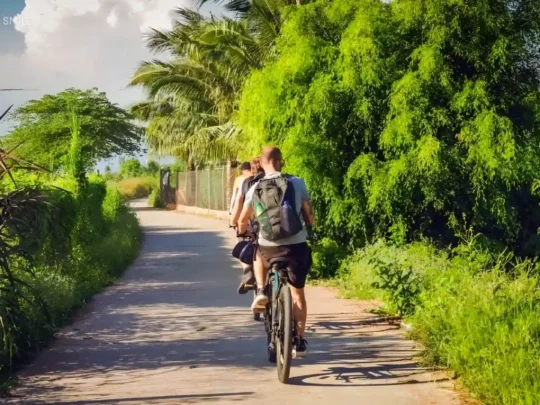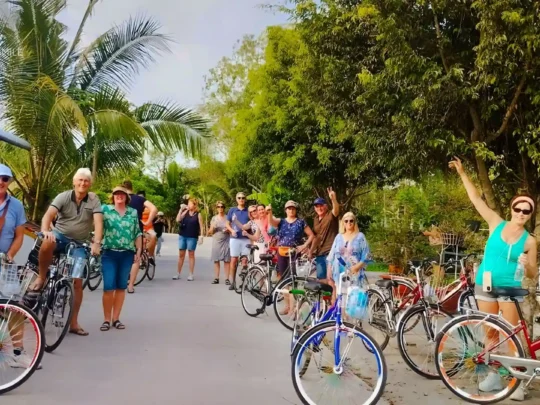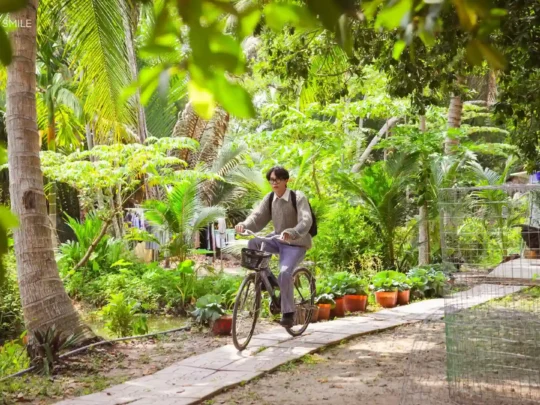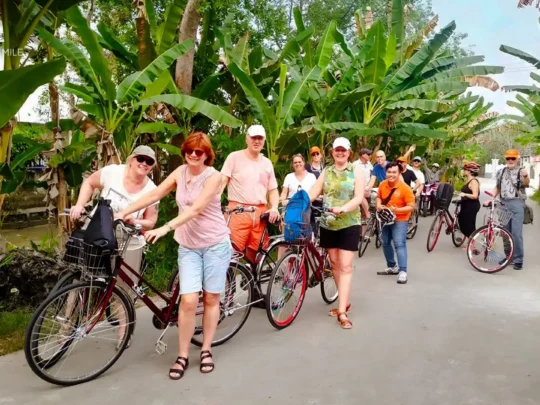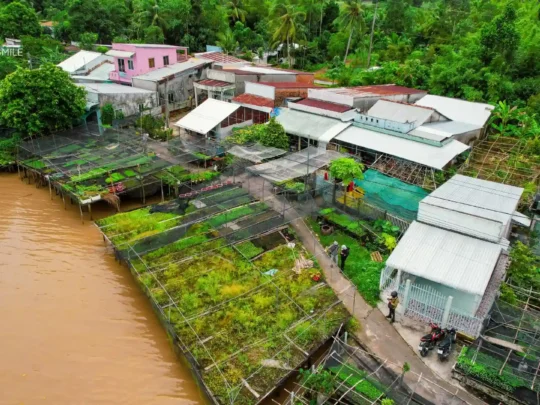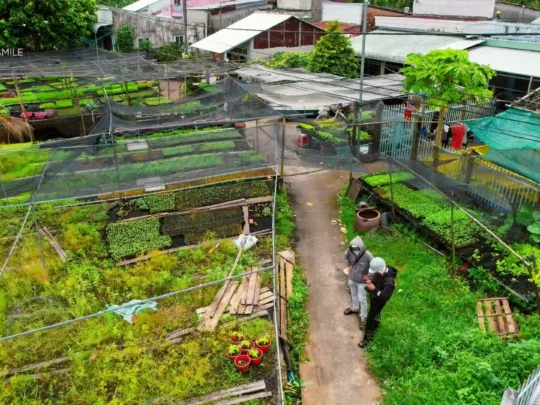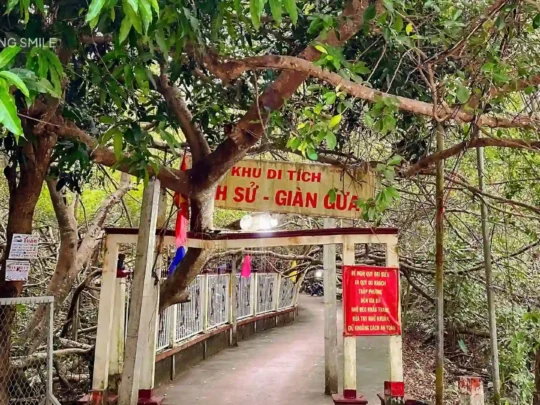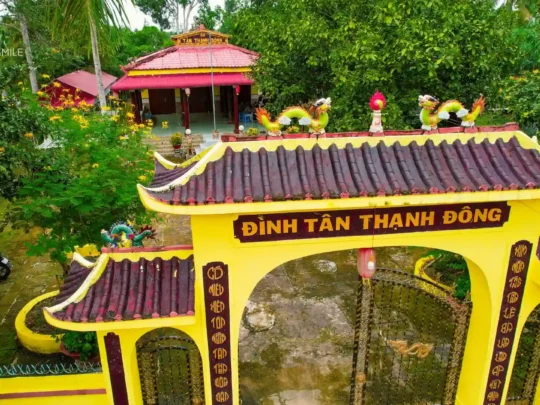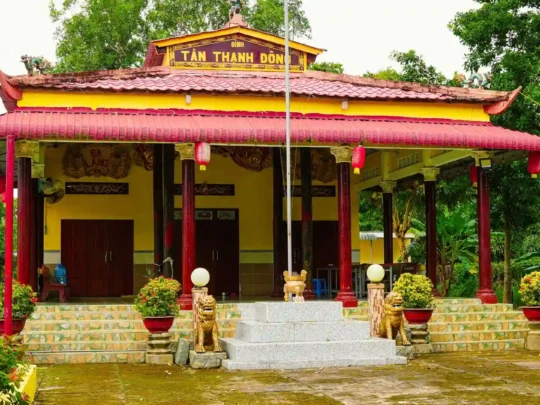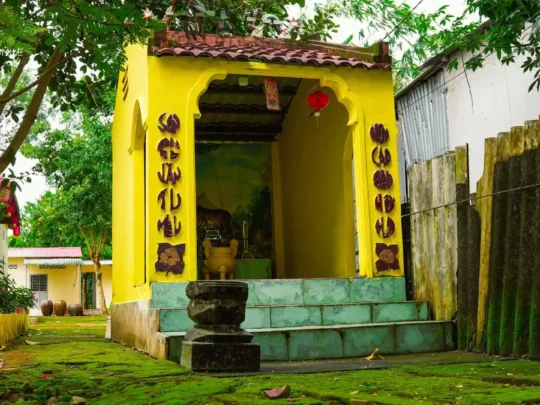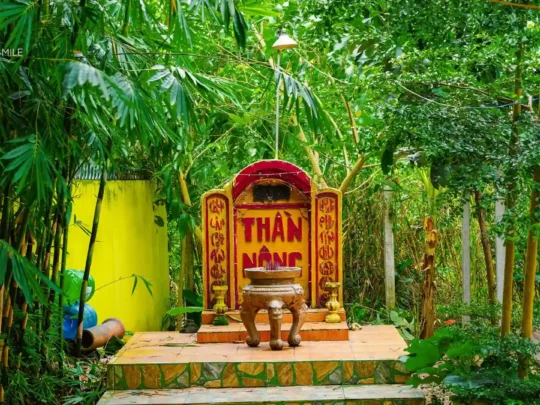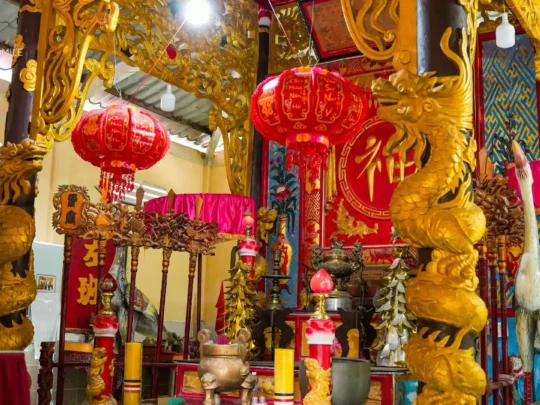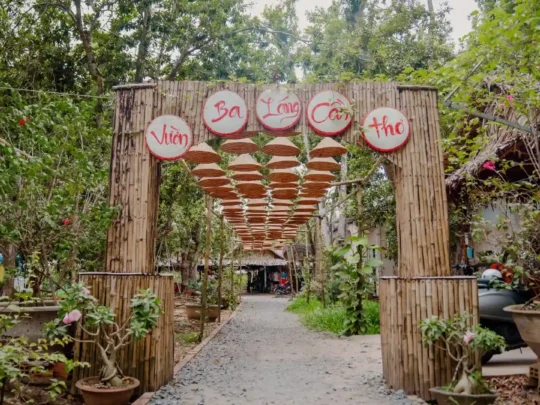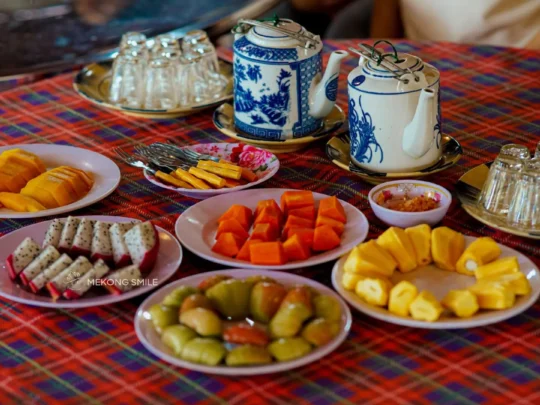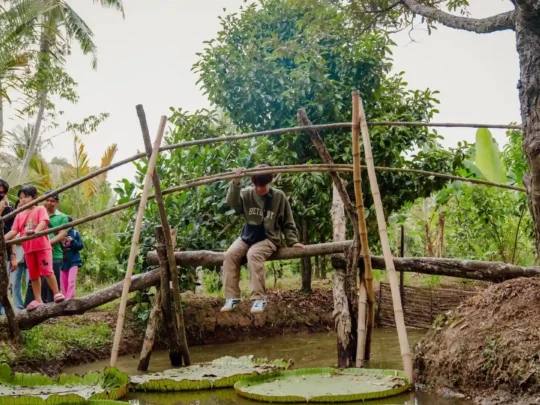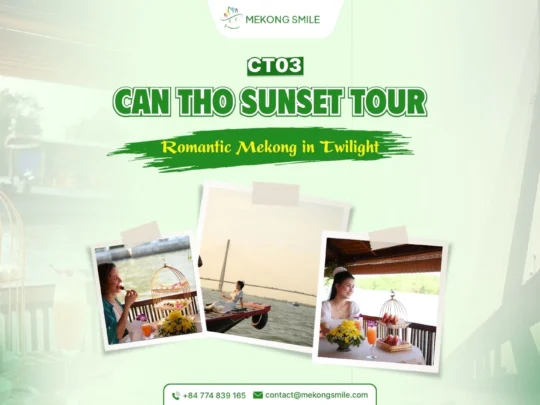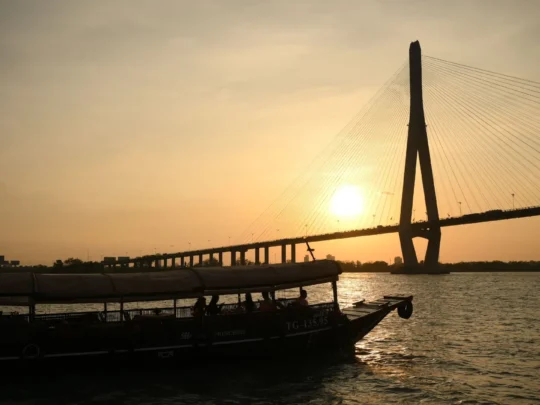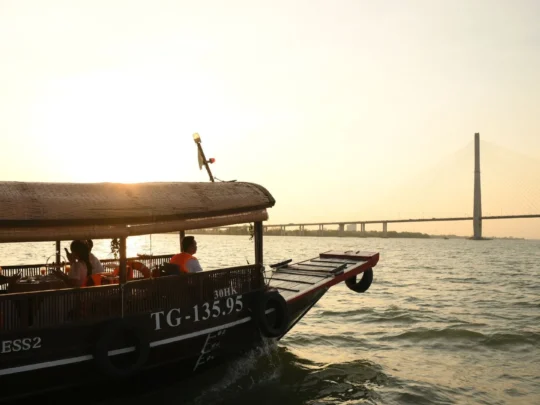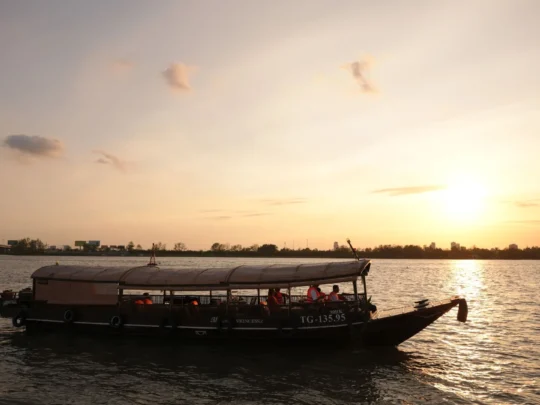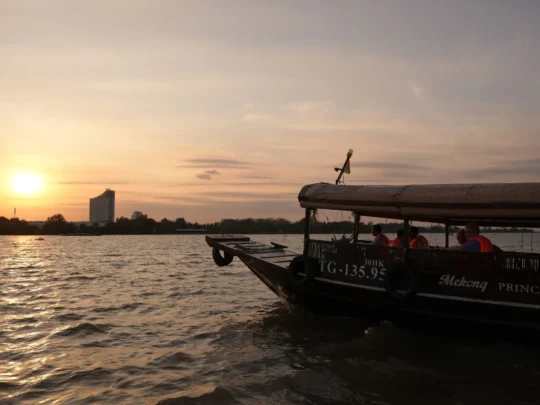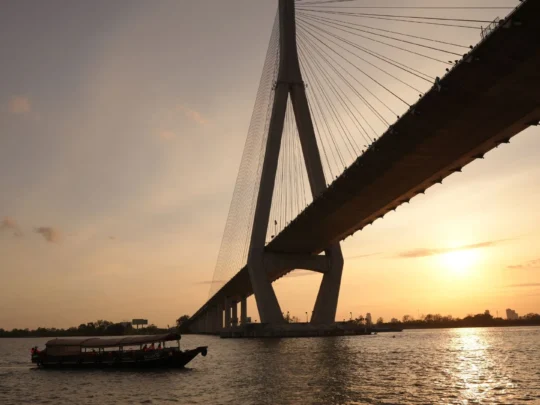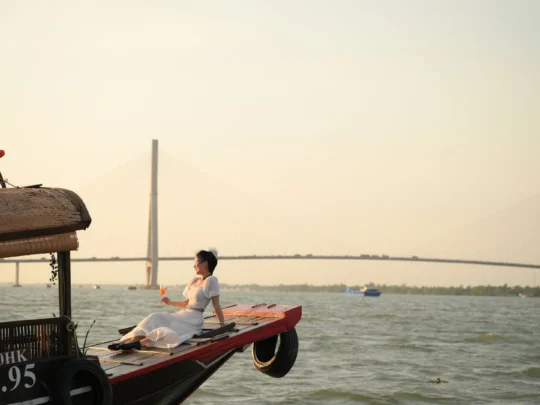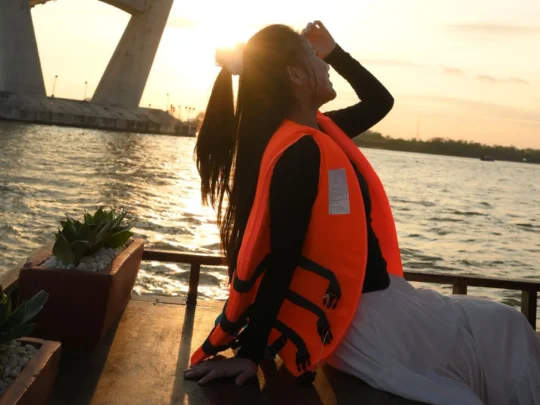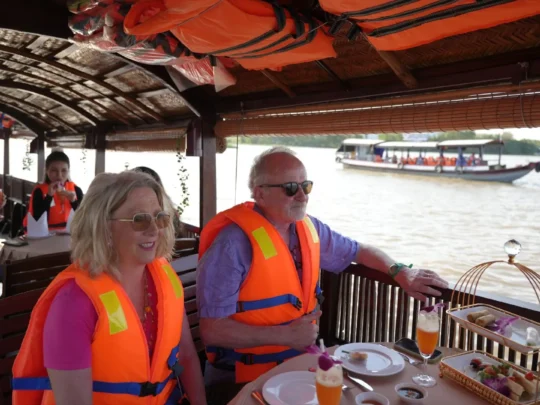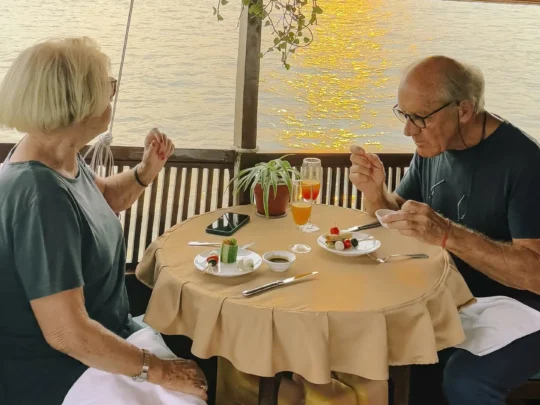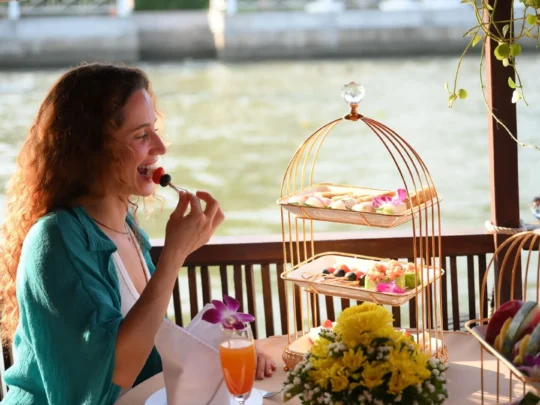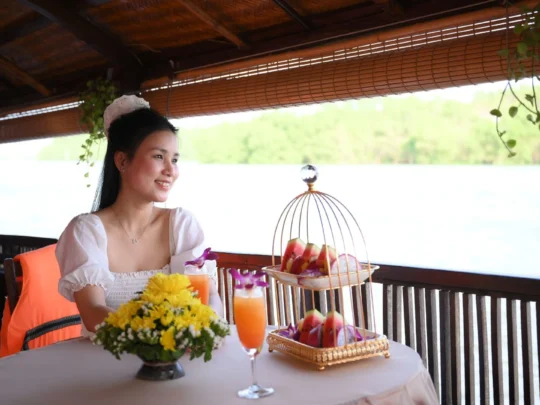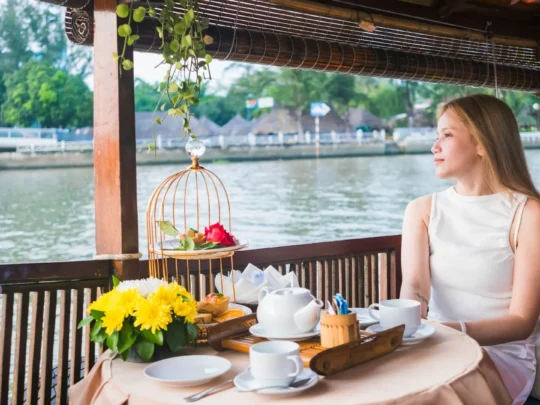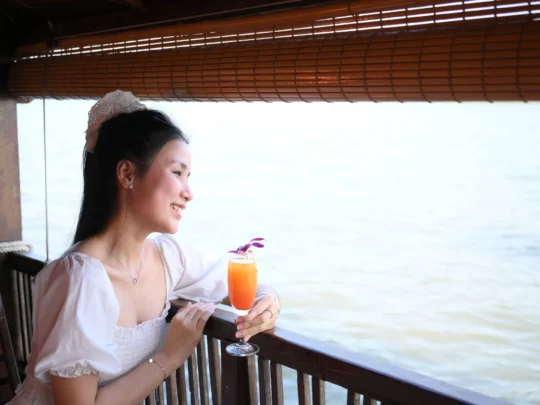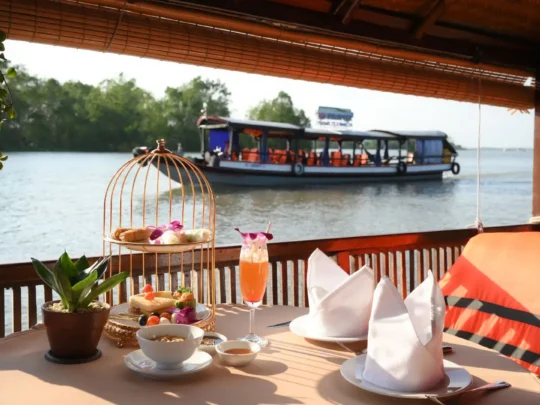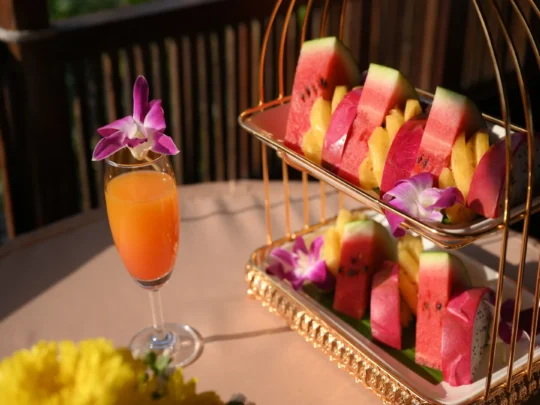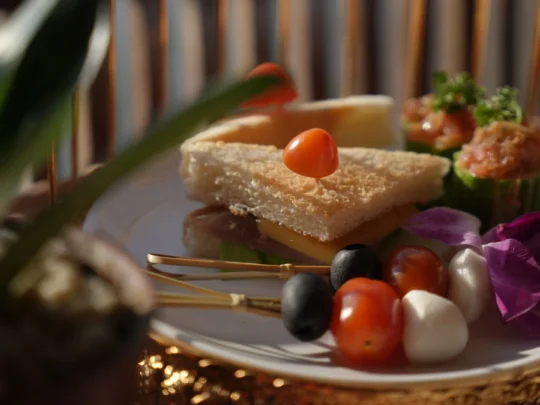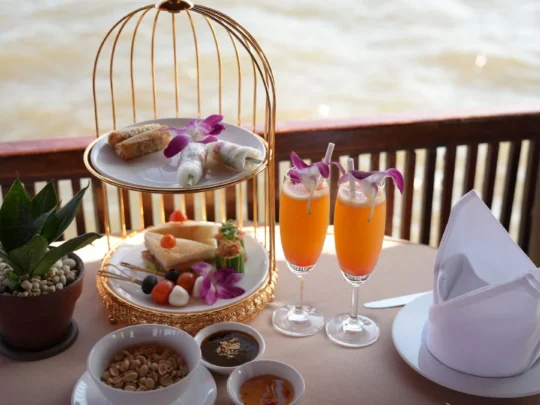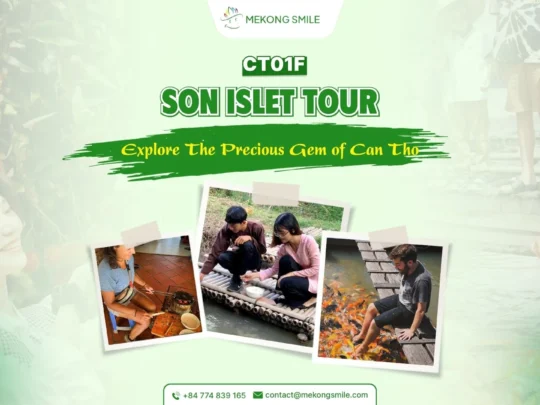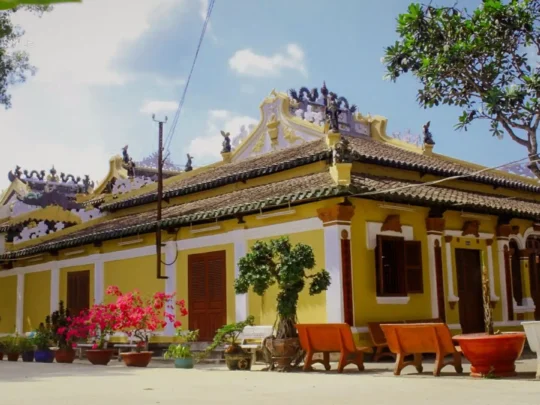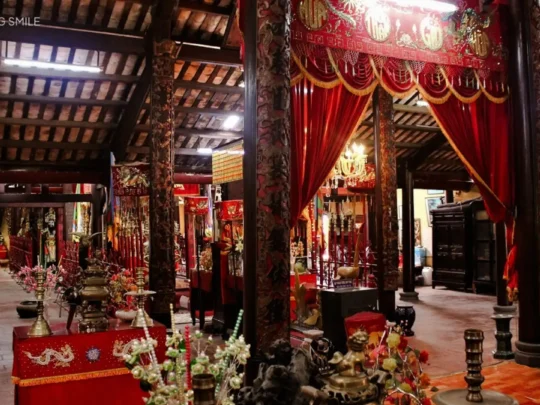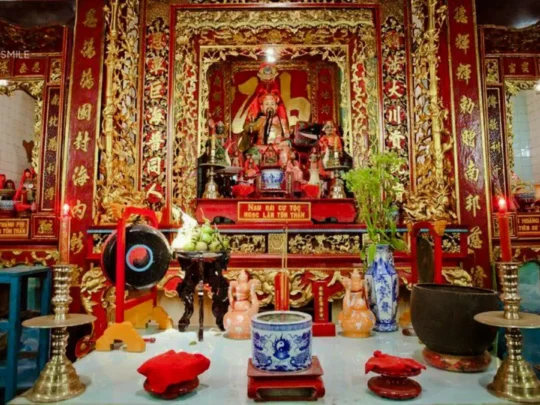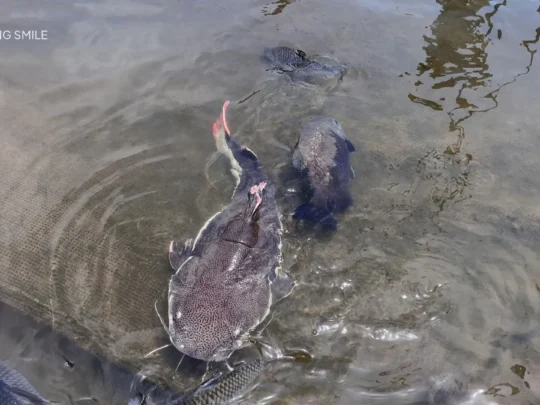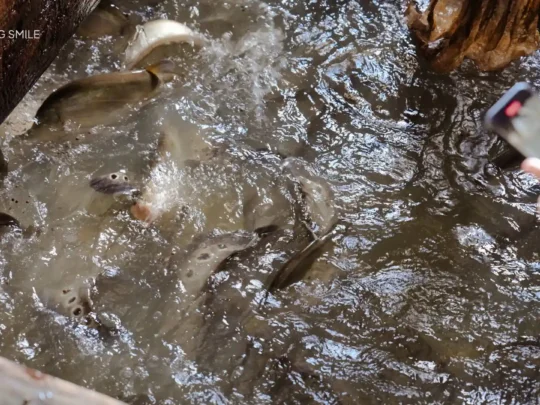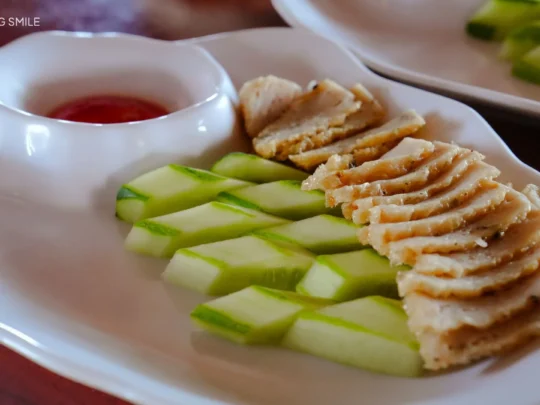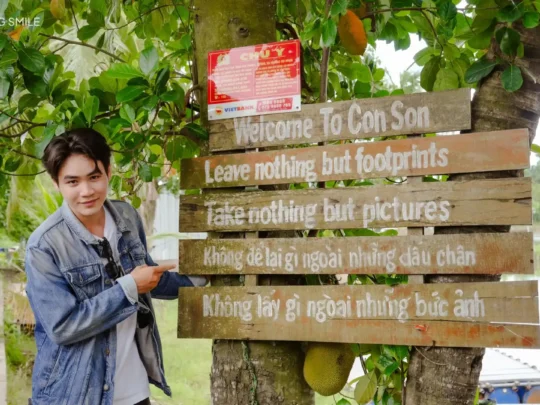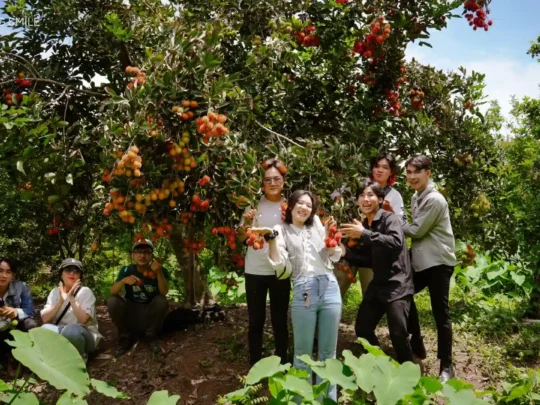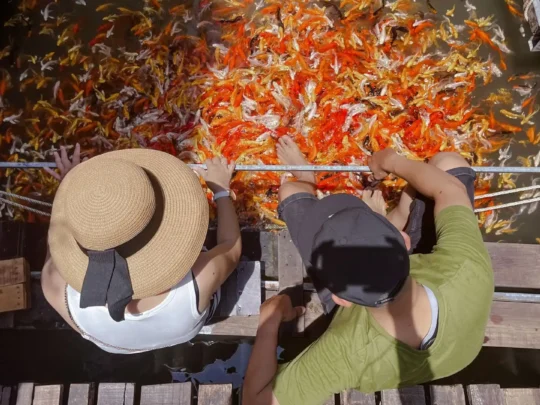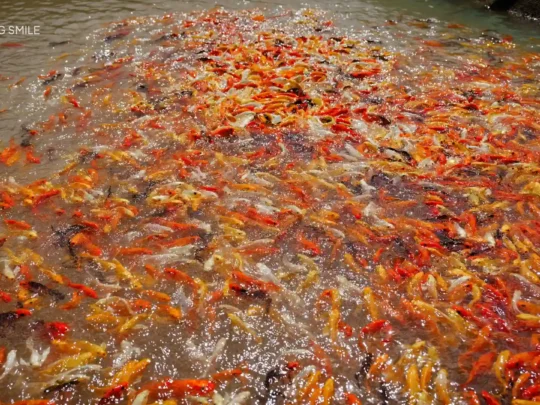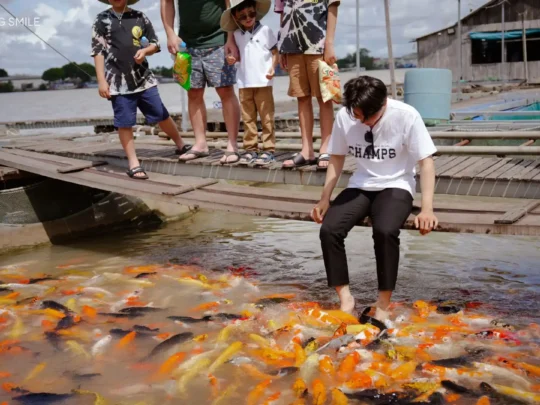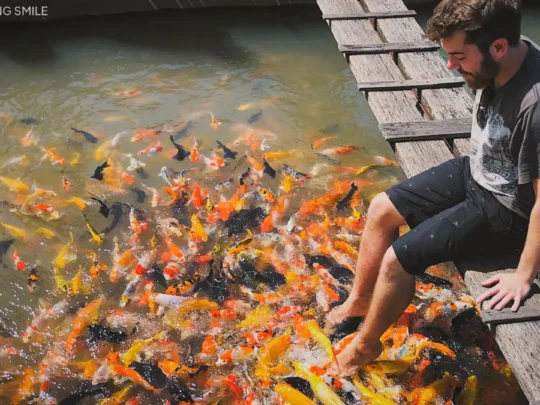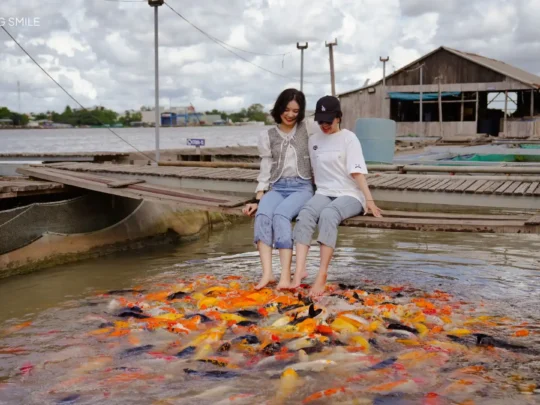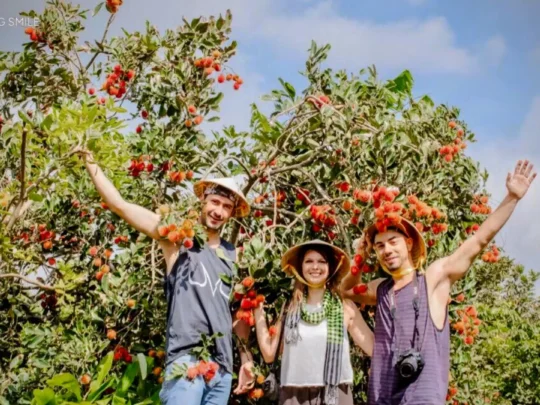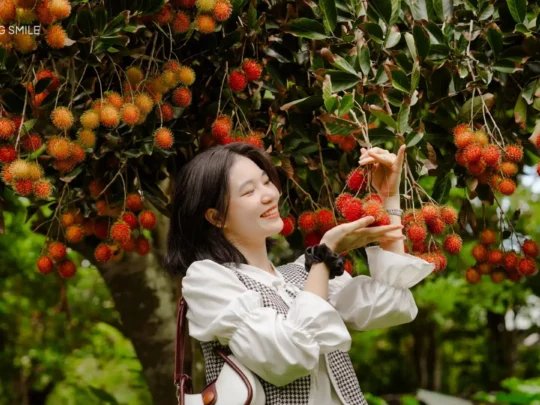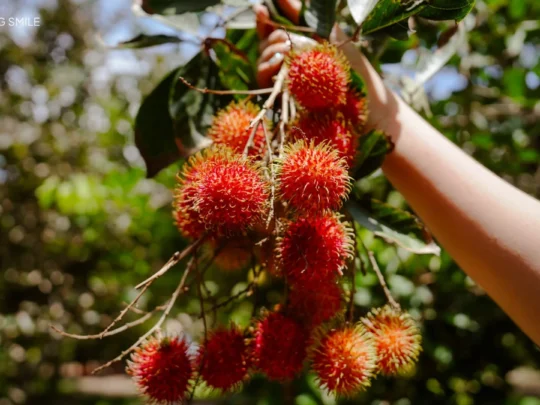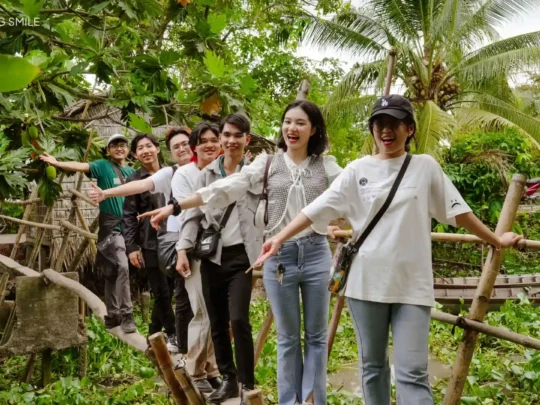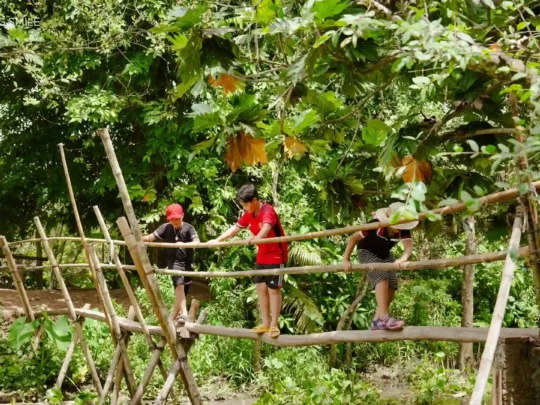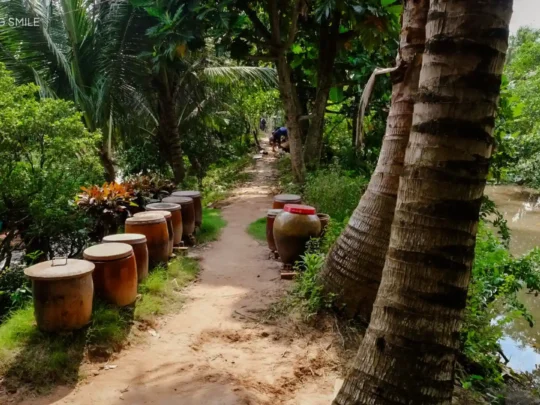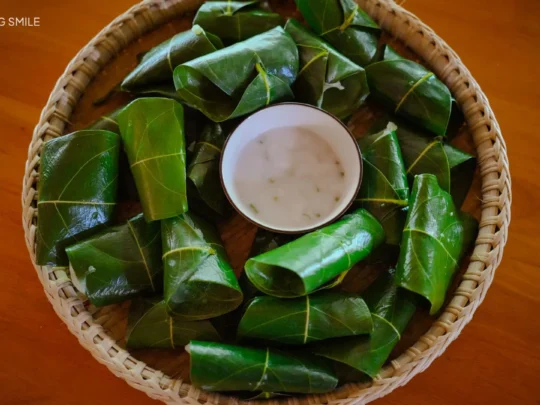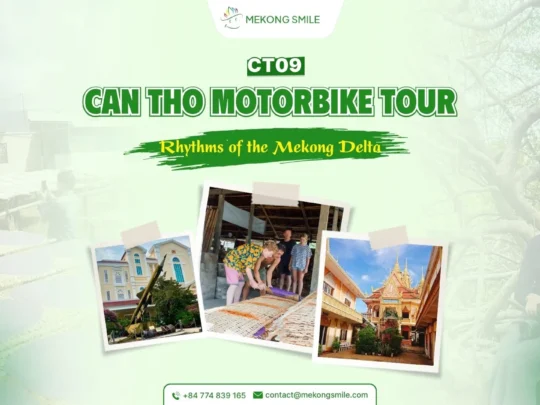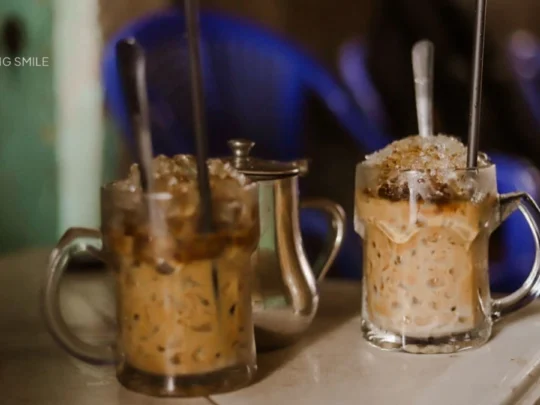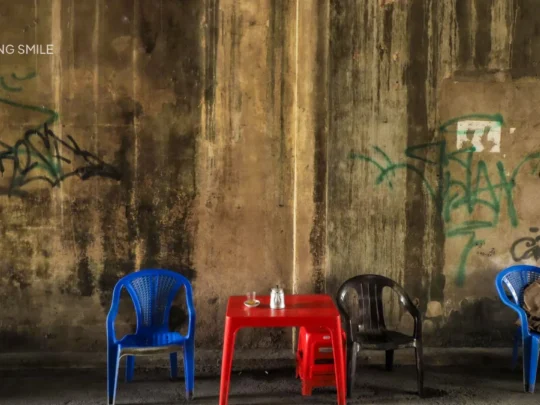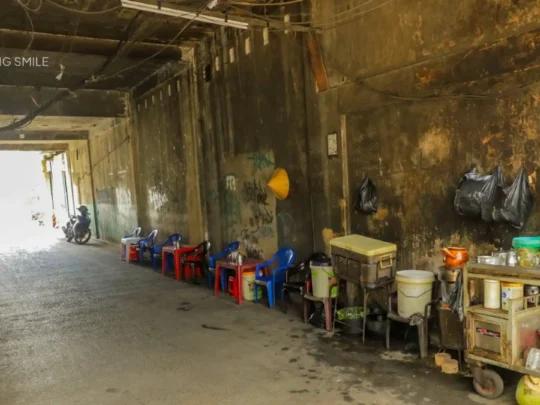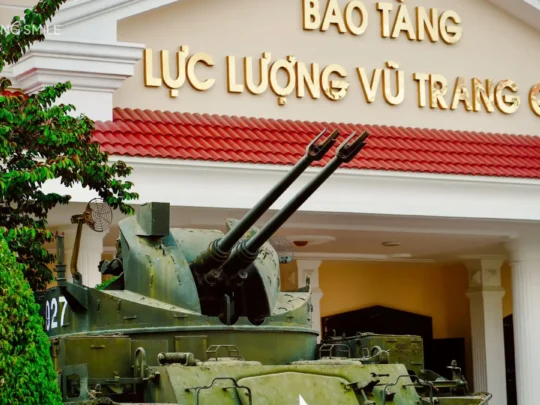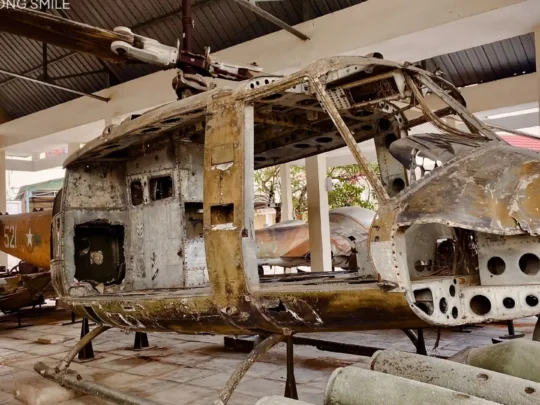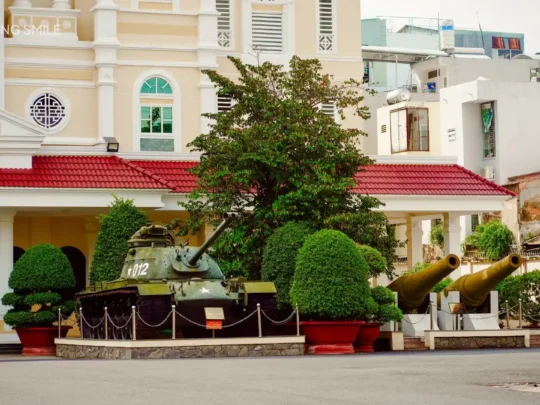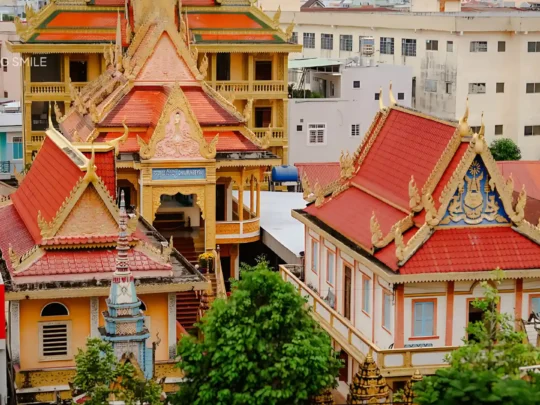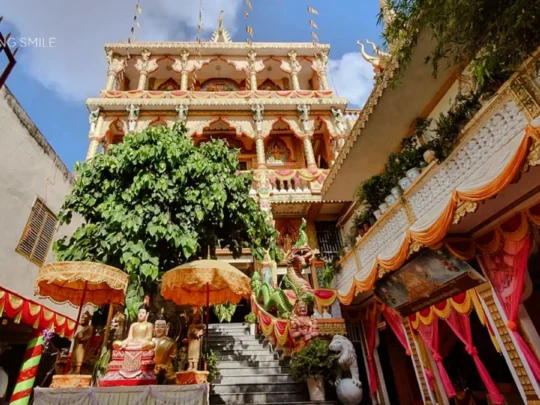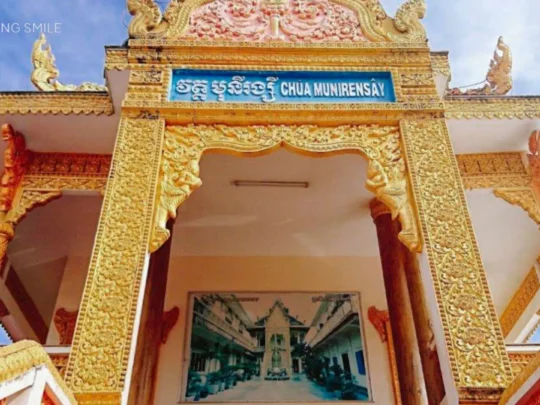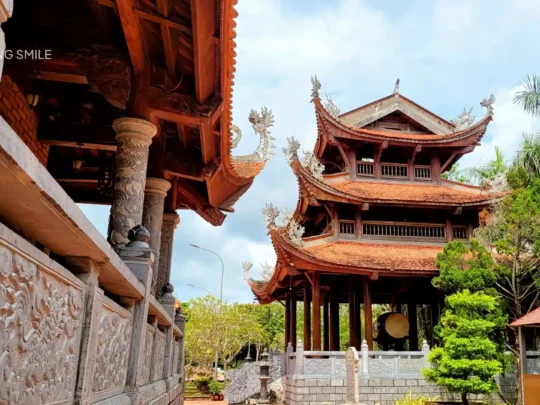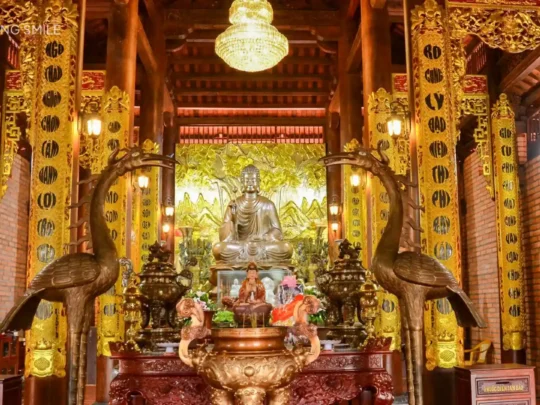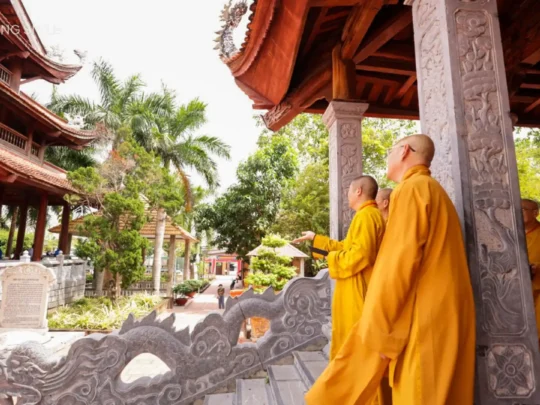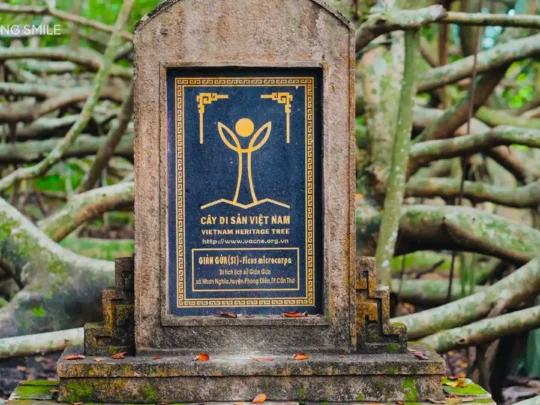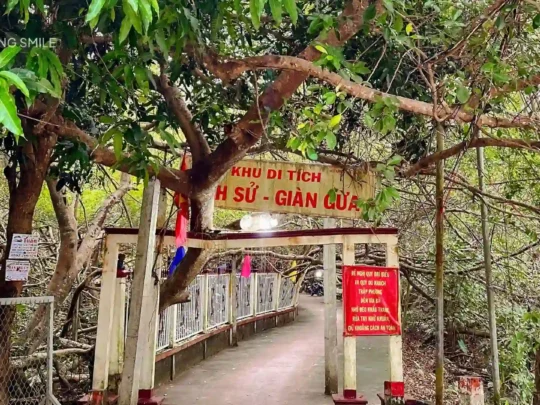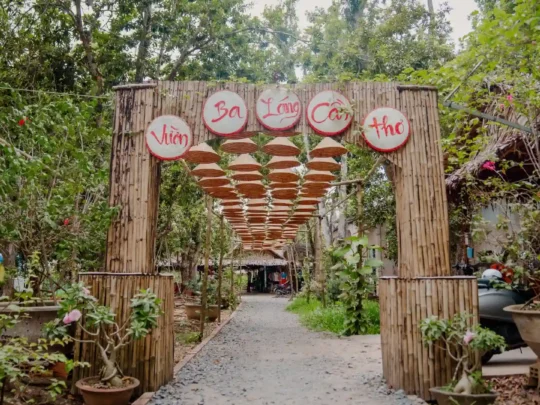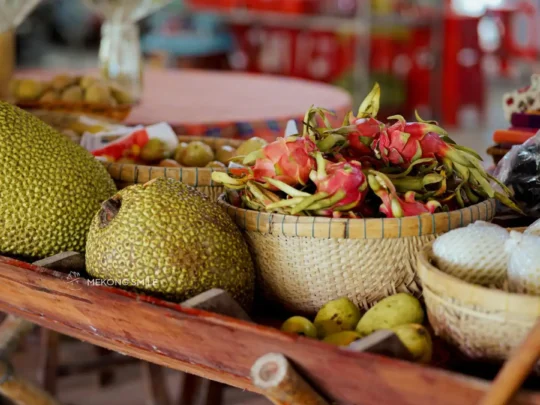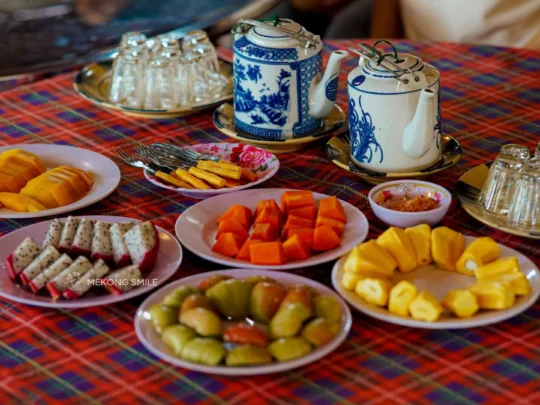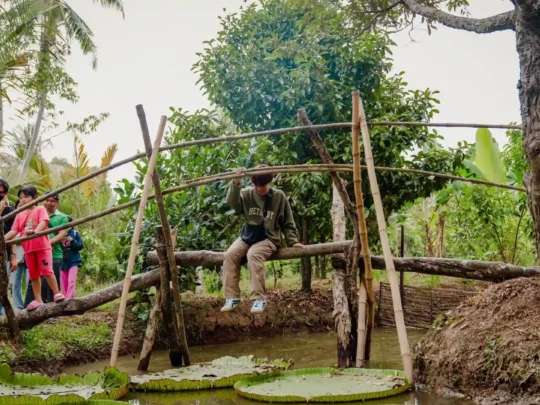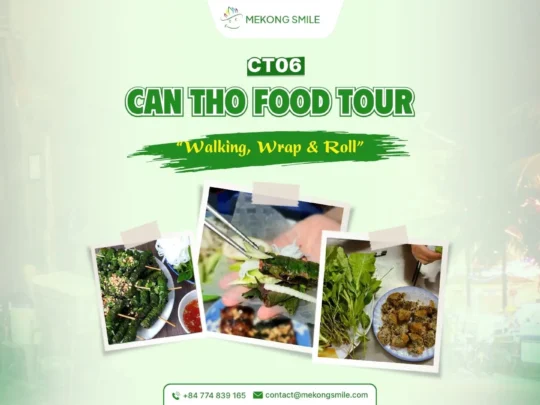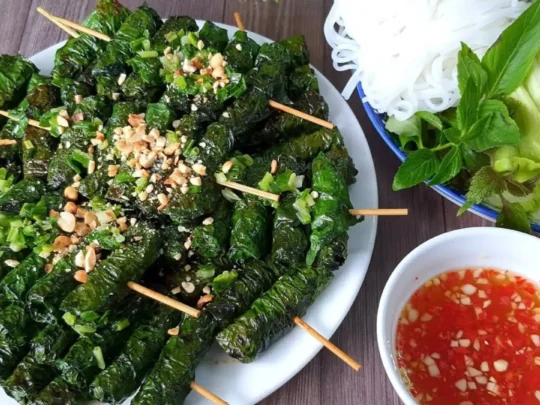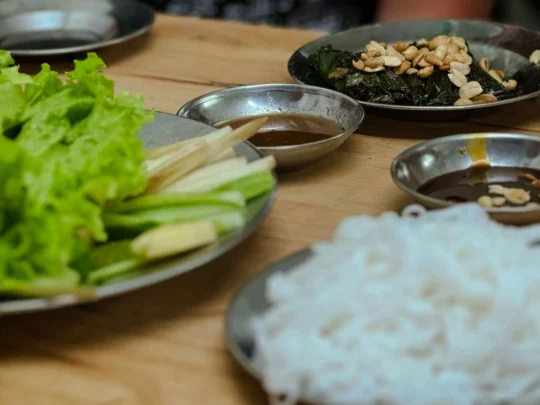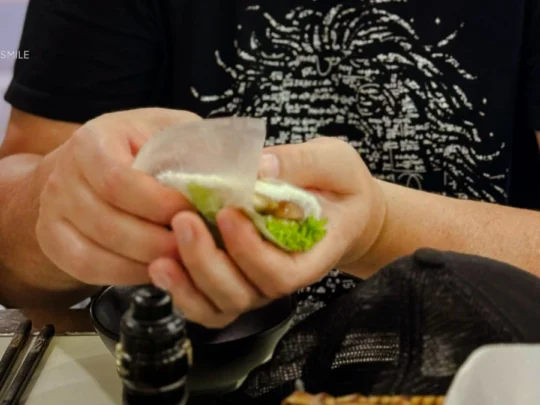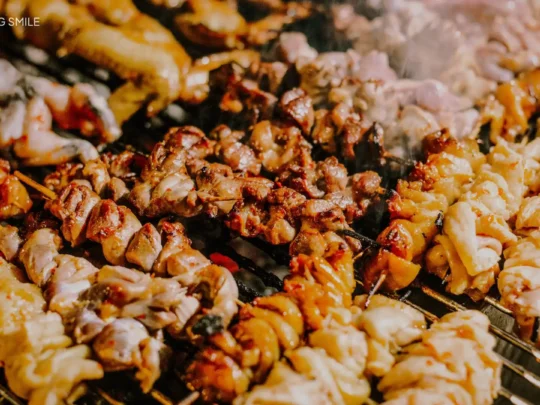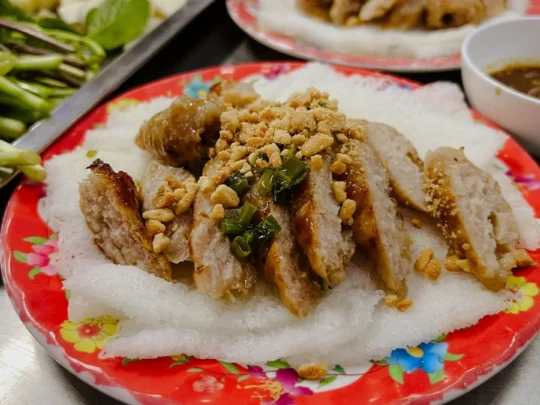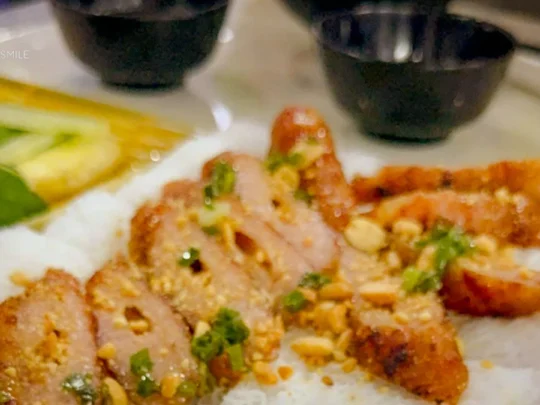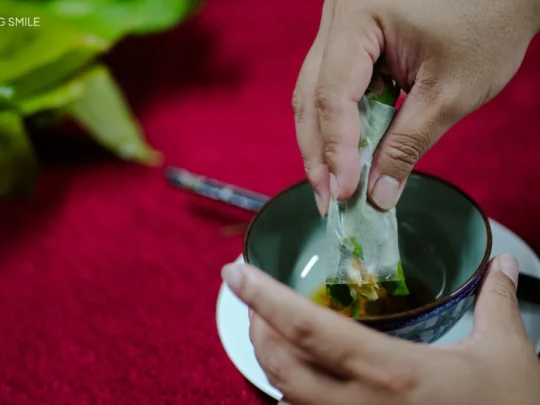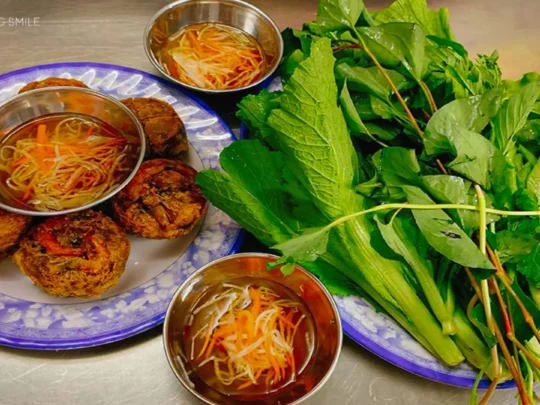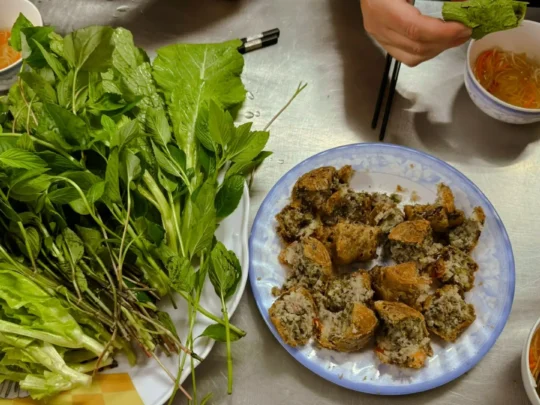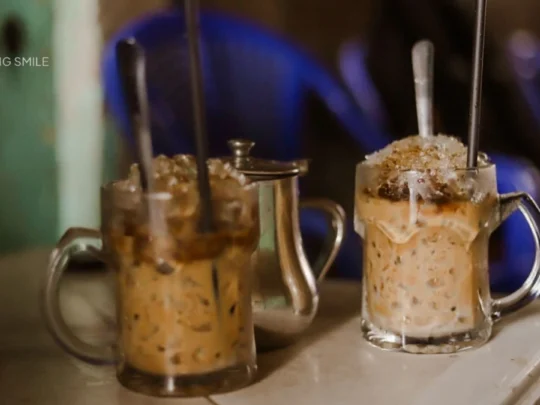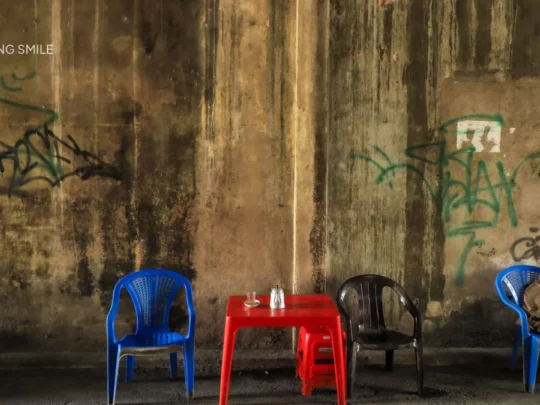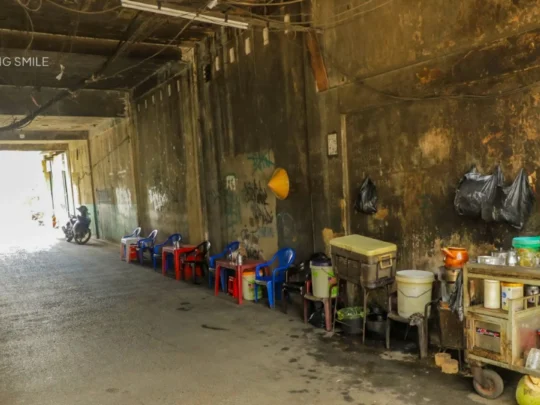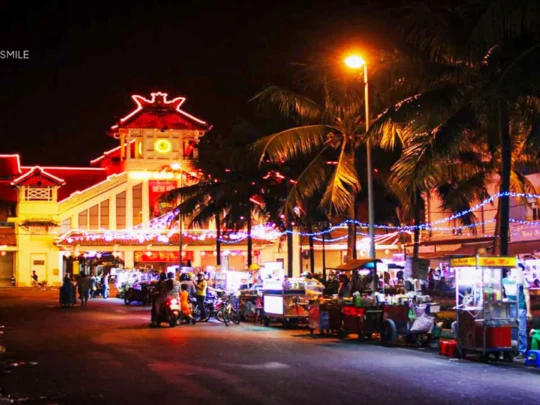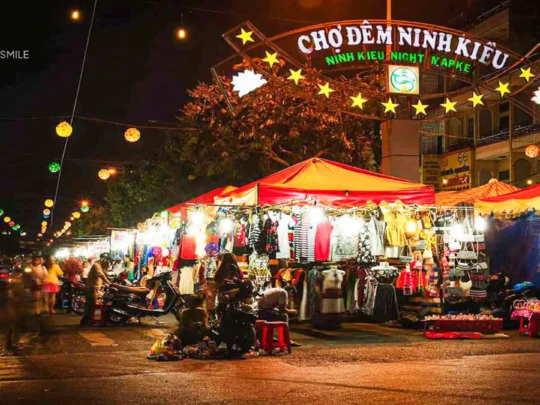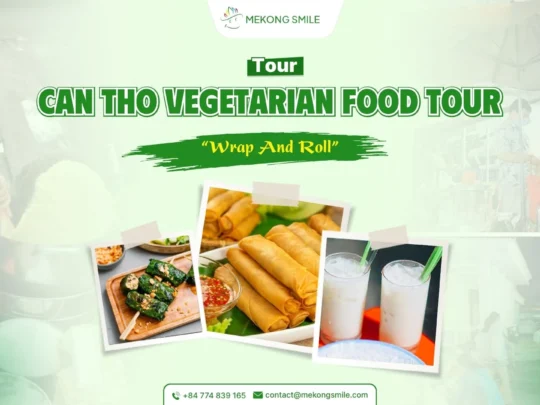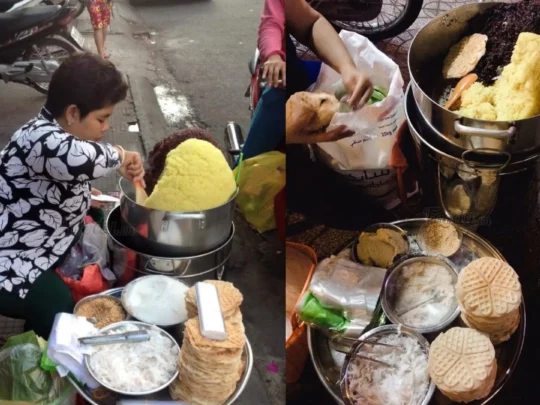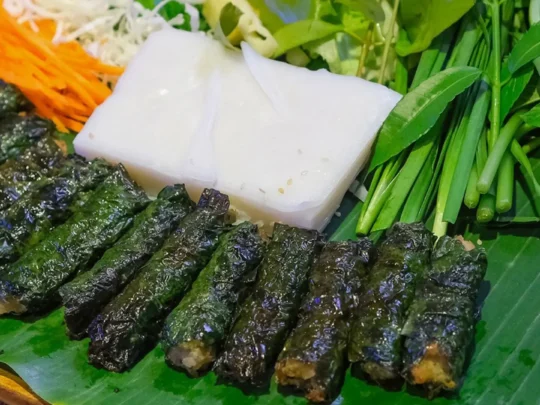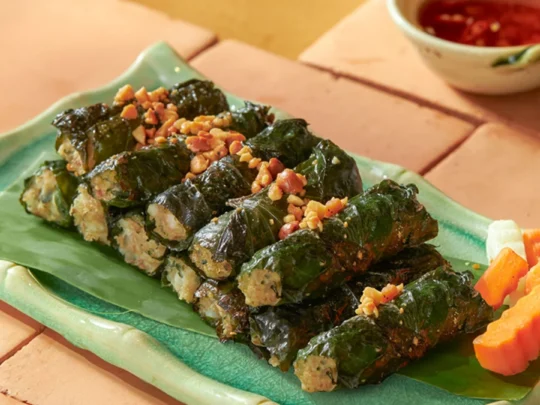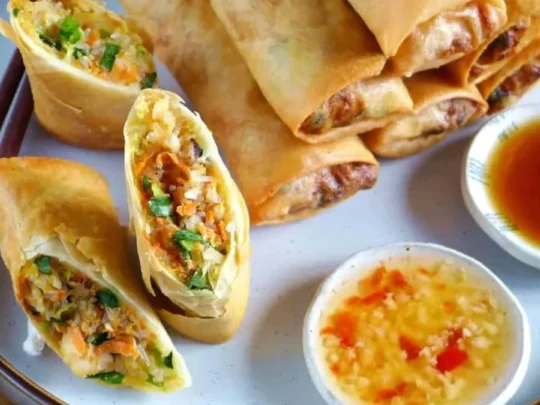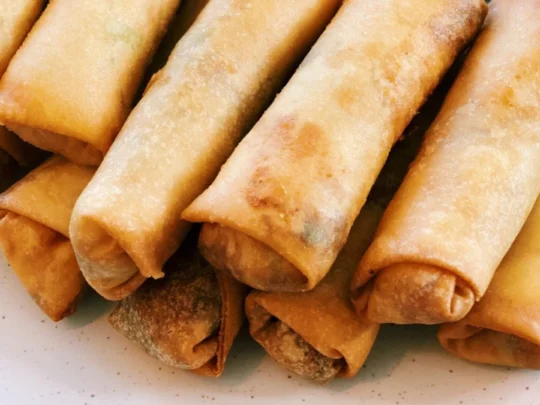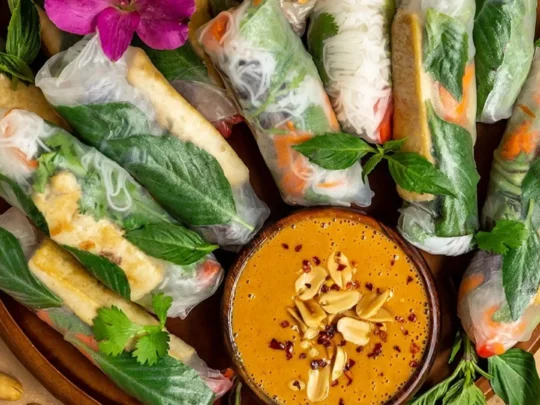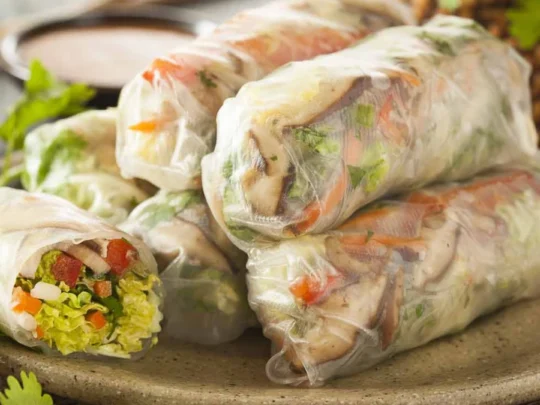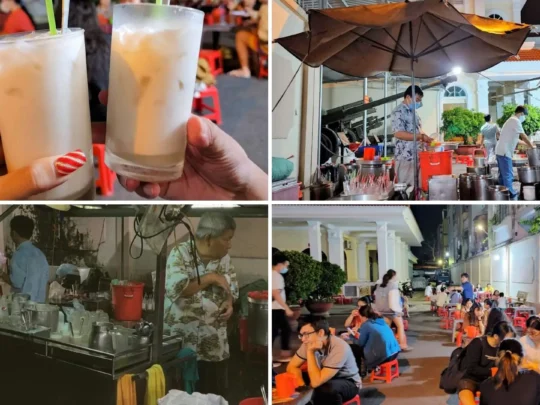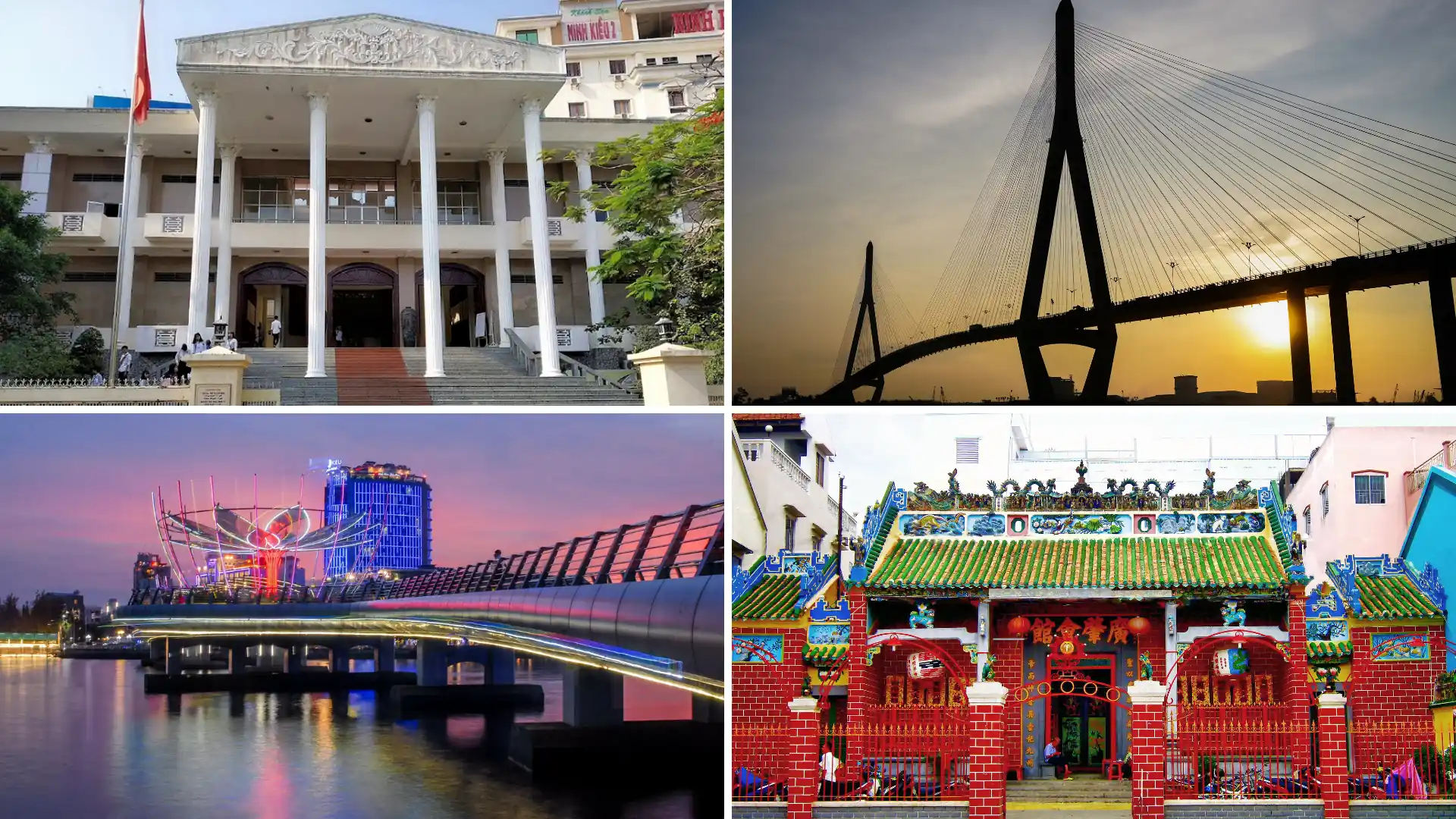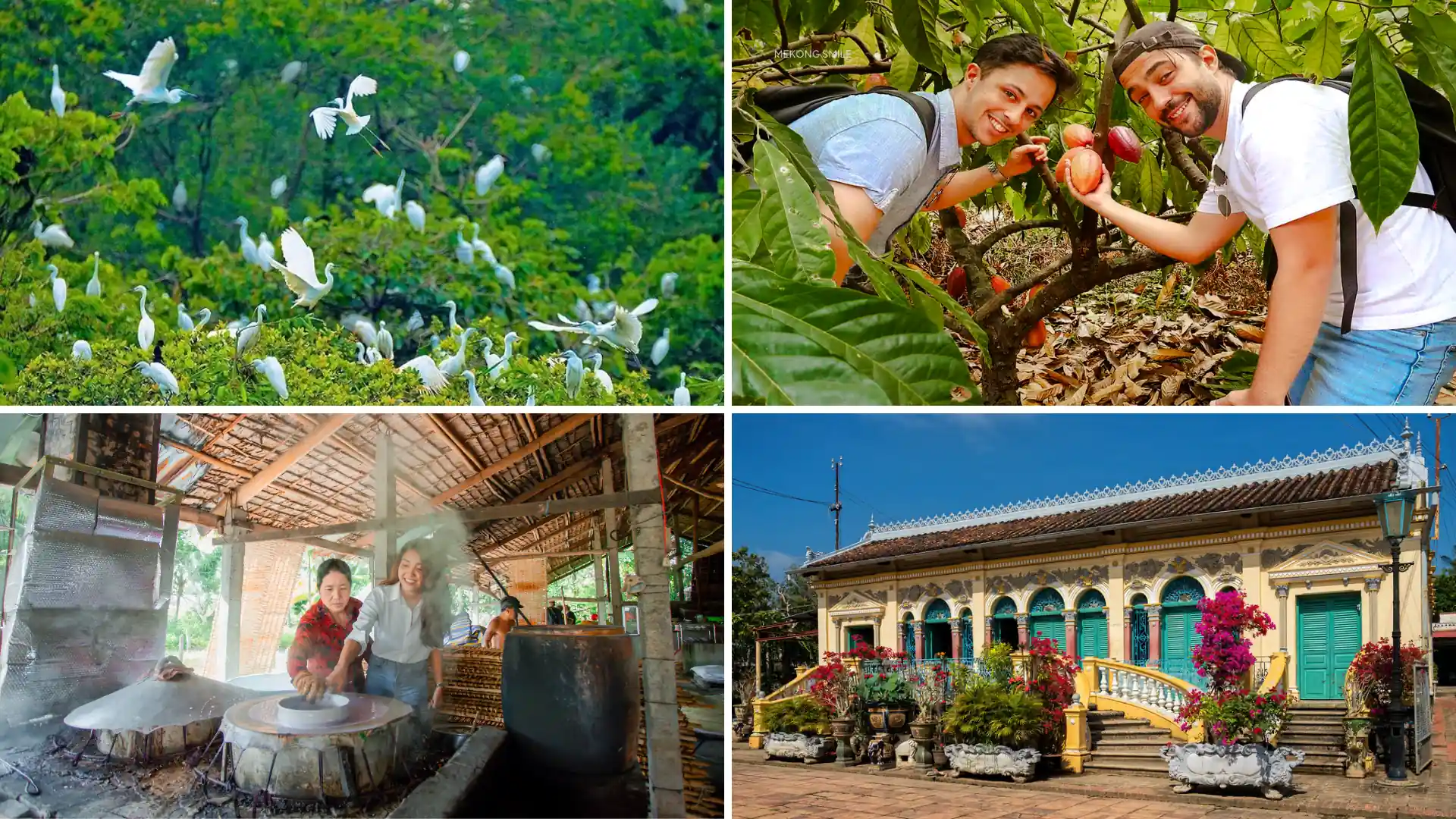As the beating heart of the Mekong Delta, the Cai Rang Floating Market in Can Tho captures the essence of life along Vietnam’s waterways — vibrant, authentic, and timeless. Just six kilometers from the city center, this is the largest and most active floating market in Can Tho, where hundreds of boats gather every dawn to trade fresh produce, breakfast dishes, and daily essentials. In this comprehensive Cai Rang Floating Market guide, you’ll discover everything you need to plan your visit: the best time to go, how to get there, what to eat, where to take the best photos, and how to travel responsibly to preserve this cultural gem.
Perfect for those following our Can Tho Travel Guide or joining a Mekong Delta tour, this article helps you experience Cai Rang not as a visitor, but as a participant in one of Vietnam’s most iconic river scenes.
Overview of Cai Rang Floating Market
A glance at Cai Rang Floating Market
- Location: 6 kilometers southwest of Can Tho city center, Can Tho Province, Mekong Delta, Vietnam
- Market Type: Wholesale floating market (authentic working market, not a tourist recreation)
- Size: Largest floating market in the Mekong Delta, with 300-400+ boats daily
- Operating Hours: Daily, 5:00 AM – 9:00 AM (peak activity 5:00-7:00 AM)
- Best Visiting Time: Early morning (5:00-7:00 AM) during dry season (December-April)
- Average Visit Duration: 2-3 hours
- Approximate Cost: $10-20 USD for group tours; $40-80 USD for private boat tours
- Access: Boat from Ninh Kieu Wharf or other Can Tho piers (30-45 minutes)
Catch a glimpse of Can Tho’s Cai Rang Floating Market
Why Cai Rang Floating Market is Unmissable
Cai Rang stands apart from other floating markets in Vietnam and Southeast Asia. With over 400 boats gathering daily, it’s the largest floating market in the Mekong Delta, creating an incredible spectacle of organized chaos on the water.
What makes Cai Rang truly special is its authenticity. While tourism has certainly discovered this gem, the market remains predominantly a wholesale trading hub where Mekong Delta farmers sell their produce to retailers from across the region.
The market also showcases the unique cây bẹo system, where vendors hang samples of their goods on tall bamboo poles, creating a distinctive skyline of pineapples, melons, vegetables, and other produce that serves as a living advertisement visible from afar.
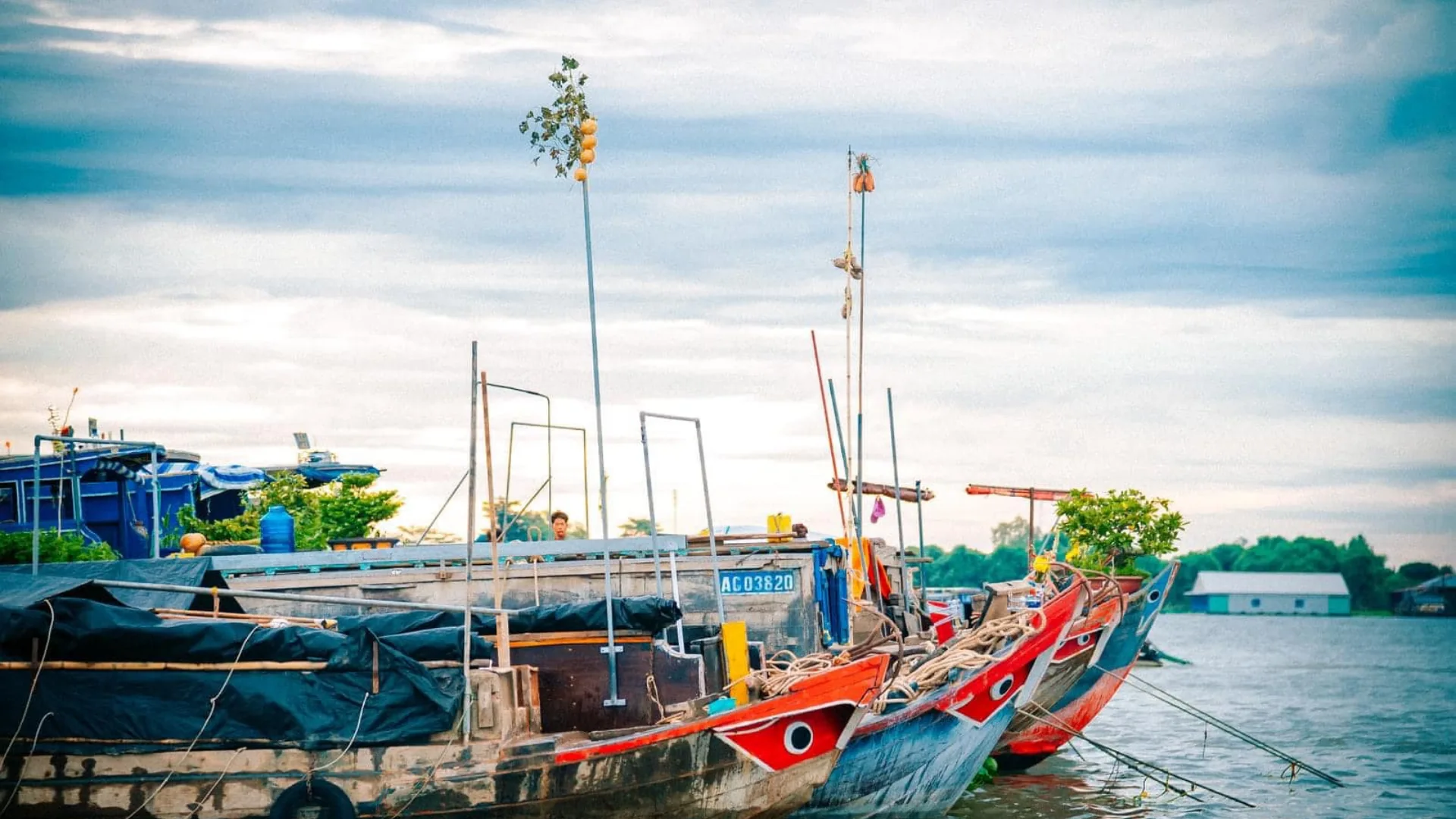
The Best Time to Visit Cai Rang Floating Market
- Early Morning (5:00-7:00 AM): This is peak time. The market is at its busiest, with hundreds of boats jostling for position as wholesale transactions occur at a frenetic pace.
- Mid-Morning (7:00-9:00 AM): Still very active with excellent atmosphere. The sun is higher, providing better lighting for photography, though it can get hot quickly.
- After 9:00 AM (not recommended ): The market winds down considerably. Most wholesale boats have departed, and you’ll miss the main action.
- Seasonal Considerations:
- The dry season (December through April) offers the most comfortable weather conditions and is considered high season.
- However, the rainy season (May through November) has its own charm—fewer tourists, more authentic interactions, and dramatically lower prices.
- Fruit lovers should plan visits around harvest seasons: dragon fruit peaks in summer, longan in July-August, rambutan in May-June, and durian (love it or hate it) from April to August.
Wake up before sunrise to see the Cai Rang Floating Market at its most authentic hour
How to Get to Cai Rang Floating Market
From Can Tho City Center
The market is approximately 6 kilometers southwest of Can Tho city center, accessible via several routes:
- Boat Tours from Ninh Kieu Wharf or other piers along Can Tho’s waterfront (Most Popular): The traditional and most atmospheric way to reach Cai Rang.
- Cai Rang Floating Market Tour offers round-trip transportation, a guide, and breakfast on the water. The journey is about 5-6 hours, allowing you to experience the Mekong Delta waterways at their most authentic experiences.
- Motorbike/Car: You can ride or drive to the Cai Rang Bridge area where an observation tower provides a bird’s-eye view of the market. This land-based option costs less but misses the immersive boat experience.
Take a boat from Ninh Kieu Wharf and drift into the bustling world of Cai Rang
From Ho Chi Minh City
Most international visitors arrive via Ho Chi Minh City (Saigon), located about 170 kilometers northeast of Can Tho:
- Bus: Multiple bus companies operate comfortable sleeper and seating buses between the two cities (3.5-4 hours, $6-10 USD). Buses depart from Mien Tay Bus Station in Saigon.
- Private Car/Taxi: More expensive ($60-80 USD) but offers flexibility and comfort, especially if traveling with a group.
From Can Tho International Airport
Can Tho now has an international airport with connections to Hanoi, Da Nang, and some international destinations. The airport is about 10 kilometers from the city center—a 20-minute taxi ride.
What to See and Experience at Cai Rang Floating Market
The Trading Spectacle
Cai Rang Floating Market operates as a wholesale market where farmers bring produce directly from their fields and orchards to sell to retailers who will distribute goods across the delta region and beyond. The larger boats carry massive quantities of single products (pineapples, watermelons, sweet potatoes, or leafy greens, etc.).
The cây bẹo poles create the market’s iconic skyline. These tall bamboo poles display the vendor’s goods like flags, allowing buyers to spot what they need from hundreds of meters away. It’s an elegant, centuries-old solution to the challenge of advertising on the water.
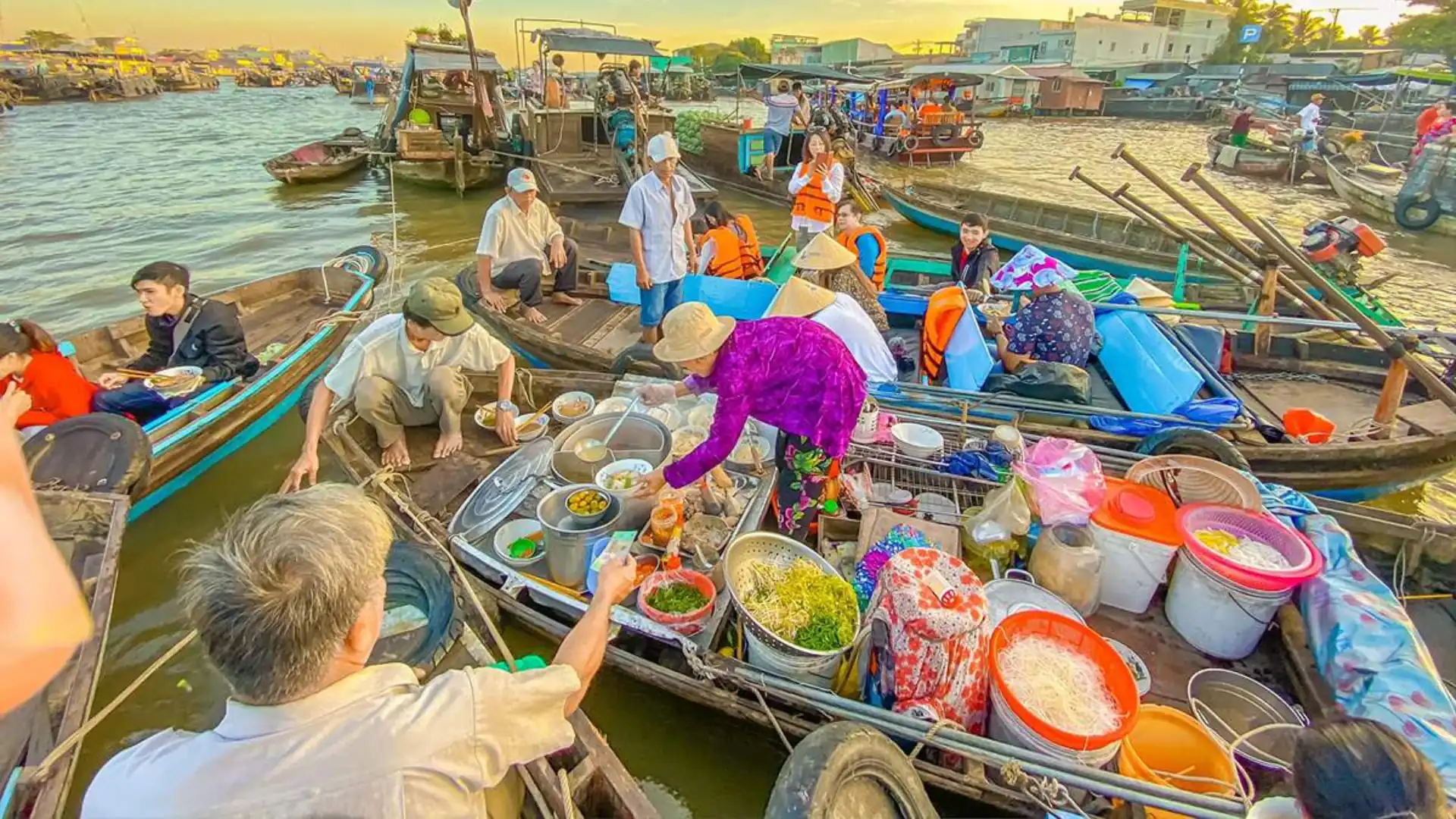
Breakfast on the Water
One of Cai Rang Floating Market’s highlights is the incredible variety of breakfast boats serving hot, fresh food from boat-based kitchens. Don’t miss:
- Vietnamese Coffee Boats: Experience cà phê vợt (the strong, sweet Vietnamese coffee filtered through a cloth strainer) prepared right before your eyes.
- Noodle Boats: Hủ tiếu (pork and seafood noodle soup) and bún riêu (crab noodle soup) are morning staples, served piping hot from cauldrons that somehow remain stable despite the boat movement.
- Bánh Mì Boats: Fresh baguettes filled with pâté, grilled pork, vegetables, and herbs—Vietnam’s beloved sandwich served waterside.
- Tropical Fruit: Purchase incredibly fresh dragon fruit, mangosteen, longan, or rambutan directly from the farmers who grew them. The fruit here is picked at peak ripeness and tastes noticeably better than supermarket varieties.
Enjoy a hot bowl of noodles on your boat
Prices of some common goods on Cai Rang Floating Market
| Product | Unit | Price (VND) | Price (USD) | Notes |
| Dragon Fruit (Thanh Long) | Per kg | 15,000-25,000 | $0.60-1.00 | White flesh cheaper; red flesh premium |
| Pineapple (Dứa/Thơm) | Per piece | 15,000-30,000 | $0.60-1.20 | Size dependent; sweeter varieties cost more |
| Longan (Nhãn) | Per kg | 20,000-40,000 | $0.80-1.60 | Seasonal (July-August); price varies greatly |
| Rambutan (Chôm Chôm) | Per kg | 20,000-35,000 | $0.80-1.40 | Peak season: May-June |
| Mangosteen (Măng Cụt) | Per kg | 30,000-50,000 | $1.20-2.00 | "Queen of fruits"; premium pricing |
| Vietnamese Coffee (Cà Phê) | 1 cup | 15,000-25,000 | $0.60-1.00 | Traditional cloth-filtered; with condensed milk |
| Phở (Noodle Soup) | 1 bowl | 30,000-40,000 | $1.20-1.60 | Beef or chicken; served on boat |
| Hủ Tiếu (Southern Noodle Soup) | 1 bowl | 30,000-40,000 | $1.20-1.60 | Pork and seafood; regional specialty |
| Bánh Mì (Vietnamese Sandwich) | 1 sandwich | 20,000-30,000 | $0.80-1.20 | Fresh baguette with various fillings |
| Bún Riêu (Crab Noodle Soup) | 1 bowl | 30,000-40,000 | $1.20-1.60 | Tomato-based broth |
| Fresh Coconut Water | 1 coconut | 10,000-20,000 | $0.40-0.80 | Served directly from young coconut |
| Bottled Water | 500ml | 5,000-10,000 | $0.20-0.40 | Sealed bottles recommended |
Remember: Prices listed are approximate and vary by season, quality, vendor, and your bargaining skills. The joy of Cai Rang isn’t just the low prices—it’s the experience of participating in centuries-old river commerce traditions
Cultural Interactions
The market provides wonderful opportunities for cultural exchange. Vendors are generally friendly and accustomed to tourists, though they remain focused on their primary business of wholesale trading. A few tips:
- Learn basic Vietnamese greetings (xin chào – hello, cảm ơn – thank you)
- Always ask permission before photographing people close-up
- If you purchase something, it creates a natural opportunity for interaction
- Smile and show genuine interest—universal languages
- Don’t obstruct business transactions between wholesale traders
Meet friendly locals and feel the warmth of authentic Mekong
The top tour to have an authentic Cai Rang Floating Market experience
Essential Tips for Visiting Cai Rang Floating Market
Photography Guide
Best Shots from Your Boat:
- Close-ups of cây bẹo poles with produce samples
- Vendor portraits (always ask first)
- Boat-to-boat trading interactions
- Food preparation on cooking boats
- The organized chaos of boats navigating narrow waterways
- Reflections in the water during calm moments
Photography Tips:
- Golden hour (shortly after sunrise) offers the best light
- Bring a polarizing filter to manage water reflections
- Fast shutter speeds for hand-held shooting from a moving boat
- Waterproof protection for cameras (spray and splashes are inevitable)
- Respect privacy—skip the photos if someone seems uncomfortable
What to Bring
Essential Items:
- Cash in small denominations (20,000-50,000 VND notes): Cards aren’t accepted
- Sun protection: Hat, sunglasses, sunscreen (SPF 50+)
- Light, modest clothing: Long sleeves protect from sun; respect local culture
- Water: Stay hydrated in the tropical heat
- Camera with waterproof protection
- Light jacket: Early morning on the water can be surprisingly cool
- Motion sickness medication if you’re prone to seasickness
- Hand sanitizer: Limited washing facilities
Leave Behind:
- Valuables (minimize what you bring)
- Large bags (space is limited on boats)
- Expectations of Western-style bathrooms
Cultural Etiquette and Responsible Tourism
Cai Rang Floating Market faces the delicate challenge of balancing tourism with its primary function as a working market. Practice responsible tourism:
Do’s:
- Purchase items from vendors when possible
- Show respect for people’s work
- Ask permission before close-up photography
- Learn a few Vietnamese phrases
- Hire local guides who support the community
- Dispose of trash properly (bring a bag for waste)
Don’ts:
- Don’t obstruct business transactions
- Avoid touching merchandise without permission
- Don’t expect vendors to perform for photos
- Minimize plastic use (bring reusable water bottles)
- Don’t haggle aggressively—prices are already very low
- Avoid loud, disruptive behavior
Nearby Attractions to Combine with Can Tho Cai Rang Floating Market
Can Tho City Attractions
- Ninh Kieu Wharf: Scenic riverfront promenade, perfect for evening strolls
- Can Tho Bridge: Illuminated beautifully at night
- Ong Pagoda: Historic Chinese temple with impressive architecture
- Can Tho Museum: Learn about Mekong Delta history and culture
Explore more of Can Tho’s nearby landmarks and cultural sites after your market visit
Mekong Delta Experiences
- Bang Lang Stork Sanctuary: Thousands of storks in a protected cajuput forest
- Traditional Craft Villages: Watch rice paper, coconut candy, and handicrafts being made
- Fruit Orchards: Walk through longan, rambutan, and dragon fruit farms
- Binh Thuy Ancient House: 19th-century French-Vietnamese colonial mansion
Extend your journey with scenic canal rides and fruit garden visits
The Future of Can Tho Floating Market
Cai Rang Floating Market faces an uncertain future. Improved road infrastructure, changing commerce patterns, and younger generations choosing different livelihoods threaten this centuries-old tradition. Tourism provides economic incentive for preservation, but also risks transforming an authentic market into a cultural theme park.
MekongSmile believe tourism can be a force for good—not just observing culture, but actively preserving it. Our company has committed to comprehensive, long-term preservation of Cai Rang Floating Market through measurable, transparent initiatives that directly benefit the vendor community and river ecosystem.
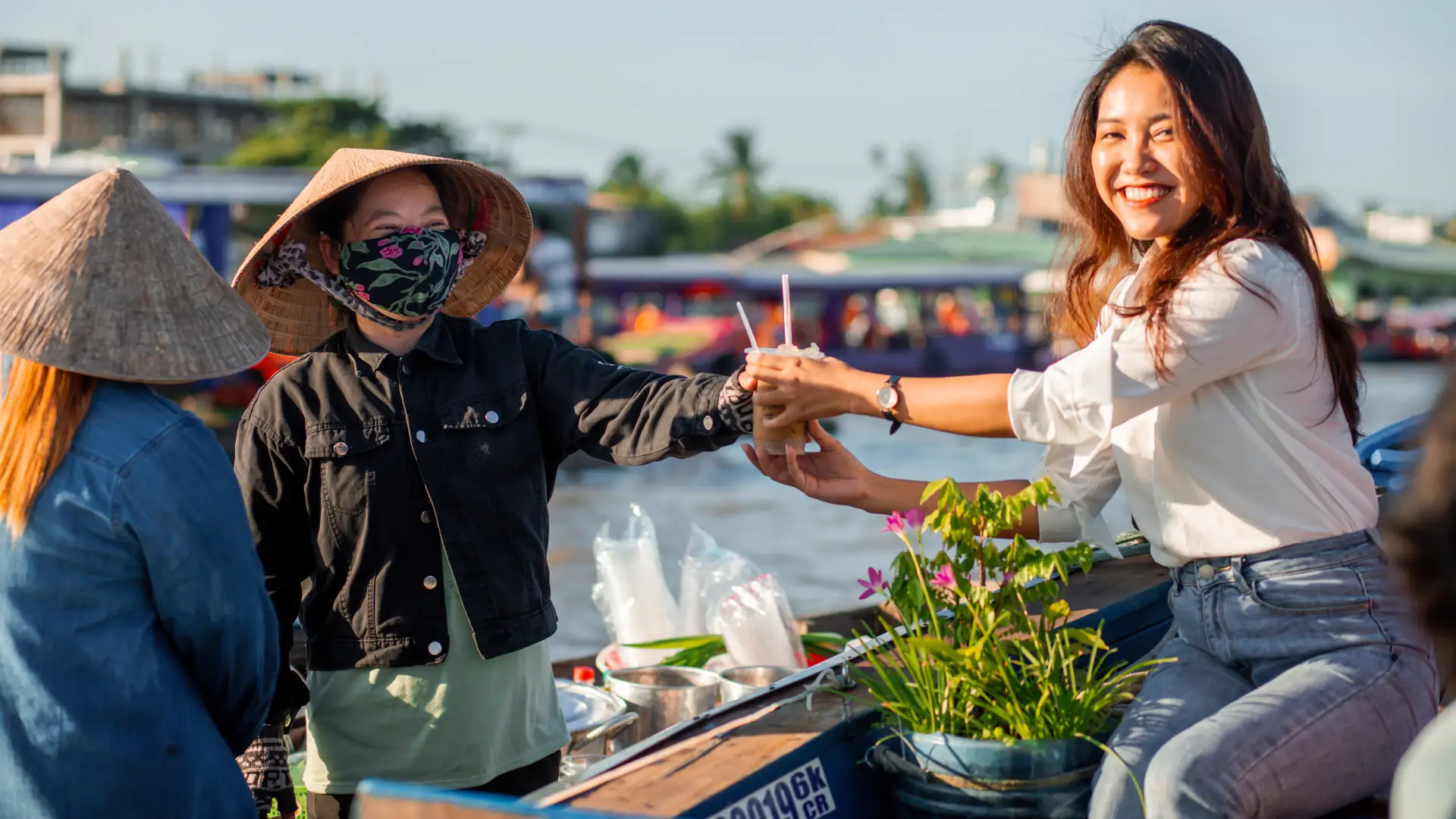
Book your authentic Cai Rang Floating Market Tour
Get your free personalized Mekong itinerary - Leave your info and our local expert will respond within 5 minutes to help you design your most authentic trip:
Frequently Asked Questions (FAQs) about Cai Rang Floating Market
Is Cai Rang Floating Market worth visiting?
Absolutely. It’s one of the most authentic cultural experiences in Vietnam, offering a window into traditional Mekong Delta life that’s rapidly changing. The early wake-up is a small price for witnessing this remarkable tradition.
Do I need a tour or can I go independently?
Tours offer convenience, cultural context, and logistical ease. Independent visits are possible but require more effort and Vietnamese language skills. First-time visitors benefit most from guided tours.
Is it safe for families with children?
Yes, with precautions. Ensure children wear life jackets (provided on tour boats), watch for slippery surfaces, and supervise them carefully near the boat edges. The experience is generally calm and suitable for kids who can sit still for 2-3 hours.
What if I get seasick?
The boats move slowly on relatively calm waters, so severe seasickness is rare. Take medication preventatively if you’re prone to motion sickness, focus on the horizon, and sit in the middle of the boat where movement is minimal.
Are there bathrooms?
Facilities are extremely limited. Use the bathroom before departing. Some tour routes include stops at riverside homes with basic facilities.
What language is spoken?
Vietnamese is the primary language. English proficiency varies—tour guides speak English, but market vendors typically don’t. This shouldn’t deter you, as smiles and gestures go far.
Which hotels offer the easiest access to Cai Rang Floating Market?
Victoria Can Tho Resort (has private pier), Azerai Can Tho, Vinpearl Hotel Can Tho, Sheraton Can Tho, Nam Bo Boutique Hotel, TTC Hotel Premium Can Tho, Muong Thanh Luxury Can Tho Hotel, Anh Dao Mekong Hotel

